https://www.blackgate.com/
The Sword & Planet Tales of Ralph Milne Farley
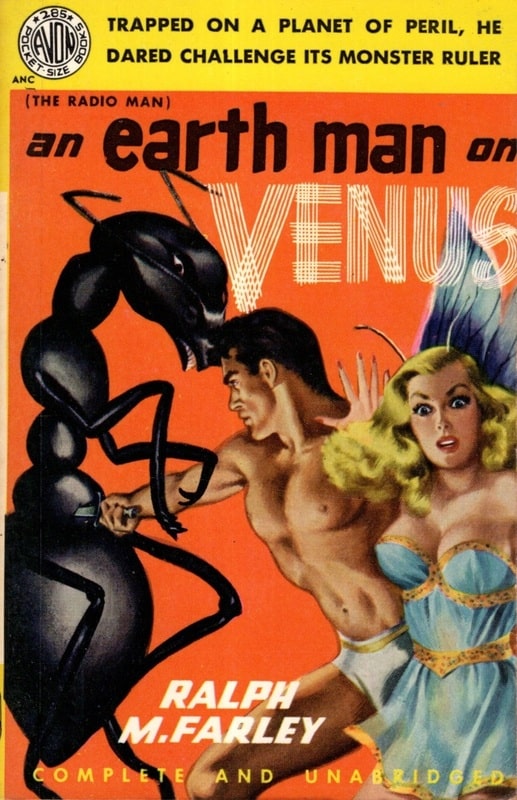
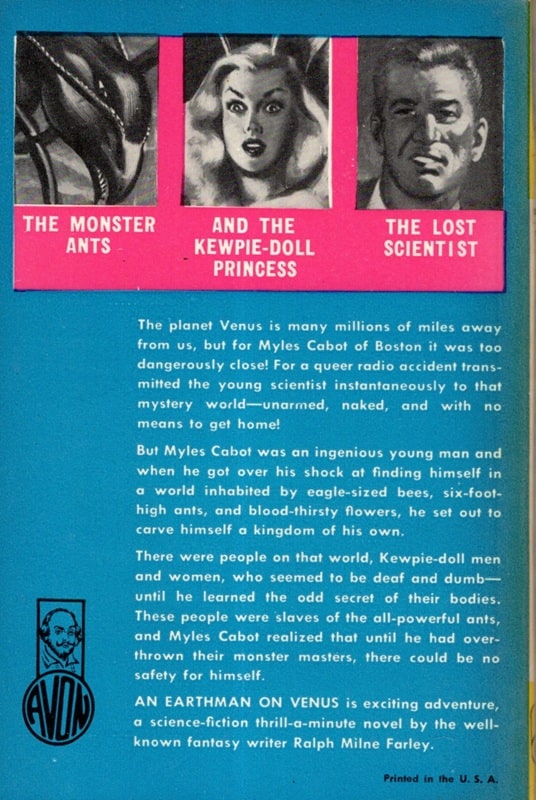
An Earthman on Venus (Avon, 1950). Cover by Raymond Johnson
Ralph Milne Farley (1887 – 1963) was a pseudonym for Roger Sherman Hoar. Hoar was a Massachusetts senator and an attorney general, so I can understand his use of a pseudonym to write his SF stories under, but I can’t imagine why he’d choose one just as long and awkward as his real name, and even less memorable.
At any rate, Farley was friends with Edgar Rice Burroughs and wrote his own series of Sword & Planet adventures sometimes called the Radio series, since most of the books featured the term radio in their titles.
[Click the images for non antmen-sized versions.]
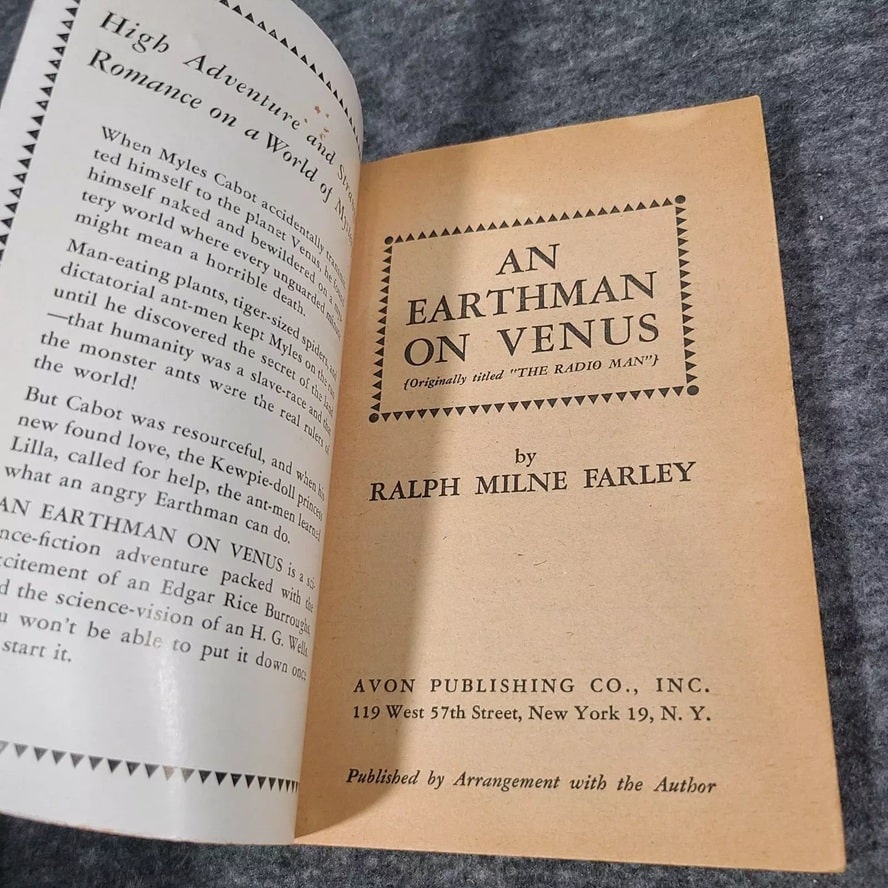 Inside cover of An Earthman on Venus
Inside cover of An Earthman on Venus
As far as I can see, there are about ten titles in this series, but I’ve only read the first two (covers shown above and below):
The Radio Man (or An Earthman on Venus): Avon Books, (Raymond Johnson cover), 1924/1950
The Radio Beasts: Ace Books, (Ed Emshwiller cover), 1925/1964
In The Radio Man, an Earth scientist named Myles Cabot invents a transmission device that uses radio and accidentally transmits himself to Venus, where he finds human-like beings — including a princess — who are enslaved by intelligent, horse-sized ants who use radio waves for communication. Cabot uses his technical know how to create guns for the humans and leads a revolt.
The story was inventive and fun but without nearly as much action and derring-do as ERB’s John Carter stories.
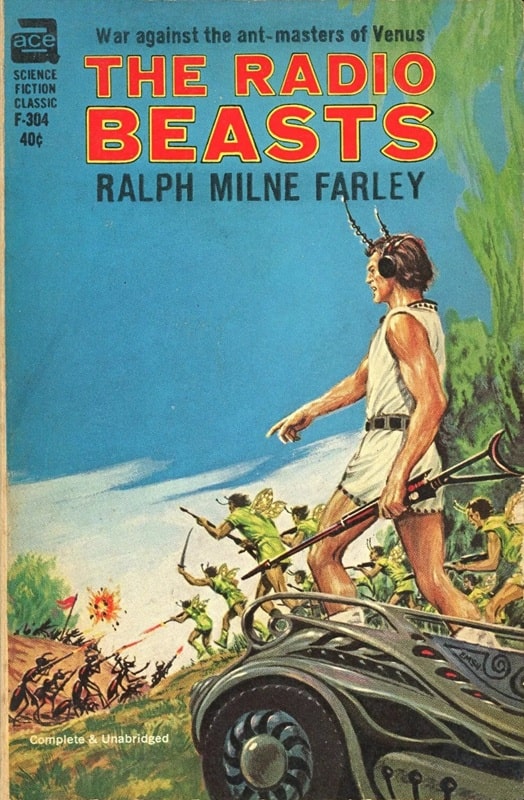
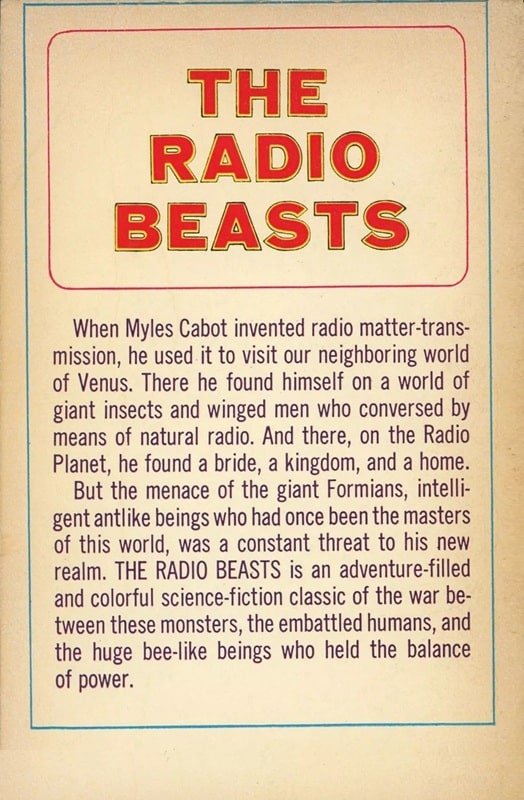
The Radio Beasts (Ace Books, February 7, 1964). Cover by Ed Emshwiller
The sequel, The Radio Beasts, was also readable but didn’t seem to add much to the overall story, and the writing doesn’t have the flair and color of ERB.
I don’t, at present, have any intention of reading the rest of the volumes, which — as far as I’m aware — consist of:
The Radio Planet
The Radio Flyers
The Radio Gun-Runners
The Golden Planet
The Radio Menace
The Radio Man Returns
The Radio Minds of Mars
The Radio War
Charles Gramlich administers The Swords & Planet League group on Facebook, where this post first appeared. His last article for Black Gate was Of Men, Monsters, and Little People.
The Beating Heart of Science Fiction: Poul Anderson and Tau Zero
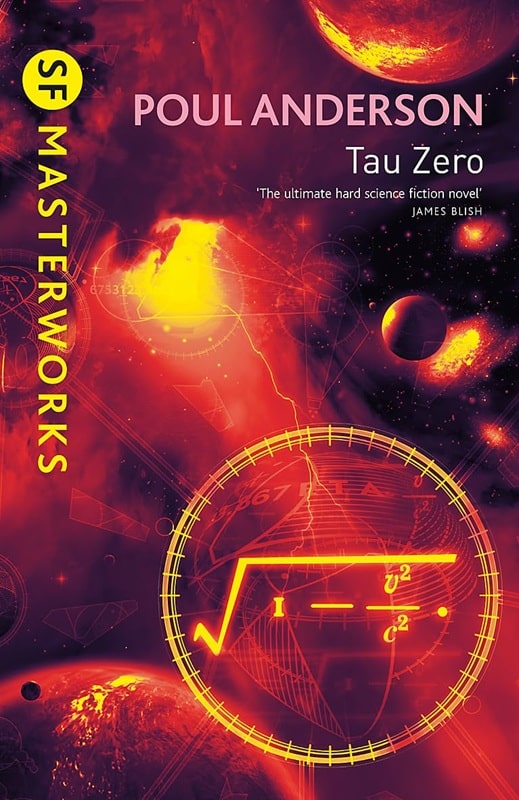 Tau Zero (Millennium/Gollancz SF Masterworks, February 2006). Cover by Dominic Harman
Tau Zero (Millennium/Gollancz SF Masterworks, February 2006). Cover by Dominic Harman
Science fiction — what is it, really? What elements place a story firmly in the genre? For any requirement that you can think of, there is probably a great sf story that violates it, and rather than cobble together some dictionary-ready definition, it’s easier to just think of particular books that you would hand to someone unacquainted with the genre with the words, “Here — read this; this is science fiction!”
Everyone would have their own choices for such a list, of course, and those choices would amount to your de facto definition. For me, some of those books would be Rendezvous with Rama by Arthur C. Clarke, The Stars My Destination by Alfred Bester, and Man Plus by Frederik Pohl, but the very first book on my list would be Poul Anderson’s 1970 novel Tau Zero. Why? What does this book have that makes it a quintessential work of science fiction?
Maybe it’s this — it’s a grand voyage, a brave excursion into the great out there, and it also has a grand perspective shift, like a camera pulling back in a movie, a maneuver that radically alters everything that you had previously thought about the story, something that’s not a minor adjustment, but a move that completely explodes the frame. You think the story is this, but it’s really that, you think you’re here, but you’re really there; the here where you thought you were turns out to be the tiniest corner of there, a there that is larger and stranger and more dizzying than you ever could have originally imagined. (In The Encyclopedia of Science Fiction, Peter Nicholls calls this kind of maneuver a “conceptual breakthrough.”)
Tau Zero begins as a straightforward story of an interstellar voyage, but it ends as far away from that prosaic beginning (prosaic by the standards of science fiction, I mean) as it is possible to imagine. Farther than that, really, and I think that’s the whole point.
Sometime in the 23rd century, the colonization ship Leonora Christine sets out from earth for a planet thirty light-years away. Unlike many stories of this type, the voyage isn’t prompted by the world coming apart at the seams; generally, things are going quite well, which is largely due to the people of the planet submitting to a global government run exclusively by… Scandinavians. Everyone just handed the reigns to the Nordic folk because of their universally acknowledged rationality, efficiency, impartiality, and lack of any pesky Will to Power. I know, I know — send any complaints to that son of Denmark, Poul Anderson. I guess he figured he would inoculate his readers against all the wildness to come by giving them the nuttiest thing first.
If the interstellar colonization mission is a stock situation, Anderson peoples it with characters that are themselves mostly recognizable types. The Leonora Christine’s Captain is Lars Telander, a solid, stolid, stoic father figure who seems ideal at the beginning of the journey, but who fades (if not wilts) into the background under the stresses of the voyage and the extraordinary emergency that the crew eventually has to deal with. More central to the life of the ship and the story Anderson tells are First Officer Ingrid Lindgren, ultra-competent while still being sensitive and sympathetic, and the book’s real protagonist, Ship’s Constable Charles Reymont, willing to be as much of an unlikable, hard-nosed SOB as necessary in order to hold the crew together and complete the mission. Reymont’s and Lindgren’s on-again, off-again romance and their consciously embraced good cop/bad cop roles form the human core of the story.
Anderson devotes significant time to this pair and to the other crew members whom they alternately coax (Lindgren) and steamroll (Reymont) on the way to their goal. In one sense, the book is a tract on the dynamics of leadership in a uniquely stressful situation, and the author had clearly thought a lot about such problems and had some definite ideas about how to deal with them.
It has to be said, however, that Anderson’s depiction of character rarely rises above a fairly rudimentary level; there’s an off-the-rack feel to most of his people. What we have here isn’t Henry James in space, and stylistically, the book wasn’t written to dazzle; if you’re looking for graceful allusiveness, poetic imagery or memorable turns of phrase, you need to look elsewhere; Anderson’s prose generally doesn’t rise above the level of “workmanlike” (which doesn’t mean that it’s bad — it usually has the far from negligible virtues of efficiency and clarity). So, old Poul is no Nabokov in space, either.
So what? Tab A in Slot B prose and slide-rule stiff characters are hard-sf traditions that go back all the way to the vacuum-busting days of Hugo Gernsback (and Anderson’s work isn’t nearly as wooden as the stuff old Hugo published), which just means that you adjust your expectations when you read this kind of sf story. (Oh, what’s a slide rule? Google it, kid.)
In the long run, Anderson’s deficiencies are perfectly acceptable because what you read Tau Zero for is the writer’s wide-screen vision and the extraordinary crisis his people face, and what a vision! What a crisis!
The Leonora Christine powers itself by collecting hydrogen as it travels through interstellar space and using it for fusion. (Technically this makes the ship a Bussard ramjet, though Anderson never uses the term.) As such a ship can approach the speed of light but cannot exceed it, the vessel’s flight plan is to accelerate up to near light speed during the first half of its voyage and then steadily decelerate down from that halfway point until it arrives at the target planet. Because of the relativistic time dilation caused by its extreme speeds, over thirty years will pass on earth while only five years will pass on board the ship.
Initially, things go smoothly as the crew settles into the routines that will occupy them during their long journey, and as expected, people (half of the multinational, fifty-person crew are male and half are female) begin to pair off in preparation for life as colonists on their new world. Everything seems to be going according to plan, until, before reaching the midway deceleration point, the Leonora Christine collides with an unanticipated interstellar dust cloud; because of the ship’s increased mass (due to its speed) this is potentially a very serious event, more like slamming into a brick wall than strolling through a fog bank.
At first, the ship seems to come through this emergency surprisingly well, but the truth soon becomes apparent. The collision has caused irreparable damage to one vital system — the one used for deceleration. The Leonora Christine is unable to slow down.
Why is the damage irreparable? To make repairs, it would be necessary to exit the ship, but the engines generate radiation that would be instantly fatal to anyone outside the hull, and the engines cannot be shut down because they generate an electromagnetic field which is the only thing protecting the crew from the hard radiation of galactic space. (The darn thing must not have been designed by Scandinavians.)
Reymont, Lindgren and the rest are thus faced with the prospect of an endless, pointless voyage that can only conclude with their own deaths from accident, old age or despair, sealed inside something that began as a ship, turned into a prison, and can only end as a coffin. Such an appalling situation would be bad enough, but the Leonora Christine’s crew soon comes to an even grimmer realization.
Unable to decelerate, the time dilation that was to have initially separated them from their home by a mere thirty years is only growing more extreme. The stunned crew members quickly realize that it is not decades that are passing outside the ship, not centuries, not millennia, even. “Soon”, millions, and then billions of years have passed. The would-be colonists whose aim was to open a new world for people from earth to live on must now accept that earth’s sun has long since burned to a cinder, their planet has vanished, their species has become extinct. The fifty exiles on the Leonora Christine are the last human beings alive in the universe, and unless they can find a solution to their dilemma, they are the last human beings that there will ever be.
How will they respond? Panic? Madness? Suicide? Reymont and Lindgren (especially Reymont) are resolved to hold the crew together, determined that they will all continue to do their jobs in the hope (hope being one of the defining characteristics of the late, great human race) that they will eventually find some way to slow down and locate some world, somewhere, where they can make a new start and keep their species alive.
Despite being more radically alone than any human beings have ever been (at one point, someone quotes Father Mapple from Moby Dick — “for what is man that he should live out the life-time of his God?”), for the most part, the Leonora Christine’s people respond well; the extreme strain sometimes produces extreme effects, but no one commits suicide. (I suspect that Anderson knew that in such a situation, if just one person took that way out, it would likely be the effective end of everyone.)
Soon they have left, not only our own galaxy, but also the supercluster of galaxies that constitute our local “neighborhood”, in the hope of reaching a region in which radiation levels will be low enough to permit them to make their repairs. As these “empty” gulfs are completely uncharted, they are also trusting that chance (or that God whom some of them still believe that they have not outlived) will eventually bring them to a galactic group where they will find a suitable planet.
Unexpected difficulties continue to intervene, however, and by the time they are able to fix the damage and decelerate to begin their search for a new home, there is no longer any potential home to decelerate to; so much time has passed outside the ship that the expansion of the universe caused by the original Big Bang has reversed. The universe is now contracting in a “Big Crunch” in which all matter and energy are forced closer and closer together until the cosmic cycle will restart with another Big Bang.
What is there for the Leonora Christine to do but circle the cosmic seed and attempt to ride out the coming explosion and then try to find a young world to begin again on? That’s just what they are able to do, and the story that began on an old planet in an old galaxy in an old universe ends on a new planet in a new galaxy in a universe that didn’t even exist when the story began, uncounted trillions of years before.
The book closes with Charles Reymont and Ingrid Lindgren, two people who now constitute one twenty-fifth of the entire human race, standing on the soil of the home they have travelled such an inconceivable distance in time and space to reach. “Here was not New Earth”, Anderson says. “That would have been too much to expect.” But it is a place where the stubborn, resourceful, endlessly hopeful human race will be able to start anew, a place where it will have a chance to take root and flourish… and perhaps, avoid some of the mistakes that plagued it long ago in a universe that now no longer exists.
Charles Reymont, the man whose determination saved the entire human race, lightly rejects the suggestion of kingship that Ingrid Lindgren jokingly (but also not entirely unseriously) makes, and then “he laughed, and made her laugh with him, and they were merely human.”
Pardon my French (a language once spoken on the long-extinct planet earth), but… holy shit!
Tau Zero was called by James Blish the “ultimate hard science fiction novel.” It’s certainly difficult to think of one that could go beyond it; every time I finish reading it, I want take my brain out, shake it a little, massage it, and run it under a cold faucet before putting it back in my skull. It’s a book that takes your perspective and stretches it, and stretches it, and keeps on stretching it until you walk around bumping into walls because you’re so far from where you started that you have no idea where you are anymore and can’t even begin to imagine where you’re going to end up when you’re finished.
Even in the science fiction genre, there aren’t many books like that. Even a lemon-sucking, hard line anti-Campbellian anti-sentimentalist like Barry Malzberg grew positively misty whenever he talked about the book. Calling the novel “magnificent”, Malzberg rhapsodized that Tau Zero was “the only work published after 1955 that can elicit from me some of the same responses I had towards science fiction in my adolescence — a sense of timelessness, human eternity, and the order of the cosmos as reflected in the individual fate of every person who would try to measure himself against these qualities.”
This wasn’t just Malzberg indulging in nostalgia; Poul Anderson’s book, which marries a modest nuts-and-bolts style with a beyond-audacious premise, really does what Malzberg says it does, and in doing so it goes beyond the merely mind-boggling; it squares the boggle and keeps on squaring it until you’re so dizzy with infinitely expanding possibility that you have to lie flat on the floor for a while. For me, it’s the wildest, most exhilarating trip in all of science fiction.
I’m not going to return to the definitional task that I disavowed when I began this piece, but I do know that one of the things that we most want from a science fiction story is that when we finish it, we won’t end up back where we started. We want it to take us on a voyage, the kind of voyage that no other kind of writing can accomplish or even attempt.
If you want to know what kind of voyage that might be, I can do no better than to turn you over to one of the genre’s greatest voyagers, Poul Anderson, and commend to you his indeed magnificent novel, Tau Zero. When you’ve finished reading it, you might just feel — along with me — that what you’ve been holding in your hands is nothing less than the beating heart of science fiction.
Thomas Parker is a native Southern Californian and a lifelong science fiction, fantasy, and mystery fan. When not corrupting the next generation as a fourth grade teacher, he collects Roger Corman movies, Silver Age comic books, Ace doubles, and despairing looks from his wife. His last article for us was The Gorey Century
In the History of Vintage Science Fiction & Fantasy, Nothing Compares to Gnome Press
Isaac Asimov’s I, Robot and the Foundation Trilogy. Robert A. Heinlein’s Sixth Column. Arthur C. Clarke’s first three novels. The entire Conan saga from Robert E. Howard. The International Fantasy Award winner City by Clifford D. Simak. The Hugo Best Novel winner They’d Rather Be Right from Mack Clifton and Frank Riley. Books by L. Sprague de Camp and Fletcher Pratt, A. E. van Vogt, C. L. Moore and Henry Kuttner, Murray Leinster, Frederik Pohl, Jack Williamson, Andre Norton, and James Gunn.
Those would be a solid core of any collection of vintage f&sf. Yet those books and dozens of others appeared in a few years from just one small publisher: Gnome Press.
Fantasy had long been a staple of what we would now call mainstream publishing but before the 1940s American science fiction was relegated to gaudy pulp magazines, critically reviled as among the lowest forms of fiction. The superweapons that emerged from World War II, especially the atomic bomb, suddenly made the field look prescient, a look into the onrushing future.
 Windsor [ON] Star, November 2, 1946With mainstream publishers still reluctant to mine magazine back issues, fans of the genre saw a publishing niche. More than a dozen small presses sprang into mayfly-like existence before 1950.
Windsor [ON] Star, November 2, 1946With mainstream publishers still reluctant to mine magazine back issues, fans of the genre saw a publishing niche. More than a dozen small presses sprang into mayfly-like existence before 1950.
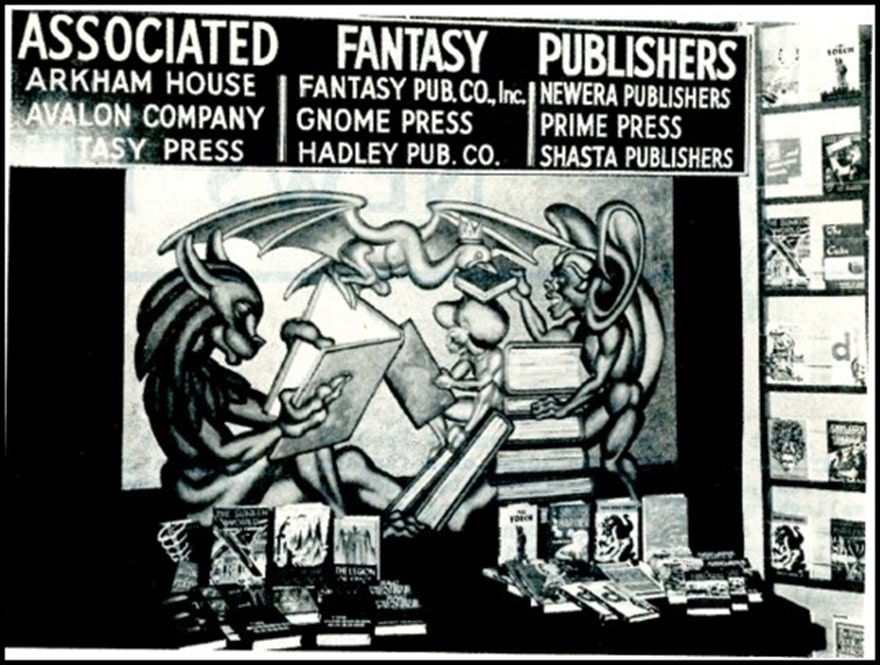 Bloomington News Letter fanzine, February 1949
Bloomington News Letter fanzine, February 1949
Gnome was founded in 1948 by two members of New York fandom, Martin Greenberg and David A. Kyle.
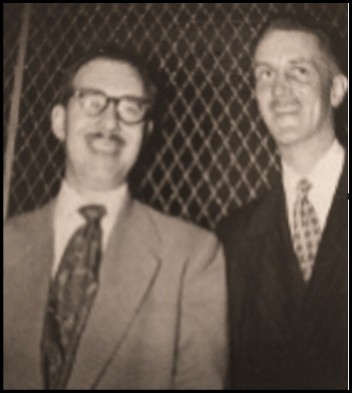 The only known photo of Greenberg and Kyle together
The only known photo of Greenberg and Kyle together
Run on the proverbial shoestring, Gnome nevertheless outpublished, outsold, and outlasted all their competitors. Greenberg had a knack for making deals and Kyle did everything else, including drawing a half-dozen covers. He was soon obsoleted by young – and cheap – newcomers like Edd Cartier, Ed Emshwiller, and Frank Kelly Freas.
The firm made mistakes – could there be a worse response to the dawn of the Atomic Age than to drop three fantasies as its first three selections? – but quickly caught on to what the public wanted. Greenberg was a disciple of John W. Campbell who, whatever is thought of him today, then towered over the field as the guru editor of Astounding Science Fiction and Unknown Fantasy Fiction magazines. Whatever he touched, sold.
Greenberg used the magazines as his Comstock Lode and cannily offered to republish story series as “novels,” suiting post-war tastes if not the labeling laws. Authors flocked to Gnome’s door, desperately wanting hardback publication.
Well, that and money. Greenberg gave them only the former. He and Kyle split the proceeds fairly. Greenberg got a salary and Kyle didn’t. (Kyle always had multiple jobs and Greenberg had a family. But still.) Nevertheless, Kyle stayed six years and Gnome lasted fourteen, with Greenberg owing money to everyone in sight. He is usually described as a charming rogue with a gift of gab. Asimov once went to him demanding money and wound up lending more.
 Isaac Asimov royalty payments, auction catalog
Isaac Asimov royalty payments, auction catalog
History is never pretty. Flaws and all, nothing compares to Gnome in the history of vintage f&sf. In many ways, it is the history of vintage f&sf.
I knew nothing about Gnome when I chanced upon several titles in a used bookstore in 1980. I had seen the name in passing, but histories of the small presses were nonexistent. I found a list of all 86 titles, and dove in. A few decades later I had them all. Did I stop there? What fun would that be? Gnome produced about 75 variants, with different boards or different jackets. Nobody knows exactly how many, because new ones keep popping up. Finding all of them is essentially impossible, which means the search never has to end – the perfect collectible.
Moreover, Gnome published a variety of ephemera, from newsletters to catalogs to calendars and I set out to accumulate all that appeared on the market. I even bought the 1951 Fantasy Calendar, which was an unparalleled achievement since it doesn’t exist. (Blame Donald Wollheim.)
Digging for information is infinitely easier today than in 1980, yet Gnome appears to have left virtually no paper trail, an oddity for a publisher dealing every day with paper. Other than a few scraps at Syracuse University, no business records seem to have survived and not even the indefatigable Kyle bothered to talk much about his time at Gnome in the millions of words he wrote for fanzines.
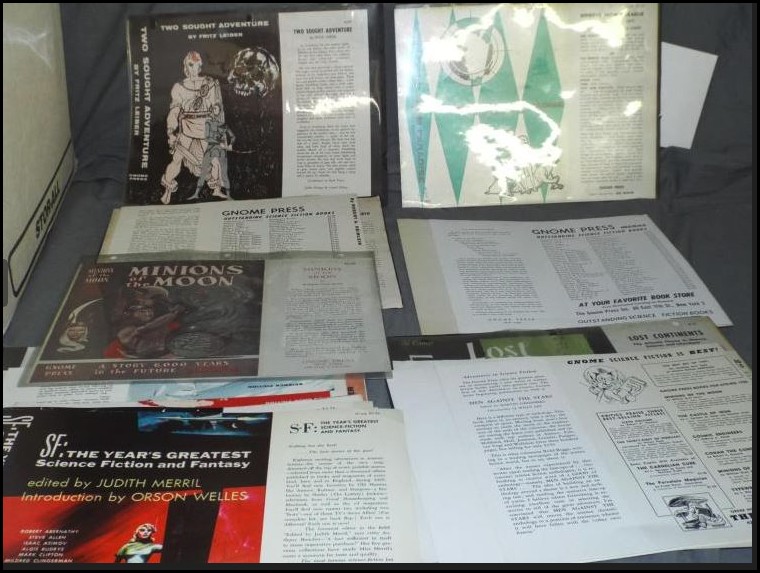 Gnome cover proofs, auction catalog
Gnome cover proofs, auction catalog
Nevertheless, dogged digging over decades created a repository of everything known about Gnome. Near archaeological level scrutiny of covers, flaps, copyright pages, and back panels yielded a history of each title. Each answered question led to ten additional mysteries. Eventually I wrote an utterly unpublishable 660-page manuscript dump that would require more than a thousand images to elucidate the text.
What’s 150,000 words and 1100 images to the internet? I already owned the URL GnomePress.com. The 113 pages there now comprise the first complete bibliography of Gnome Press (by author, title, and publication date), a separate page for each title with color scans of every variant board and cover I own along with contemporary reviews and previously unknown photos of the more obscure authors, information about a range of associational items, and histories both of Gnome and the f&sf field up to the time of its founding.
For all its literally exhausting coverage, the site remains a work in progress. Gnome collectors continue to provide information that require revision to opinions I previously thought firm. If anyone reading this has even the slightest scrap they want to share, please contact me. Or just ask questions about Gnome. Anything, except how much a book is worth.
By the way, Marty Greenberg’s file copy of I, Robot inscribed to him by Asimov is listed on the internet at $50,000. If you’re the buyer, please contact me. I want to know all about you.
Steve Carper is the author of hundreds of articles on fascinating, if obscure and forgotten, tidbits of history, as well as the seminal book Robots In American Popular Culture. All of his websites are linked at SteveCarper.com.
’24? in 42′ with…Bob Byrne????
Jason Waltz kicked off season two of his 24? in 42 podcast interviews with your very own Monday morning columnist. The prior installment was with Malazan’s Ian C. Esslemont, so I’m in pretty good company here.
It should not surprise you that I was all over the place, covering Robert E. Howard, Michael Moorcock, Columbo, books on writing and screenwriting, Encyclopedia Brown, the Civil War, Tolkien, The Constitutional Convention of 1787, Lawrence Block, Steven Hockensmith, Norbert Davis, and much more.
Jason sends sixteen questions ahead of time, and mixes in eight ‘new’ ones that can be definite curveballs. He started things off with a knuckleball! (Last week’s post was on baseball- I’m still in the mood)
Here are two sample questions:
Who is the visual artist(s) that creates the artwork that most moves you?Michael Whelan and Walter Velez (those terrific early Thieves World cover novels) are two of my favorite fantasy artists. Being a mystery guy, I LOVE some color paintings that Robert Fawcett did. Arthur Conan Doyle’s son Adrian (who waas a freeloading ass), co-wrote some Holmes stories. They’re not bad. All but the first appeared in Colliers’ illustrated by Fawcett. They are wonderful illustrations. Up there with the two great Holmes artists: Frederic Dorr Steele, and Sidney Paget. I find they capture Holmes.
How do you give depth to a character? Do you treat primary, secondary, and tertiary characters any differently?I consciously try to catch myself using a secondary or tertiary character as an info dump. Even a small one (and I absolutely do that). If the only reason I find them around is to give some info, I rework them. Or, try to use someone already in the story. There’s no depth to an info dump character.
The depth of a half dozen characters in the first Max Latin story (Watch Me Kill You) is about as well done as any story I’ve read. I try to give some personality, without making it a cliché.
Jason and I had a lot of fun, and you can actually see the enthusiasm that I bring to my blogging here at Black Gate. Settle in and watch (or at least listen) to me wax/ramble on. The 42 (from Douglas Adams’ Hitchhiker’s Guide) is the time target. Since I went over by about 35 minutes, I expanded on things a bit…
(42 is also Jackie Robinson’s number, and I talked about him for one question).
And for the record, since Jason called me out on camera: Ohio State defeated Texas in the CFP that night. In quite dramatic fashion, no less.
Click on over. I’m told I was a bit animated!

Bob Byrne’s ‘A (Black) Gat in the Hand’ made its Black Gate debut in 2018 and has returned every summer since.
His ‘The Public Life of Sherlock Holmes’ column ran every Monday morning at Black Gate from March, 2014 through March, 2017. And he irregularly posts on Rex Stout’s gargantuan detective in ‘Nero Wolfe’s Brownstone.’ He is a member of the Praed Street Irregulars, founded www.SolarPons.com (the only website dedicated to the ‘Sherlock Holmes of Praed Street’).
He organized Black Gate’s award-nominated ‘Discovering Robert E. Howard’ series, as well as the award-winning ‘Hither Came Conan’ series. Which is now part of THE Definitive guide to Conan. He also organized 2023’s ‘Talking Tolkien.’
He has contributed stories to The MX Book of New Sherlock Holmes Stories — Parts III, IV, V, VI, XXI, and XXXIII.
He has written introductions for Steeger Books, and appeared in several magazines, including Black Mask, Sherlock Holmes Mystery Magazine, The Strand Magazine, and Sherlock Magazine.
New Adventures for the World’s Favorite Barbarian
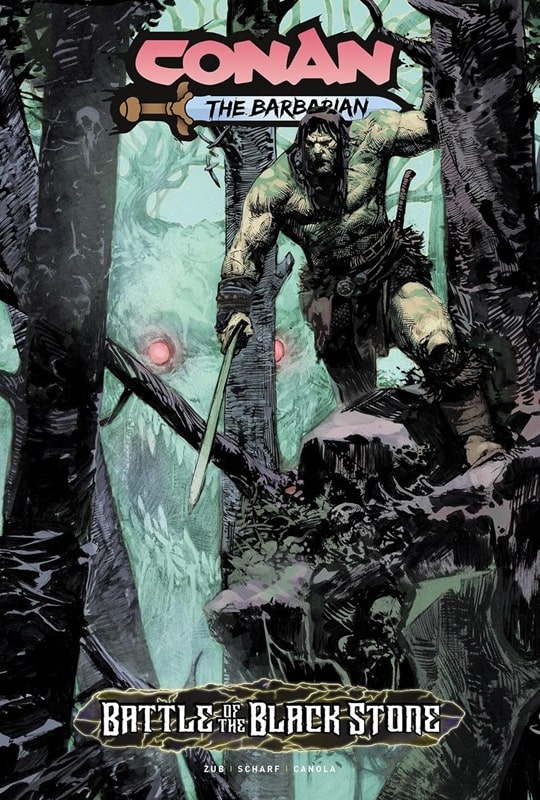 Conan the Barbarian: Battle of The Black Stone (Titan Comics collected edition, April 1, 2025). Cover by Jonas Scharf
Conan the Barbarian: Battle of The Black Stone (Titan Comics collected edition, April 1, 2025). Cover by Jonas Scharf
Few things are more ubiquitous than Conan and fantasy. Decades of sword-swinging high adventure has earned the barbarian a following most can only dream of. It’s taken the heavily thewed warrior to the big screen, Marvel Comics, and more. But it’s his latest adventure at Titan Comics that may prove to be the icing on the proverbial Shadizarian cake.
“This isn’t my first time writing Conan, but it’s definitely the most expansive opportunity I’ve ever had to chart the direction of such an amazing iconic character. I could not be happier in terms of our team and the collaboration we have in terms of story, art, and worldbuilding,” Jim Zub, writer of Conan the Barbarian at Titan Comics, shared by email.
[Click the images for Conan-sized versions.]
Over the years, few have come to understand the Cimmerian like the acclaimed Canadian scribe. Even in a career that has taken him to the heights of the comic book industry, Zub’s Conan work is special. His bibliography reads like a tour of the barbarian’s finest adventures of the past 10 years: Marvel’s Conan the Barbarian, The Savage Sword of Conan, and the epic Battle of the Black Stone are a few highlights. No wonder he’s so trusted by the rights holders of Robert E. Howard’s work.
“I actually work directly for Heroic Signatures, the rights holders of Conan and the Robert E. Howard character library. Titan publishes the comics in English, and they’ve been great publishing partners, but on a creative level I answer directly to the people who know Conan best and that has made the creative process really vibrant,” Zub stated.
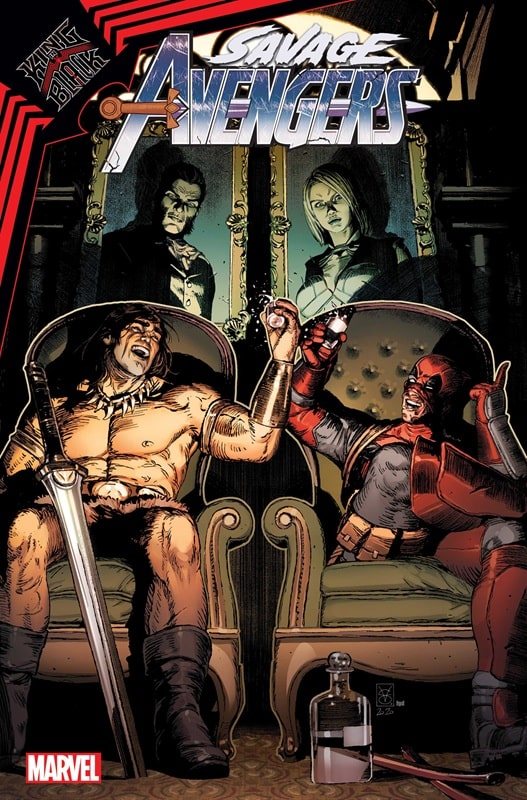 Conan and Deadpool in Savage Avengers #18, by Gerry Duggan and Kev Walker (Marvel Comics, February 17, 2021). Cover by Valerio Giangiordano
Conan and Deadpool in Savage Avengers #18, by Gerry Duggan and Kev Walker (Marvel Comics, February 17, 2021). Cover by Valerio Giangiordano
It wouldn’t be exactly fair to call Conan’s return to Titan a comeback. At Marvel, the Cimmerian had an impressive run in the much-loved Savage Avengers. Solo, he would be well-treated by Zub and his colleagues in stories like Conan: Serpent War and even fight symbiotes during the massive King in Black storyline. A look at the enthusiasm that has greeted Titan’s Conan series, however, tells you that this is something different.
Zub added, “Every time I get to contribute to characters and worlds I grew up with it’s a thrill, and this Conan publishing initiative is a whole new level.”
Such big breaks come with a heavy responsibility. After Howard created the character in the 1930s, many other writers would pen new tales for the Cimmerian. That lengthy list of scribes includes respected names like L. Sprague de Camp, Karl Edward Wagner, Roy Thomas, and Jason Aaron. How has he managed to stand out while writing a legacy character that has passed through so many legendary hands? Surprisingly, it’s by following the legends as closely as he can.
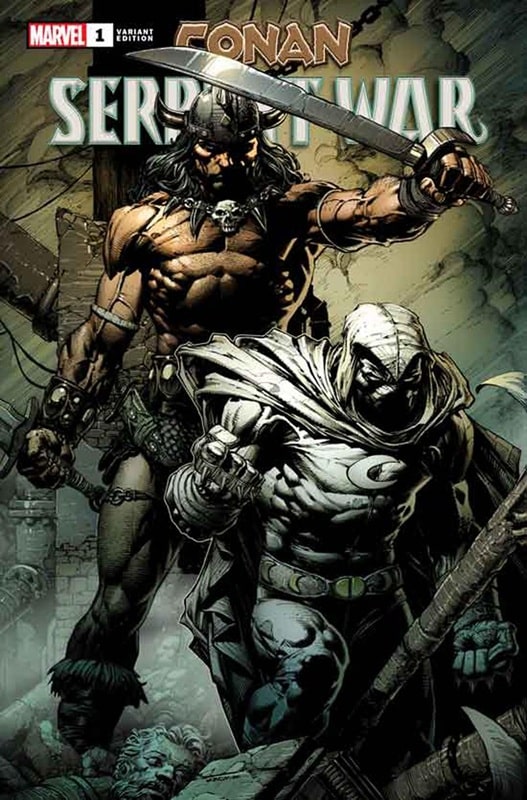 Conan: Serpent War #1, written by Jim Zub (Marvel Comics, December 4, 2019). Incentive variant cover E by David Finch
Conan: Serpent War #1, written by Jim Zub (Marvel Comics, December 4, 2019). Incentive variant cover E by David Finch
“If anything, I’m trying to hew as closely to Robert E. Howard’s original pulp characteristics as I can, while also incorporating the most iconic aspects of Roy Thomas’ seminal comic writing alongside the vision so many incredible artists like Frank Frazetta, Barry Windsor-Smith, John Buscema, Joe Jusko, Cary Nord and others have brought into it over the decades,” Zub explained.
Following in those footsteps brings with it plenty of challenges and opportunities. There aren’t many writers that understand that as well as Zub.
“The longer a character has been around, obviously, the more stories have been told and the harder it can be to surprise the existing fanbase while still staying true to who that character is. It’s a delicate balance where you want to keep core elements in mind but not close yourself off to new ideas,” Zub said. “The upside, of course, is the fact that legacy characters have that built-in recognition. I’m not building from scratch in terms of visibility and there’s an existing fanbase excited to see what comes next. The challenges and benefits are tightly wound together.”
You only need to read the massive Conan: Battle of the Black Stone limited series to see that approach in practice.
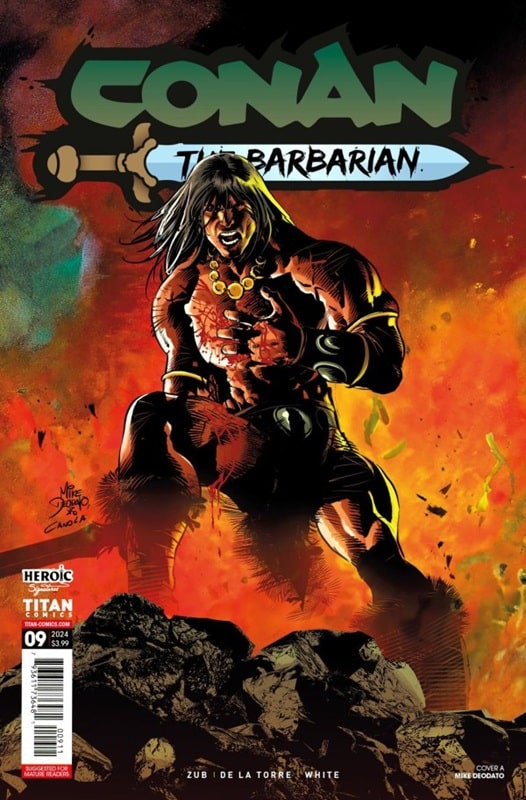 Conan the Barbarian #9, written by Jim Zub; art by Robert De La Torre and Dean White (Titan Comics, March 27, 2024)
A Walk With Titan
Conan the Barbarian #9, written by Jim Zub; art by Robert De La Torre and Dean White (Titan Comics, March 27, 2024)
A Walk With Titan
If one word could describe what it is like to read Titan Comics Conan the Barbarian, that word would be ‘fun.’ Not that it shortchanges readers on the artistic or deeper side of things. Far from it. The colors pop like a 70s comic, there’s no shortage of poetic allusions, well-crafted narrations, and action. But above all its bursting with creative energy, like a room of Conan’s most talented fans were allowed to cut loose.
“The new Titan series is a Mature Readers book, so we don’t have to hold back on violence or salacious elements where appropriate. That allows us to channel the intensity of the pulp source material even more closely,” is how Zub describes it.
Fans of high-fantasy and the barbarian’s sword-swinging antics will not be disappointed. Conan is at his most lethal in many of these stories, battling Picts and challenging sorcerers with his usual bravado. The ingredients of great sword and sorcery tales are all there: magic, romance, and plenty of mayhem.
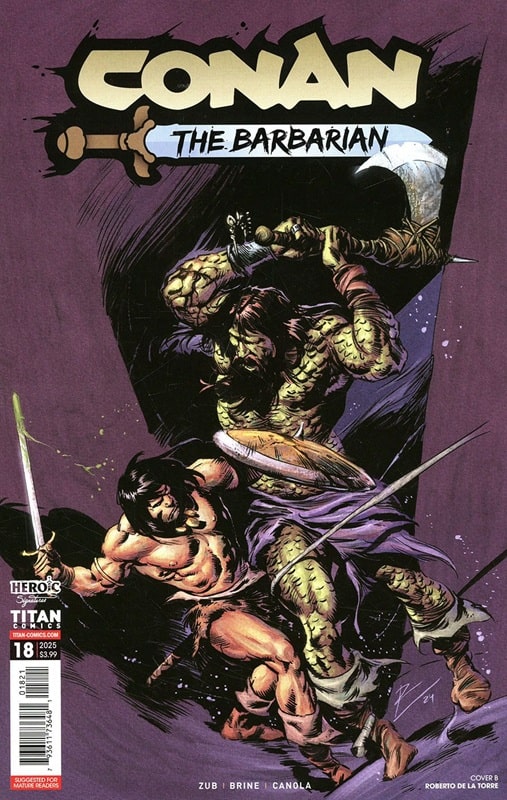 Conan the Barbarian #18, written by Jim Zub; art by Danica Brine and Joao Canola (Titan Comics, February 19, 2025). Cover B by De La Torre
Conan the Barbarian #18, written by Jim Zub; art by Danica Brine and Joao Canola (Titan Comics, February 19, 2025). Cover B by De La Torre
“It’s about distilling the best parts of past works and bringing them together with Howard’s own expansive mythmaking across the ages to tell epic stories of sword & sorcery. If I do my job well, it should feel “true” to old and new readers without falling back on adapting previous stories,” Zub said.
True to their epic vision, the creative team behind the series has not stopped at just celebrating the Hyborian Age. While the comics are full of respectful nods to the past, they also give Conan plenty of new obstacles to overcome. Other Howard characters are brought in and before you know it, a sprawling multi-timeline adventure is unfolding. Working on Conan, in general, has helped Zub level-up as a writer and his Titan Comics storylines feel like years of hard-work distilled for our reading pleasure.
“With each new storyline I’m pushing myself to use familiar pieces in unorthodox ways so that readers can see enough of the familiar to know that it’s still Conan, but knot know exactly which way the story is headed,” Zub said.
His evocative narrations have become integral to the experience. They set the tone, heighten the drama when necessary, and add some appreciated literary flair. It is no accident either that they read so quintessentially Conan.
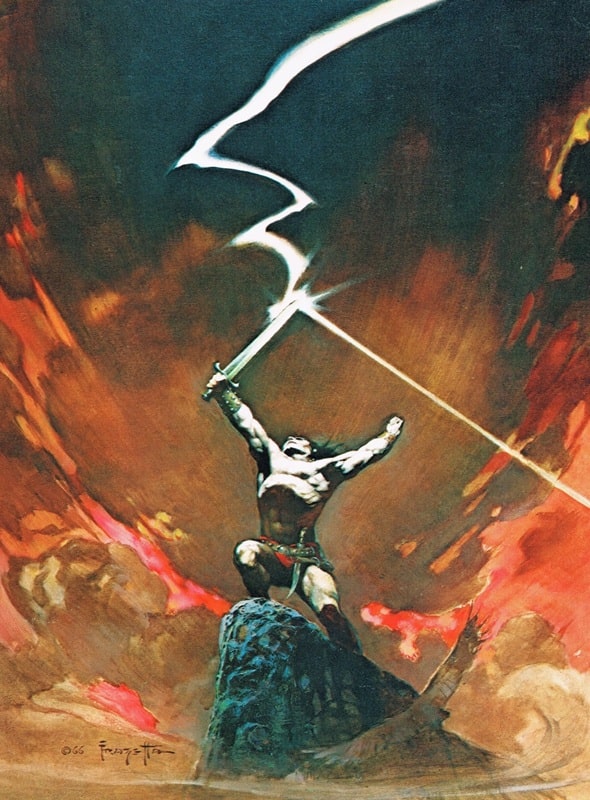 Classic barbarian art by Frank Frazetta: the cover to Thongor Against the Gods by Lin Carter (Paperback Library, November 1967)
Classic barbarian art by Frank Frazetta: the cover to Thongor Against the Gods by Lin Carter (Paperback Library, November 1967)
“I’ve marinated in the original Howard prose and analyzed it for cadence and vocabulary to make my narration feel like the classics without just copying it word-for-word. It’s made me think deeper about pacing, prose, characterization, geography, and culture,” Zub said.
The Battle for the Black Stone storyline has been a wild ride to say the least. While it’s impossible say where Conan is heading next, Zub’s work has left creatives of every level with plenty to learn from.
“There’s a reason why characters like Conan have stood the test of time and it’s crucial for people working on the property to understand and respect that bedrock foundation even while they bring their new ideas into the mix. Longtime fans can always tell if someone has done the research and cares about what they’re working on and, if you can win them over, it’s easier to build a strong audience from there,” Zub stated.
Ismail D. Soldan is an author, journalist, and poet. His work has previously appeared in Illustrated Worlds, LatineLit, and The Acentos Review among other publications. A proud explorer of both real and imagined worlds, his most recently published short story can be read in the January 2025 issue of Crimson Quill Quarterly, and his last article for Black Gate was An Eternal Champion’s Legacy.
Fan of the Cave Bear
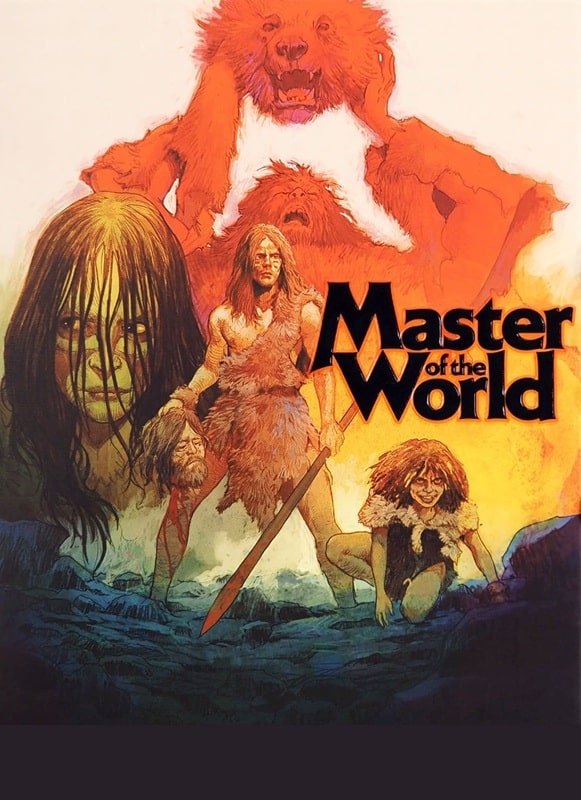 Master of the World (Falco Film, 1983)
Master of the World (Falco Film, 1983)
As usual, 20 films, all free to stream, and I’ve never seen them before. Can I really find 20 cave person films I can sit through?
EDIT: No. I’ve expanded the list to include any and all primitive cultures as there are not enough prehistoric flicks to watch.
EDIT: I’m capping this list at 10 – I can’t stomach any more f**king Italian cannibal flicks.
Master of the World (1983) TubiAgainst my better judgement, I’m starting a new list. The usual rules apply — 20 films, free to stream, based on a theme. This time, cave folk!
We kick off with this Italian offering from the early 80’s, obviously inspired by Quest for Fire and, um, possibly Caveman. It’s the old story of forbidden love, rival clans beating each other up and eating the brains of the vanquished, plus the invention of the bolas. It’s the Romeo and Juliet adaptation you never knew you needed.
The whole shebang is peppered with grainy stock footage of out-of-place animals and clouds, and there’s a man in a bear suit intercut with a real, heavily drugged bear, who beats the crap out of everyone. Actually, this semi-fake bear was a highlight.
As any nerd worth their salt will tell you, Ben Burtt used the sounds of a bear to create Chewbacca’s guttural growls. I swear to God, the filmmakers just took soundbites of Chewbacca from Star Wars and dubbed their own bear with them. Check it out — validate me!
Ultimately, a rather tedious affair, too much high-pitched grunting. I’m only one film in, and already regretting this.
3/10
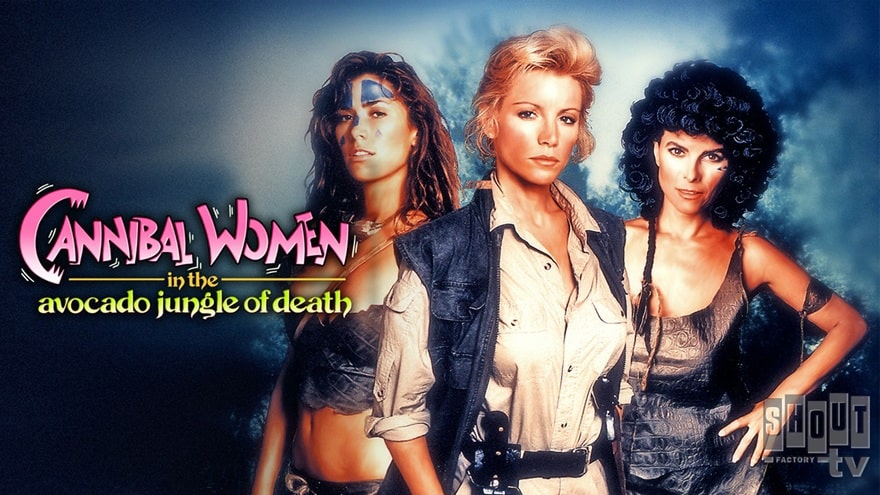 Cannibal Women in the Avocado Jungle of Death (Paramount Home Video, 1989)
Cannibal Women in the Avocado Jungle of Death (1989) Tubi
Cannibal Women in the Avocado Jungle of Death (Paramount Home Video, 1989)
Cannibal Women in the Avocado Jungle of Death (1989) Tubi
Confession: I could only find about a half dozen prehistoric cave people flicks (that I hadn’t seen or are free to stream), so I have expanded the parameters to include any ‘primitive’ cultures or groups. This opens up the doors for a wider selection, and a lot more rubbish. Case in point…
I thought I had seen this, but I was probably confusing it with Amazon Women on the Moon — anyhoo, this is a weird little affair, very cheaply made, and a bit of a mess. I’ve seen it described as a comedy horror, but there’s no horror in it, and very little in the way of good comedy. The script, written by director J.F. Lawton (who wrote Pretty Woman and Under Siege!) is really not as funny as he thinks it is, flip-flopping between absurdist schtick in the Airplane vein, to satirical monologues — all of which outstay their welcome very quickly.
Shannon Tweed is perfectly fine as the lead, but Adrienne Barbeau is wasted, and the least said about Bill Maher the better (although he does nail a couple of pratfalls). The film claims to be a commentary on feminism and toxic masculinity, but neither theme is realised due the reliance on tired tropes (the male gaze, the white male savior). Oh well.
4/10
 The Slime People (Donald J. Hansen Enterprises, 1963)
The Slime People (1963) Prime
The Slime People (Donald J. Hansen Enterprises, 1963)
The Slime People (1963) Prime
A primitive prehistoric race rises from the sewers to reclaim the planet after some misguided nuclear testing? Yes, this fits the criteria.
Is it any good though? Weeeellll…
It starts off pretty well. A lone pilot flies into a California airport, only to find the entire town deserted. It’s well set up, and would be even more effective if the film hadn’t shown us the titular monsters as soon as the film starts, before the credits. The monsters themselves are quite interesting, however it looks like they blew the budget on three full-size costumes; think Dr. Who‘s Zygons wearing gorilla pants.
The rest of the ensemble is made up of the usual suspects: lantern-jawed Clark Gable-lite, useless scientist, useless scientist’s useless daughters, useless marine (only there to say ‘gee whiz’ and kiss a useless daughter) and a nutcase who has ‘uncomfortable feelings’ for his goat. You read that right.
The whole affair is shrouded in fog (a major plot point) as mostly consists of lots of talking and running through the afore-mentioned fog. It’s a bit rubbish, but strangely compelling.
5/10
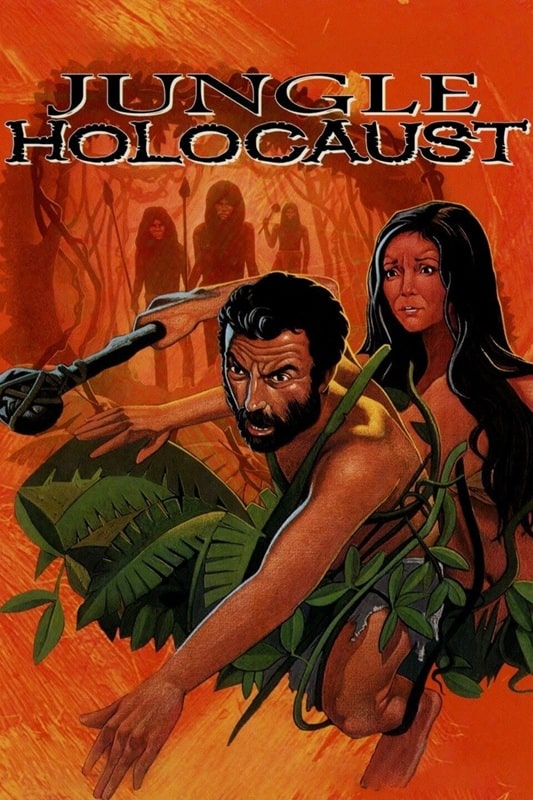 Jungle Holocaust (Erre Cinematografica, 1977)
Jungle Holocaust (1977) Tubi
Jungle Holocaust (Erre Cinematografica, 1977)
Jungle Holocaust (1977) Tubi
Of all the horror sub-genres, jungle cannibal ones are my least favourite. There’s simply no joy to be found in any of them, and combine them with the Italian predilection for animal cruelty, and you’ve got a film I never need to see twice. This one is the first foray into the genre by the much lauded Ruggero Deodato, and it’s not as ghastly as his later offerings, but still enough to leave me questioning my life choices. I can deal with the human-on-human buffets, but the suffering of real animals turns my stomach.
Anyhoo — it’s the usual plot; white Italians enter the jungle, get eaten. Along the way there is stock footage of animals eating each other, ants in wounds, copious willy tugging (some bad, some good) and lots of ‘oo, oo, oo’ ‘aah, aah, aah’.
The leads are pretty good, Massimo Foschi really sells the whole jungle madness look, and Me Me Lai is great as the loveliest cannibal of them all. However, at the end of the day I don’t mean to be judgemental, but I have no idea how anyone can watch these for a good time.
6/10
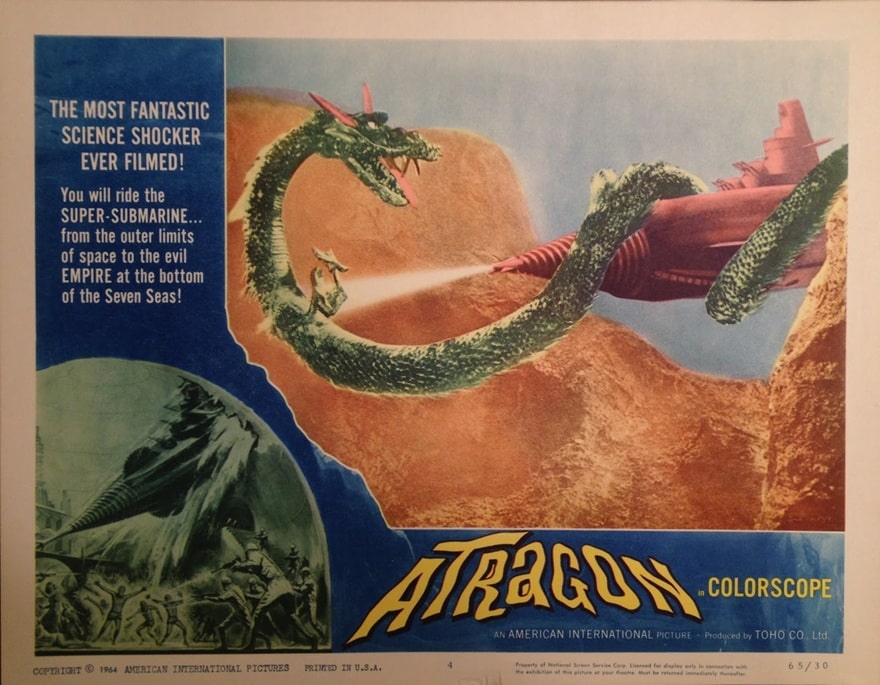 Atragon (Toho, December 22, 1963)
Atragon (1963) Prime
Atragon (Toho, December 22, 1963)
Atragon (1963) Prime
A tenuous fit for this project, Atragon features an ancient civilization (the Empire of Mu) hellbent on reclaiming their position as rulers of the world. For now, their continent lays at the bottom of the Pacific, so the film is all about Japan’s experimental submarine program, patriotism, and nefarious agents.
The entire world rallies via stock footage as the Mu Nemo themselves around the globe, sinking ships and being a general nuisance. Lots of lovely matte paintings and Thunderbirds-style models, and a bonus sea monster at the end. I had fun.
6/10
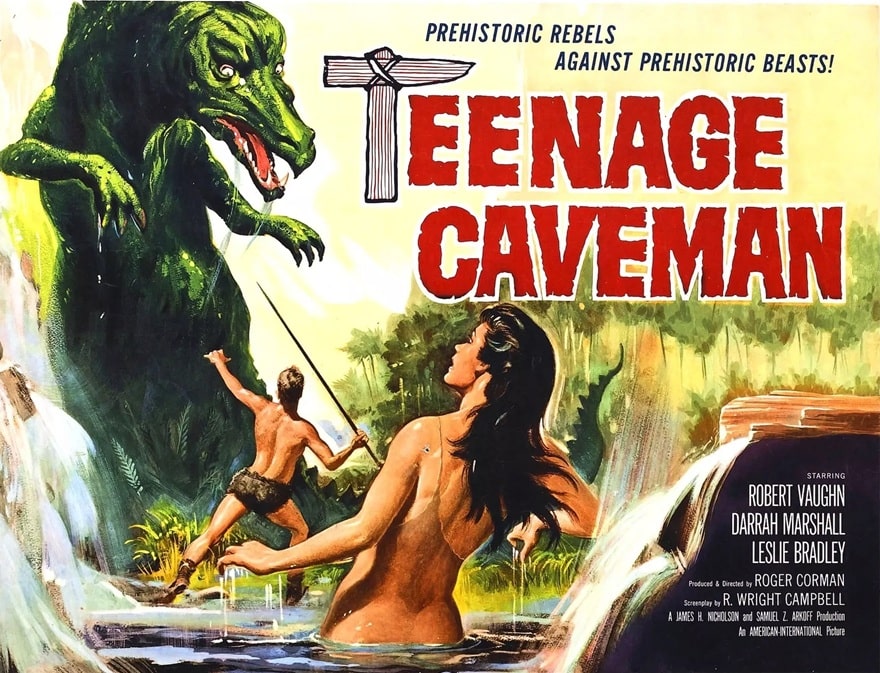 Teenage Caveman (American International Pictures, July 1, 1958)
Teenage Caveman (1958) Prime (AMC+)
Teenage Caveman (American International Pictures, July 1, 1958)
Teenage Caveman (1958) Prime (AMC+)
Yes, I started a free 30-day trial sub to AMC+ just so that I could watch this movie without the MST3K voice track. Such is my commitment to this pointless exercise in procrastination.
Anyhoo — here we have Roger Corman writing and banging out a caveman film in a couple of weeks. All shot on one California location, amply sprinkled with footage from other AIP flicks, featuring a very young Robert Vaughn as a young ‘cave person’ in the midst of an existential crisis. The clan he belongs to is the cleanest, whitest bunch of knuckle-draggers you’ve ever seen, and their hair is perfect. They all adhere to a bunch of rules attributed to Sky Gods and Monsters (TM), but Bobby Vaughn ain’t down with no rules, daddio.
He rebels, as all teens should, and while the elders sit around at camp discussing the rules, he goes out to see what’s so dangerous about the other side of the river. Here’s the thing, despite it being cheesy as hell, and somewhat laughable, Vaughn plays it straight (the right choice) and Corman clubs us around the head with a killer twist. I rather enjoyed it. Second film to feature a dude in a bear costume too, so it gains back the mark I was about to take away for the cruel real animal fighting.
6/10
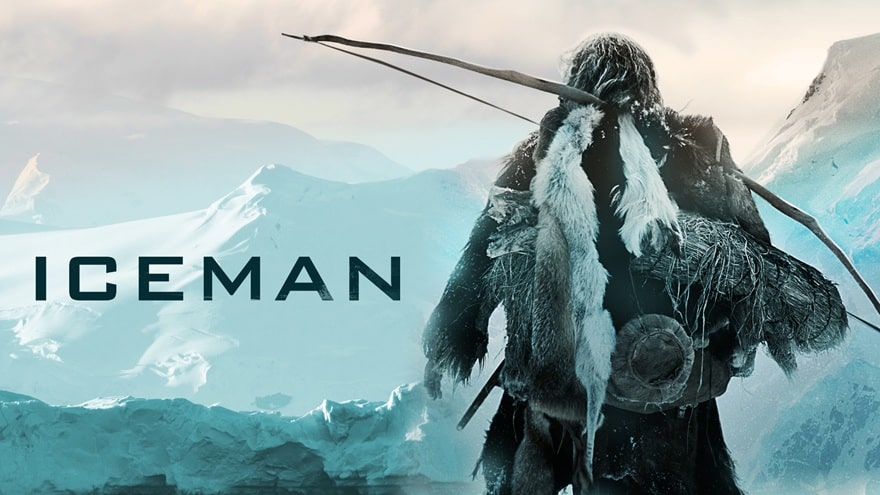 Iceman (Echo Film/Lucky Bird Pictures, 2017)
Iceman (2017) Tubi
Iceman (Echo Film/Lucky Bird Pictures, 2017)
Iceman (2017) Tubi
Based on a 5300-yr-old mummy found by hikers in 1991, this German production proceeds to tell the imagined last days of a Neanderthal man, Kaleb. It’s a simple revenge flick, told in the ancient Rhaetic language, and is beautifully shot through with a suitably grim palette.
Jürgen Vogel as Kaleb is brilliant, bringing physical and emotional heft to every scene, and it was a treat to see Franco Nero pop up. It’s solid, at times horrific, and a reminder that revenge is a dish best served hunted, skinned and roasted.
8/10
 Stone Age Sirens (Retromedia Entertainment, November 16, 2004)
Stone Age Sirens (2004) Tubi
Stone Age Sirens (Retromedia Entertainment, November 16, 2004)
Stone Age Sirens (2004) Tubi
Another Fred Olen Ray flick (credited as Nicholas Medina, his soft-core pseudonym), this one is a heavily edited version of the film Teenage Cave Girl, heavily edited to the point where there’s no actual Neanderthal nookie on display at all. By cutting out all the sex scenes, what you are left with is a rubbish comedy about a pair of cave dwellers who are transported to the future and fall in with some randy archeologists (there’s more than you knew).
Peppered with stop-mo shots stolen from Planet of the Dinosaurs and some abominable CG in all its 8-bit glory, this is the usual slice of fried shite I’ve come to expect from the once great Ray. It gets a point for only being 46 minutes long.
1/10
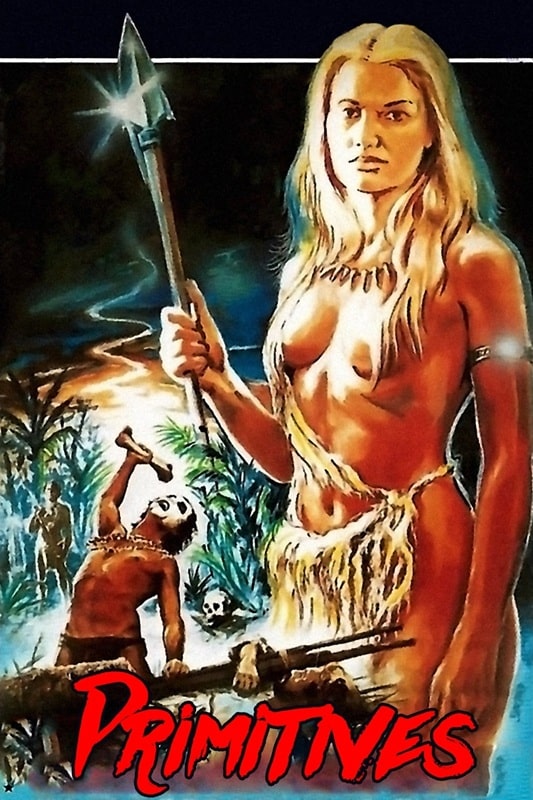
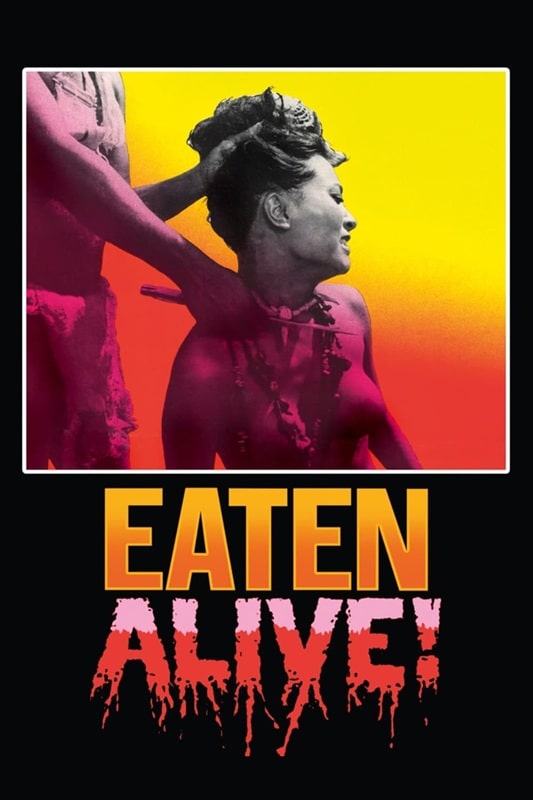
Primitives (Rapi Films, 1978) and Eaten Alive! (Dana Film, March 20, 1980)
This one is an Indonesian version of the Italian jungle exploitation flicks, and doesn’t just follow a similar plot, but lifts whole sequences directly for previous fare such as Cannibal Holocaust. In fact, it’s pretty shameless how much is ripped off from that movie, right down to locations and set pieces (although it stops short of actual tallywhacker removal). It’s full of the usual grunting and chomping, and the filmmakers seemed to double-down on the animal cruelty, using horrific footage from previous films.
It’s a miserable viewing experience, and I’m only giving it an extra mark for the shameless stealing of inappropriate music (Kraftwerk’s ‘The Robots, a trio of Jean Michel Jarre tracks and Princess Leia’s theme) and a hilarious rubber axe boomerang scene.
4/10
Eaten Alive! (1980) TubiNot to be confused with the Tobe Hooper ‘gator romp, this is another Italian cannibal flick that starts interestingly in New York, but then descends into the usual animal torture and misogyny associated with these films.
It’s held together by a flimsy ‘Jonestown’ plot, but this was the one that officially finished me off — I am totally done with this genre and never need to see another jungle cannibal film ever again. Hateful.
1/10
Previous Murkey Movie surveys from Neil Baker include:
There, Wolves
What a Croc
Prehistrionics
Jumping the Shark
Alien Overlords
Biggus Footus
I Like Big Bugs and I Cannot Lie
The Weird, Weird West
Warrior Women Watch-a-thon
Neil Baker’s last article for us was There, Wolves: Part III. Neil spends his days watching dodgy movies, most of them terrible, in the hope that you might be inspired to watch them too. He is often asked why he doesn’t watch ‘proper’ films, and he honestly doesn’t have a good answer. He is an author, illustrator, outdoor educator and owner of April Moon Books (AprilMoonBooks.com).
Rules for Mega-Dungeon Adventuring: Dragonslayer by Greg Gillespie

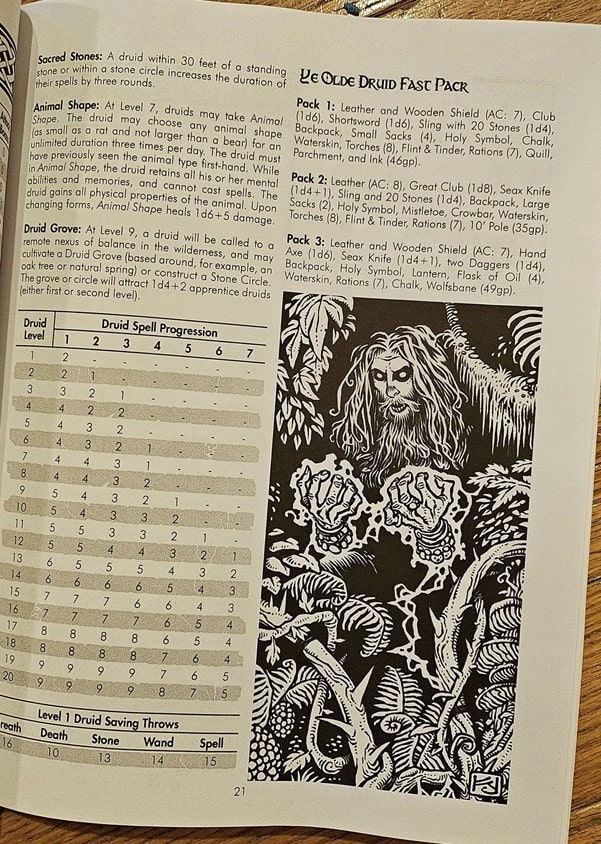
Dragonslayer (OSR Publishing, February 7, 2024). Cover by Jeff Easley
I’ve admired the mega-dungeon adventures of Greg Gillespie for several years, particularly Barrowmaze and The Forbidden Caverns of Archaia. Most recently, Greg published his own set of rules to go with those adventures. It’s called Dragonslayer, and I think it’s excellent. Here is the description from the back of the book:
Journey to a realm of myth and magic, where ancient legends and terrifying minsters come to life, and adventure awaits…
Inspired by the timeless role-playing tradition of the early 1980s, this ruleset seamlessly integrates the simplicity of B/X with the chrome if First Edition. The book has everything you need: classes, spells, monsters, and treasure, combined in a single volume.
For those who don’t know, “B/X” is the acronym for the Basic and Expert rules of Dungeons & Dragons.
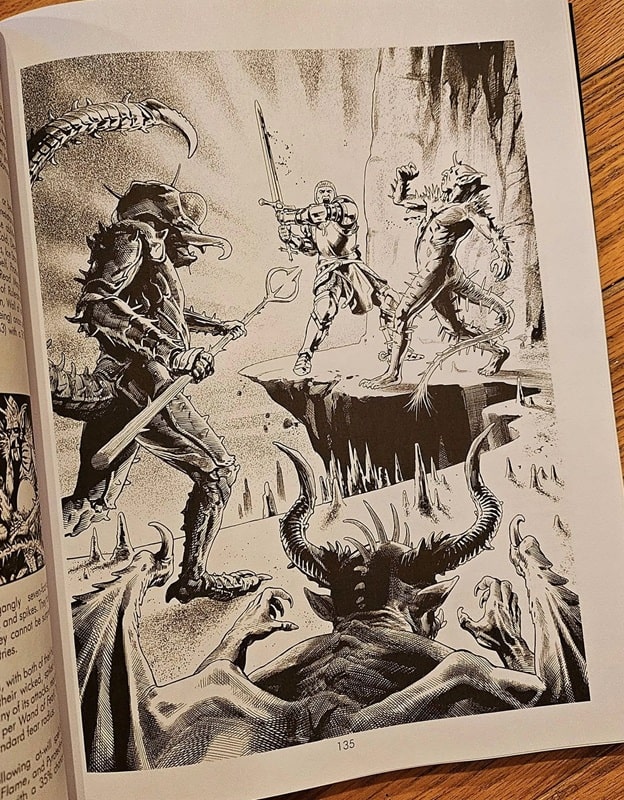
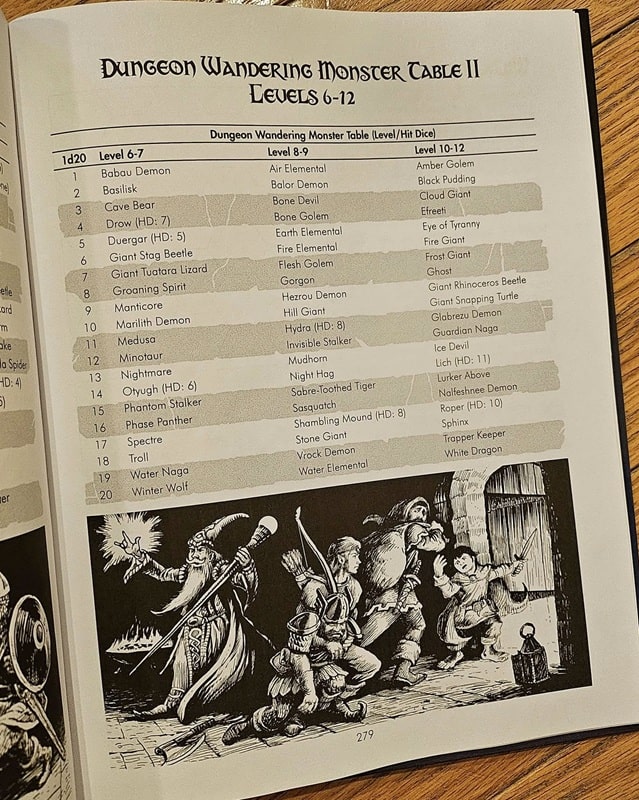
Interiors from Dragonslayer
The Basic and Expert rules were conceived by Tom Moldvay and Zeb Cook, who in turn derived their inspiration from the works of Gary Gygax and Dave Arneson — and also the previous Basic set (my personal favorite) compiled by John E. Holmes.
B/X is probably the most “cloned” version of D&D, yet Greg establishes his own flavor, quite admirably, within that framework. It’s nicely done!
Lastly, it’s really great to see art from the likes of Jeff Easley, Diesel LaForce, and Darlene Artist. All legends of the hobby whose work I have admired for decades.
Jeffrey P. Talanian’s last article for Black Gate was a review of Robert E. Howard’s “Worms of the Earth.” He is the creator and publisher of the Hyperborea sword-and-sorcery and weird science-fantasy RPG from North Wind Adventures. He was the co-author, with E. Gary Gygax, of the Castle Zagyg releases, including several Yggsburgh city supplements, Castle Zagyg: The East Mark Gazetteer, and Castle Zagyg: The Upper Works. Read Gabe Gybing’s interview with Jeffrey here, and follow his latest projects on Facebook and at www.hyperborea.tv.
We No Longer Need Aliens to Feel Alienated: State of Paradise by Laura Van Den Berg
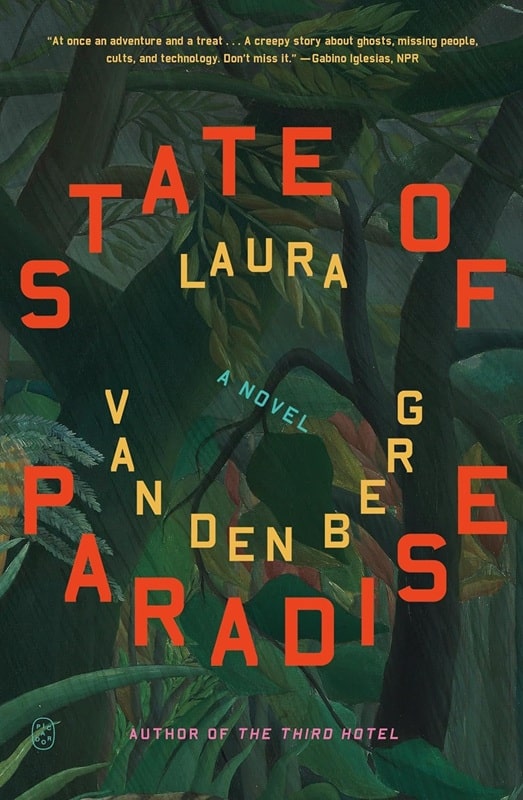
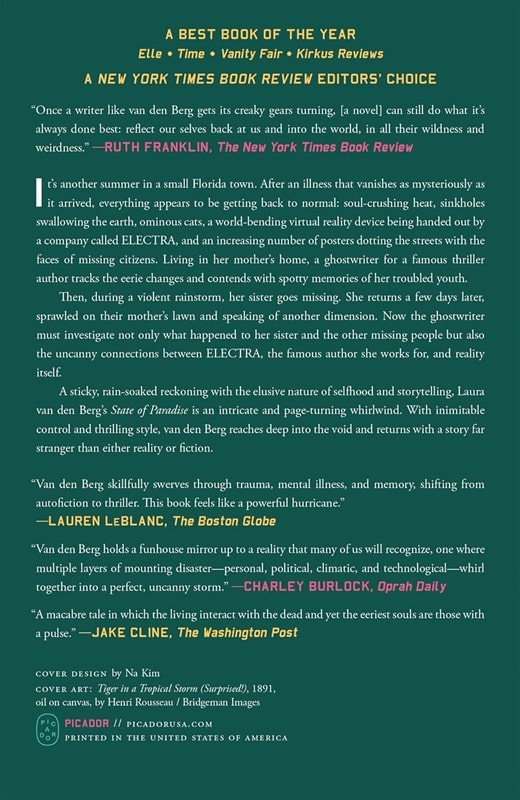
State of Paradise (Picador paperback reprint, July 8, 2025). Cover art:
detail from Tiger in a Tropical Storm by Henri Rousseau, 1891
When I was a kid there was a public service announcement on TV that went something like “Attention: Aliens. You are required by law to report by January 31st.” This was because of the Alien Act of 1940, otherwise known as the Smith Act. Basically, the legislation made it illegal to advocate the violent overthrow of the U.S. government and provided for a tracking system of non-citizens who, in the context of Nazi occupation of Eastern Europe and its then alliance with the Soviet Union, were potential suspects of espionage and sabotage. (Fun fact: prosecutions for advocating overthrow of the government have been ruled as unconstitutional violations of the First Amendment, in case you were wondering how any nitwit on social media can mouth off about doing just that.)
But as I didn’t know anything about this, the announcement always conjured an image of big headed, bug-eyed tentacled Martians registering at the local post office. Which I thought pretty funny. One thing I’ve learned over the years, and particularly these days, is that much of what adults say in all seriousness is often funny, but not in a “ha ha” way. More in a Jean Paul Sartre absurdist kind of way.
Needless to say, alien life forms are foundational science fiction, horror, and fantasy tropes. While some genre writers and filmmakers may very well have thought it just might be cool to tell stories about monsters from other worlds, the notion of aliens amongst us primarily serve as metaphors for, among other things, Communists and related usurpers of “normal” socio-political mores, fears of nuclear holocaust, technology run amok, repressed sexual desire, climate change, disease, and disembodiment.
Probably to a large extent due to the COVID-19 pandemic as well as severe climate events such as the California wildfires, today’s alienation storyline is less “aliens amongst us” and more “us alienated from the world.”
Which brings us to State of Paradise by Laura Van Den Berg.
The title is ironic, referring not only to Florida and its reputation as a refuge for the aged retired, the sunburned, and the weird, but that if the existential human condition is sometimes characterized using the Biblical metaphor of banishment from Eden, we currently find ourselves further away from Paradise than ever before.
In Florida, my husband runs. Ten miles a day seventy miles a week. a physical feat that is astonishing to me. He started running after he got stuck on a book he is trying to write, a historical account of pilgrims in medieval Europe. Back then it was not unusual for pilgrims to traverse hundreds of miles on foot… My husband is a trained historian and fascinated by journeys. He wants to understand what has become the pilgrimages in our broken modern world.
The first person narrator is
…a writer, though not a real one, I ghost for a very famous thriller writer. When I first got the job, I spent a month reading books by the famous author, to better understand the task that lay before me… the phrase everything is not as it seems appeared in nearly all the book descriptions.
Indeed, everything is not as it seems as the narrator (a kind of ghost herself) proceeds on a pilgrimage not only through actually weird Florida, where the 1930s Tarzan movies were filmed and non-native Pythons abound alongside Everglades alligators and Disney characters, but an alternate reality to which her sister and others somehow travel. Along the way are treated to torrential rain and flooding, sinkholes, virtual reality headsets, cults, and cats. And voluntary human extinction meetings. Just another day in Paradise.
With a history of being institutionalized, our narrator may be unreliable, and as a writer she is in the business of making things up. Not much cause for cognitive dissonance given the made-up unreliable narratives of our daily news cycle.
The plot, such that it is, concerns finding out what happened to her sister and others during their disappearances. And along the way what is happening to the narrator as she tries to figure out an increasingly strange world that nonetheless comes to define everyday existence. And whether she can trust what she is experiencing and what she remembers of those experiences.
Sometimes I wonder what we are supposed to do with our memories. Sometimes i wonder what our memories are for. A latch slips and the past floods in, knocking us flat. We leave places and we don’t leave places. Sometimes I imagine different versions of myself in all the different places I have ever lived, inching time in parallel.
This is a novel about the proverbial frog in boiling water, how because as the temperature only gradually rises, we don’t realize we’re being cooked. One absurdity follows another, and it is just how things are. We are now the aliens, journeying towards some unsettling destination, and we don’t have to bother to report.
One of the weirdest things about this period of time is the parts that still seem normal. Mundane and non-apocalyptical. Like how one minute we need an inflatable raft to cross the street and another we’re eating pasta at my sister’s house.
Or as Alice Cooper put it, “Welcome to my nightmare.”
David Soyka is one of the founding bloggers at Black Gate. He’s written over 200 articles for us since 2008. His most recent was a review of Polostan by Neal Stephenson.
Of Men, Monsters, and Little People
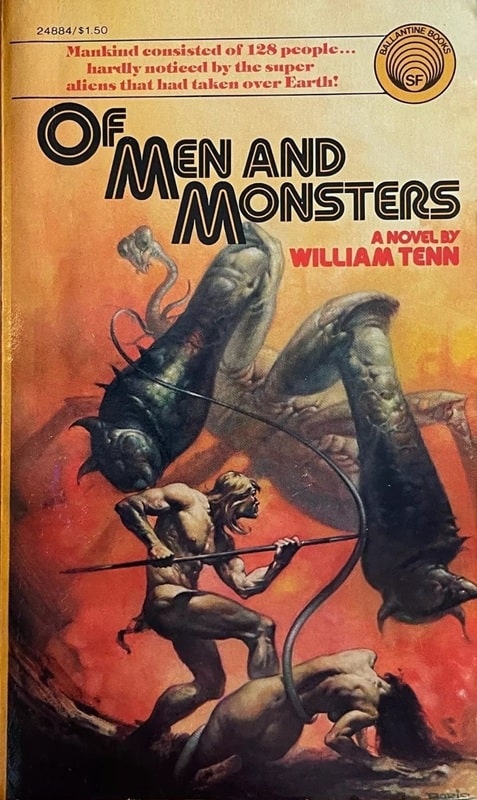

Of Men and Monsters, by William Tenn
(Ballantine Books, December 1975). Cover by Boris Vallejo
After posting about The Borrowers by British author Mary Norton (1903 -1992) last week, several people mentioned other books and movies with similar kinds of themes — little people living in the houses of big people. I thought I might take another post to discuss a few other examples from my own book collection.
First up is series by American author John Peterson (1924 – 2002). The first one was just called The Littles and was published in 1967, 15 years after The Borrowers (1952). The Littles live much like the “borrowers. They look human except for having tails. (In films they apparently look very mouselike but that’s not the case in the books.)
[Click the images for less little versions.]
 The Littles, by John Peterson (Scholastic Books, 1991-1993 editions). Covers by Jacqueline Rogers.
The Littles, by John Peterson (Scholastic Books, 1991-1993 editions). Covers by Jacqueline Rogers.
Unlike with The Borrowers, I never heard of The Littles until I was buying books for my own son, (Josh), even though many were written when I was a kid. I stopped by Josh’s school to pick him up one day and they were having the Scholastic Book fair.
When I was a kid, we never had a fair where you could actually see the books, but we did get the order forms and I bought quite a few books through them for 25 cents or so when in grade school. I had to stop by this one at my son’s school and found out about The Littles. I bought every one they had, ostensibly for my son but at least halfway for myself. I read them all, too, although I don’t think Josh read them all.
There are a bunch of these books and more were written after Peterson’s death, but here are the ones I have. All covers are by Jacqueline Rogers, with charming interior illustrations by Roberta Carter Clark. (These are written specifically for children and I don’t think the stories are as good as in The Borrowers series, but they are fun.)
The Littles, 1967
The Littles have a Wedding, 1971
The Littles and the Trash Tinies, 1977
The Littles Go Exploring, 1978
The Littles and the Lost Children, 1991
The Littles and the Terrible Tiny Kid, 1993
In my twenties I came upon another series about tiny people. This was a trilogy by Gordon Williams (1934 – 2017) that included The Micronauts (1977), The Microcolony (1979), and Revolt of the Micronauts (1981) — all from Bantam Books.
 The Micronauts by Gordon Williams (Bantam Books, August 1977, May 1979, and August 1981). Covers by Boris Vallejo, Lou Feck, and Peter Goodfellow
The Micronauts by Gordon Williams (Bantam Books, August 1977, May 1979, and August 1981). Covers by Boris Vallejo, Lou Feck, and Peter Goodfellow
These are SF novels, not to be confused with the toy series and comic book series from Marvel with the same name — which I’d never heard of until I started looking into stuff for this post. The difference here is normal sized people are cloned at 1/8th their natural size in order to deal with a catastrophic future where most natural resources have been exhausted. The experiment is set up in a controlled environment but things soon get out of control.
I liked all three very much and they had some cool covers. The Micronauts has a Boris Vallejo cover and interior illustrations. The Microcolony has a wonderful Lou Feck cover that I love. Revolt has a Peter Goodfellow cover.

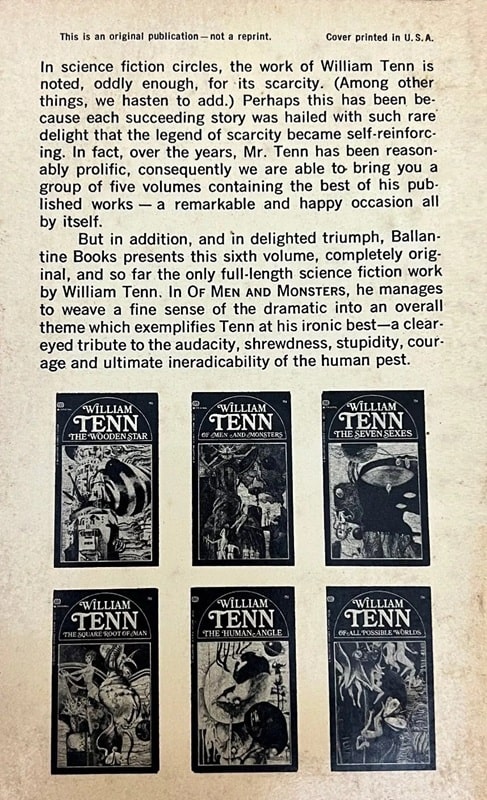
Of Men and Monsters, by William Tenn
(Ballantine Books, June 1968). Cover by Stephen Miller
The last book I’ll review today is one of the first adult SF novels I ever read, Of Men and Monsters, by William Tenn (1920 – 2010). It’s still a fond memory. Tenn was the pseudonym for a British born author named Phillip Klass, although he moved to the US before he was 2. The book was published in 1968 and I read it in a library edition, but years later I bought a Del Rey printing with a great cover by Boris Vallejo (see top).
This one has its own twist on the theme. The people are normal sized, but they are survivors of an invasion by gigantic aliens so huge that the humans can live like mice in their walls. I just loved it, and found out from Adam Tuchman on Facebook that it was originally published in a shorter version in the October 1963 issue of Galaxy, called “The Men in the Walls.”

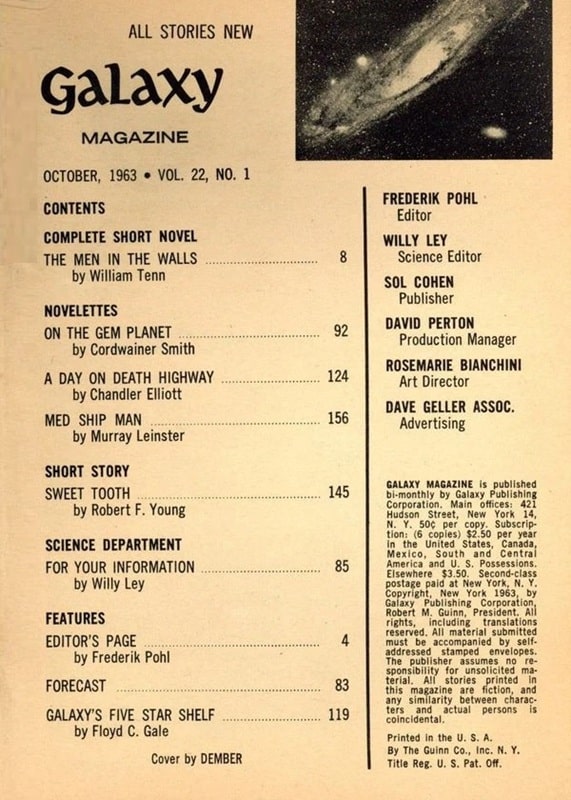
Galaxy, October 1963, containing “The Men in the Walls,” plus stories
by Cordwainer Smith, Murray Leinster, and more. Cover by McKenna
I’ll note that the ending Of Men and Monsters takes us into Sword & Planet territory.
There are plenty more I could talk about here, such as Lindsay Gutteridge’s Cold War in a Country Garden Trilogy, and Ben Sheppard reminded me of an awesome story called “Surface Tension” by James Blish, which deals with the miniaturization theme. There’s Asimov’s Fantastic Voyage, and even the movie Honey, I Shrunk the Kids, but this post is getting long as it is.
Charles Gramlich administers The Swords & Planet League group on Facebook, where this post first appeared. His last article for Black Gate was And Now For Something Completely Different: The Borrowers, by Mary Norton.
Taking the Ridiculous Seriously
 Look! It’s fun! Image by Patrycja Kwiatkowska from Pixabay
Look! It’s fun! Image by Patrycja Kwiatkowska from Pixabay
Good afterevenmorn!
I hope everyone who has to suffer through the daylight savings shift Sunday are coping with losing that hour of sleep. To those to whom that does not apply, know that I am fiercely jealous of you. But let’s not dwell on our minor hardships. Today, I want to talk about writing, and very specifically how to make situations that are absolutely ridiculous on the outside feel real and very serious.
This came to me as I walked home from work today, thinking of my serialised novel (online on my blog every Friday until it concludes… look at me dropping a plug). It has, if you were to distill it down, the silliest, most ridiculous premise you could possibly imagine: Zombies, but make them hyper-aggressive, human-sized fairies.
Yup.
It’s so dumb. On the outside of it. And to be fair, I had so much fun writing it; giggling like a twit at how silly it all actually is. I take great delight in pointing out the hilariously ridiculousness of the premise. If I managed to do it well, then it will feel a good deal more serious than it seems when you distill it. If I pulled it off, it won’t feel how ridiculous it is. Whether I did or not is not really for me to decide, but here are some things I did in an effort to make it work. Maybe they’re something you can think about if you find yourself in a similar situation.
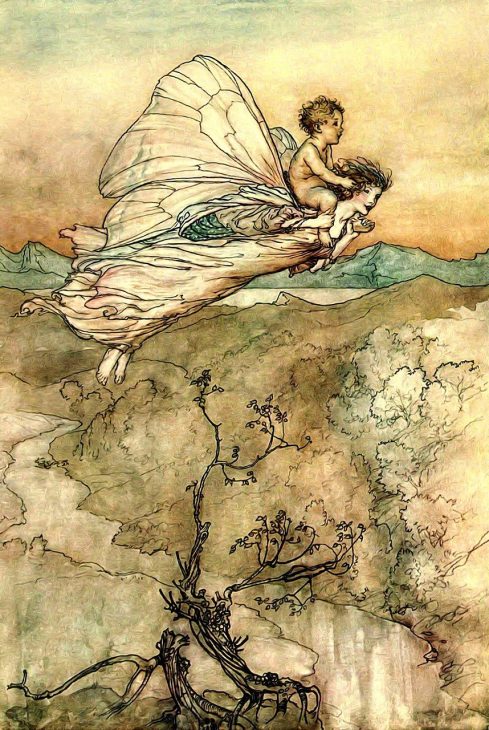 Image by Prawny from Pixabay
Image by Prawny from Pixabay
1. The situation might be ridiculous, but your characters don’t know that.
Let’s be honest. If you’re fighting for your life in a city that has been overtaken by a swarm of mindless winged humanoid killers, you’re probably going to be too busy trying to survive to worry about how silly it all actually is. That might come later, after you have done the surviving. If your characters treat their situation seriously (and it kinda is; they’re fighting for their lives), it’ll be much easier for your readers to suspend their disbelief while reading it. They’ll buy human-sized fairies attacking in swarms and consuming a city of millions in less than twenty-four hours.
It will probably also help to have at least one character who is familiar with really weird situations. Think of Mulder and Scully in the X-Files. They’re constantly facing things that, on the outside, are completely unbelievable, even ridiculous. But it works precisely because they take it seriously when they’re in the moment, and Mulder is a believer. However weird or out there a situation is, Mulder just accepts is as fact and rolls with it. It makes it easy for the viewer to do the same.
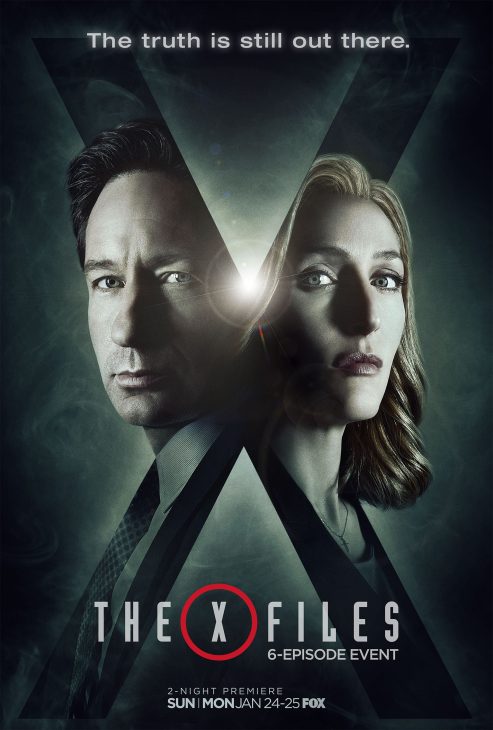
2. The situation is ridiculous, and your characters absolutely know it.
This isn’t an and/or situation with number one, trust me. If I found myself facing a mindless winged humanoid, I would absolutely demand of no one in particular what the actual f[redacted]. Having a character call out the idiocy of the situation they find themselves in — while taking it very seriously — is may be a way to get readers on board. This is especially true if the world you’ve built is encountering the situation for the first time.
If winged humanoids are a normal thing in the world, then having a character acknowledge how stupid that seems, will probably distance the reader and make it hard for them to suspend their own disbelief. However, if these creatures are not a part of your characters’ every day reality then having someone be absolutely incredulous at the situation they face will help your reader relate, making it easier for them to sink into the story.
It works for me, in any case. If the characters I’m reading aren’t absolute morons that question absolutely nothing, then I’m much more amenable to accept the scenarios they’re put through. Mind you, I’m not an especially critical reader, so I get sucked into stories a lot more frequently than most. It is both a blessing and a curse.
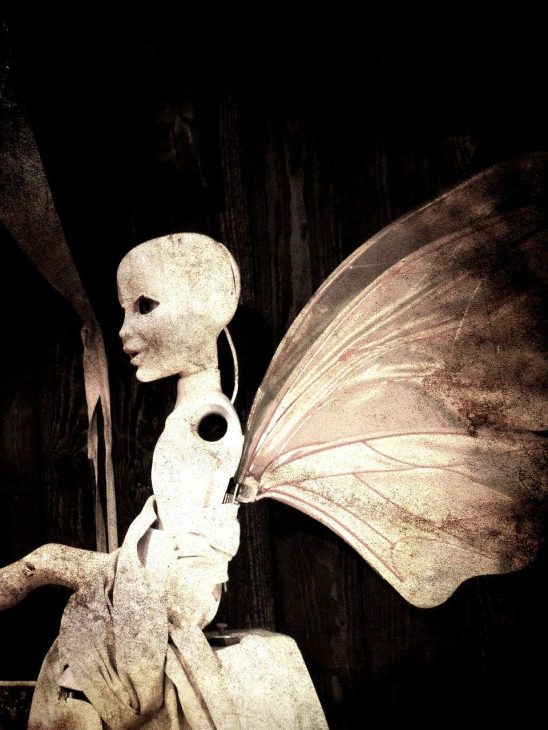 Image by Karen Nadine from Pixabay
Image by Karen Nadine from Pixabay
3. Keep it grounded
This might sound impossible, given the fantastic situation you’re trying to create, but keeping it as grounded as possible will help. There are a number of ways to do this. Providing real consequences for mistakes is one. Have people get hurt, or die. People will suffer in these situations if they ever actually happened; there will be grief, and fear, and anger. You’re already stretching incredulity with the situation. Have everyone dancing along unscathed will be pushing it much too far. This is especially important if it’s not taking place in a world that is easily relatable. I got a leg up, because the serial is set in a fictional city, but in the real world and set in 2024. There are a lot of touchstones that are easily digested for a reader.
It becomes harder if the entire world is fantastical. Finding something grounding in a world where trees talk or teleport, or whatever, is much harder. It’s not impossible, though. Find those touchstones and use them.
Did I achieve creating a story that brings people along and has them absolutely invested while also having gate silliest premise I think I could possibly conjure? No idea. But I tried, and I used these three (and other) things in the attempt. Maybe they’ll help you, too. If you’ve read books or are currently writing one which has an absolutely ridiculous premise, let me know what, and what worked (or didn’t). If you have any tips of your own for making a silly premise both believable and feel serious, also let me know in the comments below.
When S.M. Carrière isn’t brutally killing your favorite characters, she spends her time teaching martial arts, live streaming video games, and cuddling her cat. In other words, she spends her time teaching others to kill, streaming her digital kills, and a cuddling furry murderer. Her most recent titles include Daughters of Britain, Skylark and Human. Her serial The New Haven Incident is free and goes up every Friday on her blog.
Eleven Years of Monday Mornings with Bob
Wow. Eleven years ago today, on March 10, 2014, I became an official Black Gate blogger. The Public Life of Sherlock Holmes kicked off a three year run, bringing a mystery presence every Monday morning. I roamed off topic a bit – but NOTHING like I do now. I mean, did you read last week’s baseball post?
Encouraged by my buddy William Patrick Maynard (an established Black Gater), I went from some uknown guy commenting on other people’s posts, to a moderately interesting weekly columnist. And every World Fantasy Award-winning website, with an amazing roster of bloggers, needs a mystery column, right???
I talked about joining Black Gate in my chronicle of what passes for my writing career: Ya Gotta Ask.
And So It Began
By my count, I have written 510 posts here at Black Gate. That doesn’t include those posts I’ve hoodwinked folks…I mean, ones written by my gracious and talented friends. Discovering Robert E. Howard, Hither Came Conan, Talking Tolkien, and A (Black) Gat in the Hand have included some FANTASTIC stuff from others, and I’m very grateful to everyone who has used my Monday morning slot to make Black Gate even better.
I average about 1,000 words a post, and I frequently go over; I don’t go much under that (I write like I talk…). So, It’s not unreasonable to say I’ve written a half a million words here at Black Gate, over the past eleven years.
It’s been a fantastic ride, and I’ve gotten to write extensively about Sherlock Holmes, Robert E. Howard, Nero Wolfe, John D. MacDonald, Douglas Adams, Humphrey Bogart, RPGs and gaming, TV shows and movies, hardboiled Pulp, and pretty much anything else I like. I’m very ‘Squirrel!’.
I’ve created some regular features, such as What I’ve Been Watching, What I’ve Been Reading, and What I’ve Been Listening To (audiobooks).
Hither Come Came Conan will always be one of the proudest achievements of my writing career. And I honestly think if I could find out how, A (Black) Gat in the Hand should win some kind of mystery award.
I’ve tried to add new multi-contributor series’. I haven’t managed to pull one off for Solomon Kane, or John D. MacDonald, or Columbo, or Star Trek. But I haven’t necessarily given up yet. And I’m sure more will come to mind.
I have grown as a writer in many ways, in my eleven years at Black Gate. I know I’m a better blogger than when I started. Not that that would have been hard to do…
I did a 24? in 42 podcast interview with Rogue Blades’ Jason Waltz, which just dropped last week. It’s the topic of next week’s post.
When he threw me a curveball with the first question (‘What color do you write in?’), I ended up talking about engagement. I write about things I’m interested in. I rarely write negative columns. I don’t wanna spend a thousand words bitching about something I don’t like (I’ve got Facebook and Reddit for that). I will be critical, sure. But if I hate the latest ‘whatever it is,’ I’m gonna find something else to write about.
I wanna share things I’m interested in. I know some folks have gone on to check out topics I’ve talked about. My annual summer Pulp series has been good for that. And I like when people comment. It means I made some kind of connection. I try to reply to every comment, and I think I’m about 98%. Engagement.
I hope when somebody reads my Monday morning post, they enjoyed it. But more, I hope it resonated somehow. I’ve learned things, and gotten recommendations, from the comments. Engagement.
BG head honcho John O’Neil praised my stuff by saying I try to educate people. That’s part of me sharing stuff I enjoy. If there was a Norbert Davis Appreciation Society, I would be the president. So, I’ve written about the under-appreciated Black Mask Boy, several times. I’ve written a lot about Nero Wolfe, John D. MacDonald, and Terry Pratchett. They are three of my favorite writers, and I want to share with readers here. It’s obvious I’m a huge Douglas Adams fan, if you do a search on the site.
And I’ve certainly espoused my love of Robert E. Howard here at Black Gate.
I joke that I’ll keep doing a weekly column for as long as I can get around the firewall.
My life has changed a lot since I started this column. Divorce, moved, changed jobs (there was some kind of Pandemic, I hear…). But I have averaged 46 essays a year, for 11 years. And it would be many more, if I didn’t conned folks into writing some for me, once in awhile.
I talk about other Black Gaters who are Writers with a capital ‘W.’ And I consider myself a lower case ‘w’ writer.
But you know what? I’ve won three awards for my writing (and editing). You can buy my short stories in anthologies on Amazon. I was a regular columnist for a British mystery magazine. And I’m writing intros to books published by Steeger Books – sometimes with a cover mention. I followed Ian Esslemont (I’m a Malazan fan) on a podcast for authors. Ian Esslemont!
And I’ve been doing a thousand words a week, for eleven years. In this age, being a blogger is a valid way to write. I’m finally gonna give myself that capital W.
So, until they tighten up the firewall, I plan on continuing here at Black Gate for a while. Hope you keep finding things you like to read. And leave some comments. Let’s have a discussion.
Let’s engage.
And today’s post title is a nod to a popular memoir by sportswriter Mitch Albom, Tuesdays with Morrie.

Bob Byrne’s ‘A (Black) Gat in the Hand’ made its Black Gate debut in 2018 and has returned every summer since.
His ‘The Public Life of Sherlock Holmes’ column ran every Monday morning at Black Gate from March, 2014 through March, 2017. And he irregularly posts on Rex Stout’s gargantuan detective in ‘Nero Wolfe’s Brownstone.’ He is a member of the Praed Street Irregulars, founded www.SolarPons.com (the only website dedicated to the ‘Sherlock Holmes of Praed Street’).
He organized Black Gate’s award-nominated ‘Discovering Robert E. Howard’ series, as well as the award-winning ‘Hither Came Conan’ series. Which is now part of THE Definitive guide to Conan. He also organized 2023’s ‘Talking Tolkien.’
He has contributed stories to The MX Book of New Sherlock Holmes Stories — Parts III, IV, V, VI, XXI, and XXXIII.
He has written introductions for Steeger Books, and appeared in several magazines, including Black Mask, Sherlock Holmes Mystery Magazine, The Strand Magazine, and Sherlock Magazine.
One of the Finest Achievements of Heroic Fantasy in the 20th Century: Dilvish, the Damned by Roger Zelazny
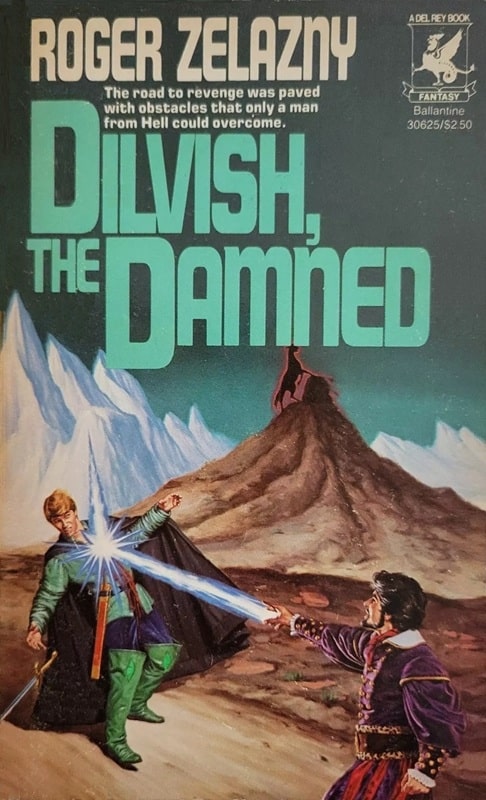
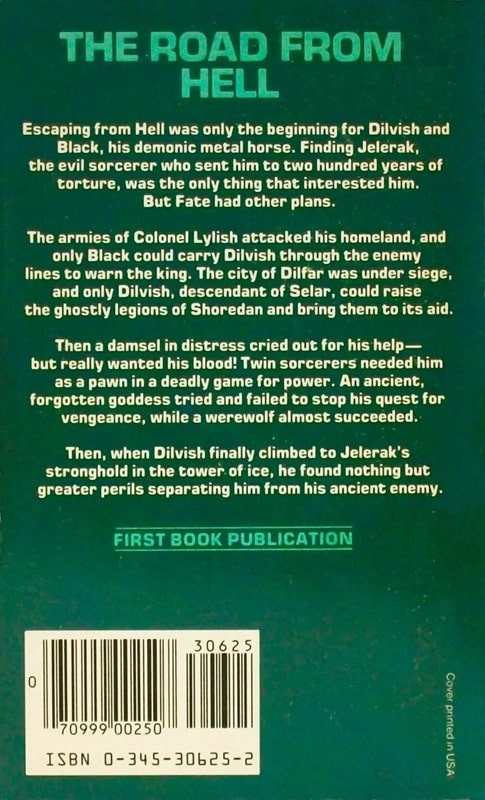
Dilvish, the Damned (Del Rey, November 1982). Cover by Michael Herring
Roger Zelazny was unquestionably one of the great American fantasists of the 20th century. That’s not to say he was perfect. His woman characters were often 2-dimensional, and he paired an unwillingness to work with an outline (“Trust your demon” was his motto) with a fondness for projects that really needed an outline.
But perfection is boring. Zelazny rarely is. Much of Zelazny’s work is on my always-reread list, anyway. He had a nifty way of putting things, and in describing the Amber series he brilliantly expressed the kind of fiction I love best and have often tried to write: “philosophic romance, shot through with elements of horror and morbidity.” Philoromhorrmorbpunk. That’s my genre. Or you could just say sword-and-sorcery.
Some people doubt whether Zelazny counts as a sword-and-sorcery writer, but he didn’t doubt it. He described not only the Corwin novels but also big chunks of Lord of Light as sword-and-sorcery. Some people think that a story only counts as S&S if it has a Clonan at its center, but as far as I’m concerned, if you’ve got an outsider hero on a personal mission in a landscape of magical adventure, and there are swords or other edged weapons, you’ve got sword-and-sorcery.
It doesn’t matter if it’s set in the deep future (e.g. Vance’s stories of the Dying Earth), or in an imaginary past (e.g. REH’s pioneering stories about Solomon Kane, Kull, Conan etc, but also C.L. Moore’s Jirel of Joiry and Cabell’s tales of Poictesme), or another world (e.g. Leiber’s Fafhrd and the Gray Mouser series).
And, anyway, Zelazny obviously counts as a sword-and-sorcery writer because of the Dilvish series. In some ways, it’s one of the finest achievements of heroic fantasy in the 20th century. In some ways, not. Details (a lot of them) ahead.
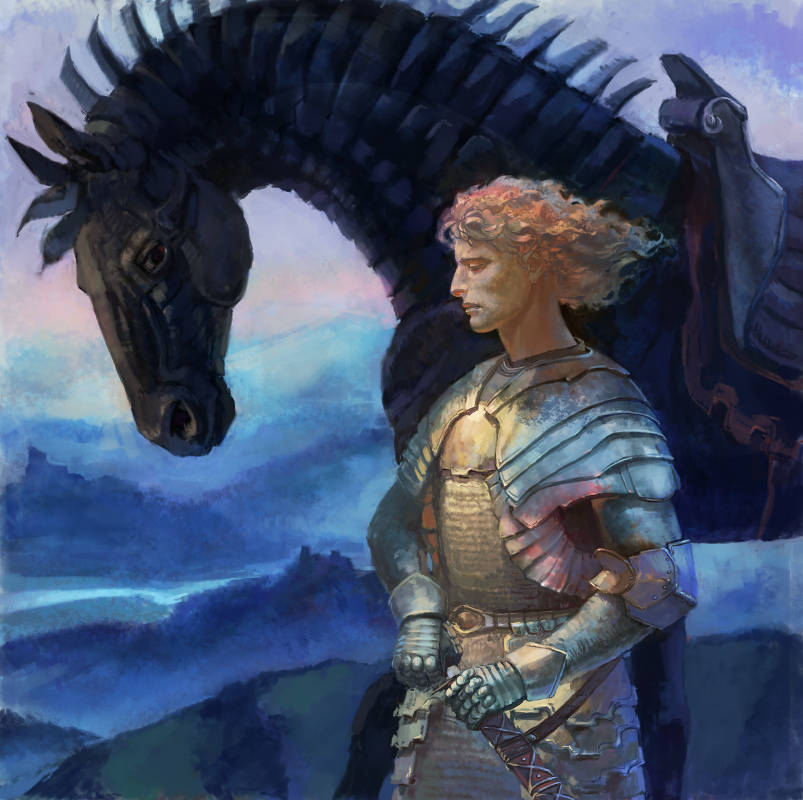 “Dilvish and Black,” fan art by Olga Sluchanko. Dilvish never had a cover painting this good in his damned life.
“Dilvish and Black,” fan art by Olga Sluchanko. Dilvish never had a cover painting this good in his damned life.
Dilvish, a.k.a. Dilvish the Damned, a.k.a. the Colonel of the East, first appeared in Fantastic under the guiding light of Cele Goldsmith, one of the great sf/f editors. After Goldsmith left the helm of Fantastic and Amazing, Zelazny continued to appear in those magazines, until he fell out with their new owner, Sol Cohen.
From that point Dilvish went into exile, the condition most natural for s&s heroes. He made appearances in a fanzine here, a small-press publication there. Zelazny’s hazy plan was to bring out a volume of Dilvish stories “to culminate in a possible novel, Nine Black Doves.” (Letter from Zelazny, 1965, quoted in the afterword to “Thelinde’s Song” in Power & Light.) When the Dilvish collection ultimately appeared from Del Rey in 1982, it was called Dilvish the Damned and it was paired with a booklength Dilvish adventure, The Changing Land.
A real golden age for Dilvish fans (which I had been since reading “The Bells of Shoredan” in a back-issue of Fantastic sometime in the mid-70s).
Or: maybe not.
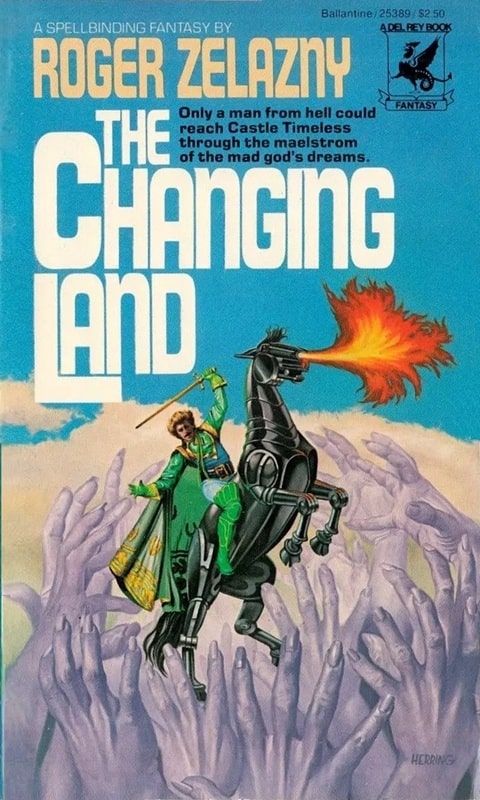
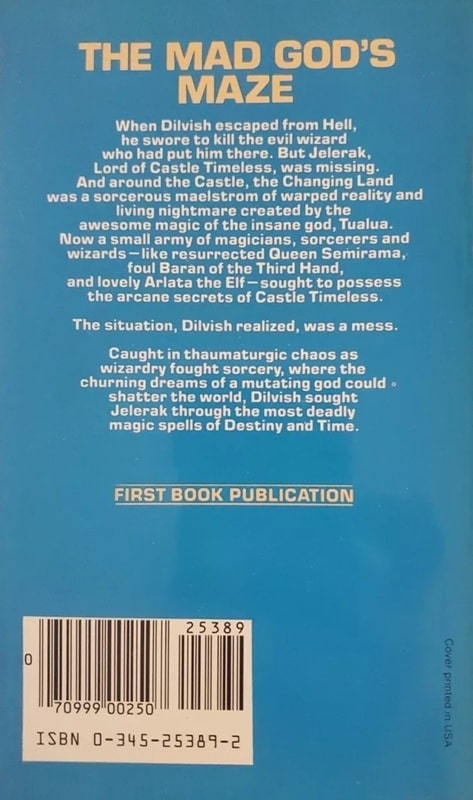
The Changing Land (Del Rey, April 1981). Cover by Michael Herring
I didn’t glom onto these books as soon as they were published; I’d been drifting away from buying books as my life became nomadic (and chaotic) in my early 20s. When I did finally get hold of the volumes I was, to say the least, underwhelmed. I wasn’t crazy about the covers, for one thing. Michael Herring is a talented artist, but I like his work better for sf; these covers are kind of Brothers-Hildebrandtish. (From some, that would be praise, but not from me. De gustibus non disputandum.)
I also didn’t like the titles: Nine Black Doves is weird and evocative; Dilvish the Damned and The Changing Land are blunt and dull declarations, like a can of peas with a generic black-and-white label PEAS.
But a book by Zelazny is a book by Zelazny, so I bought both paperbacks when I had a chance… and was not crazy about them.
“Even Homer nods,” I said to myself, and put them in a box somewhere.
When NESFA Press, that beacon of glory in sf/f publishing, produced its monumental series collecting all of Zelazny’s short fiction (Grubbs, Kovacs, and Crimmins ed.), of course I seized on the volumes as soon as I could, read them through, and loved them furiously.
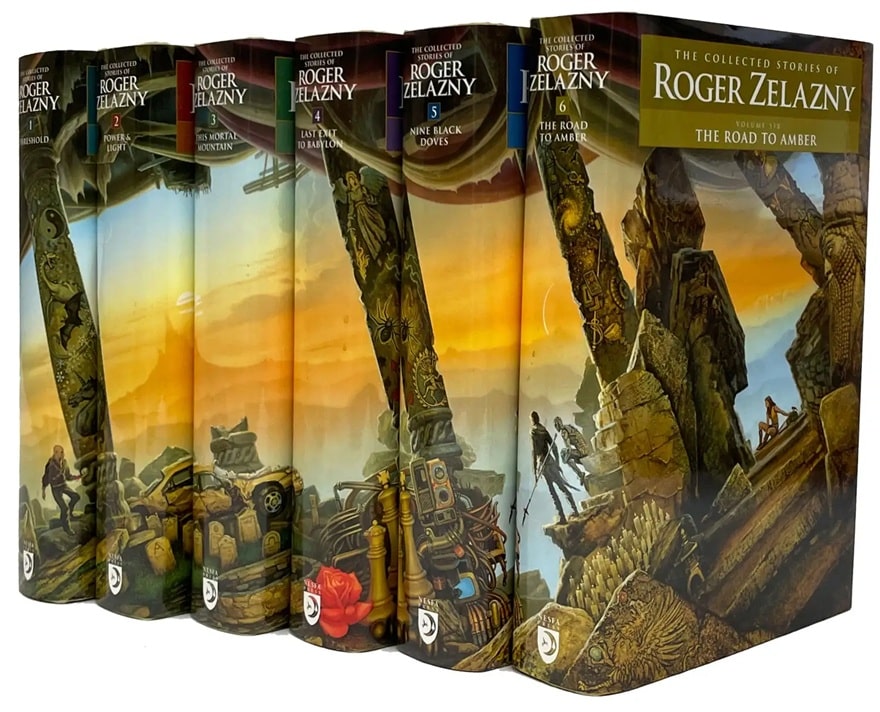 The Collected Stories of Roger Zelazny, all six volumes (NESFA Press, February – December, 2009). Covers by Michael Whelan
The Collected Stories of Roger Zelazny, all six volumes (NESFA Press, February – December, 2009). Covers by Michael Whelan
There were expected and unexpected pleasures in these volumes, but one of the surprises was how much I liked some of the Dilvish stories, tarnished in my fading memory by that 80s-era read. “I should reread the whole set of Dilvish stories together sometime,” I thought.
That was fifteen years ago, so maybe it’s time.
My executive summary, in case you don’t have the patience to read through these notes, is that the Dilvish stories contain some of Zelazny’s best writing, and some of his worst. My initial, uneasy thought was that the early stories were good and the later stories were bad, but that turned out to be too simplistic; one of the last Dilvish stories he wrote is maybe the single best thing in the two Dilvish books.
I reread the stories in the electronic version of the NESFA Collected Stories, which I recommend even more strongly than the original edition, because the editors have continued to revise and proofread the books. The design of the collections is to include the stories in the order they were composed, to the extent that can be ascertained, but they bend that rule when one story was written to provide backstory for another. (Which is exactly the right attitude toward rules. Rules should be governed by intelligence, not vice versa.)
Is Dilvish the Damned a novel or a collection of stories? I suppose I could waive the question, since I’m rereading the stories individually. But it’s a live question for work like this — a series of connected stories read as a whole. Lots of people call these things “fix-ups,” because that’s what Van Vogt called it when he smashed the bizarrely square pegs of his 1940s stories into the boring round holes of his 1950s paperback originals.
I don’t like the term because I hate Van Vogt’s fix-ups, and I also think that the best examples of this form (e.g. Leiber’s F&G volumes for Ace, or the various collections of C.L. Moore’s Jirel and Northwest Smith stories, or Howard Andrew Jones’ Hanuvar novels) don’t replicate Van Vogt’s mistakes: they respect the original stories, even when they create connective tissue to string the stories together. I call this kind of thing an episodic novel, and keep hoping that the term will catch on.
Whatever this thing is, here’s what I thought of it. (YMMV; de gustibus non disputandum; objects in mirror may be closer than they appear; etc.) This is already getting to be pretty long, so I’ll defer my thoughts about The Changing Land to another time (if ever).
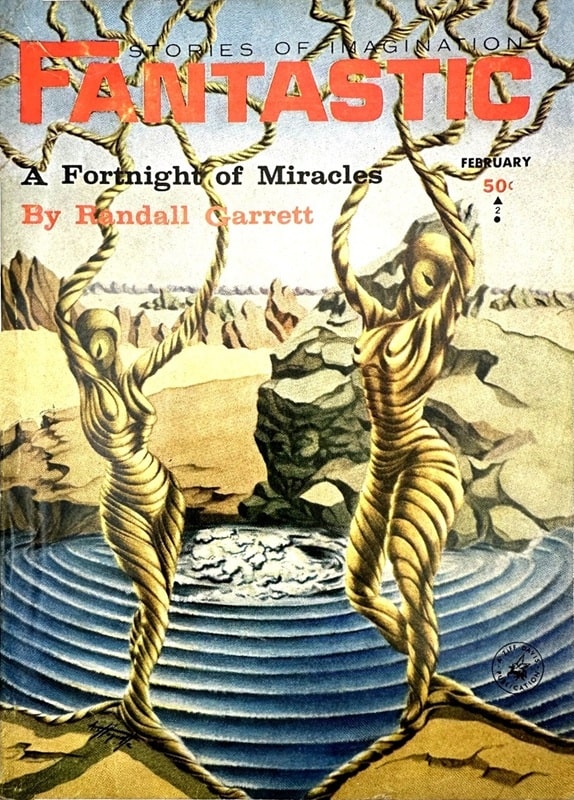 Fantastic Stories of Imagination, February 1965, containing the first Dilvish story, “Passage to Dilfar.” Cover by Heidi Coquette
1. “Passage to Dilfar” (1965, approx 2,000 words)
Fantastic Stories of Imagination, February 1965, containing the first Dilvish story, “Passage to Dilfar.” Cover by Heidi Coquette
1. “Passage to Dilfar” (1965, approx 2,000 words)
We meet Dilvish, already in progress, riding a horse made of steel named Black, “for whom it was said the Colonel of the East had bartered a part of his soul.” They are fleeing from a place called Portaroy, pursued by horseman sent by Lylish, Colonel of the West. (Dilvish himself is the aforesaid Colonel of the East.) Through hazards mundane and magical, they make their way to Dilfar, in the hopes that this city will withstand the onslaught of Lylish’s armies.
This is a very short story, approx 2,000 words, but it packs a strong, fantastical punch. It suggests a world far larger than anything it depicts. Zelazny claimed that he never intended to write a sequel, but Editor Goldsmith said it “begs for a series”, so Zelazny obliged. In fact, he started to plan a series of adventures, maybe to be capped with a novel called Nine Black Doves.
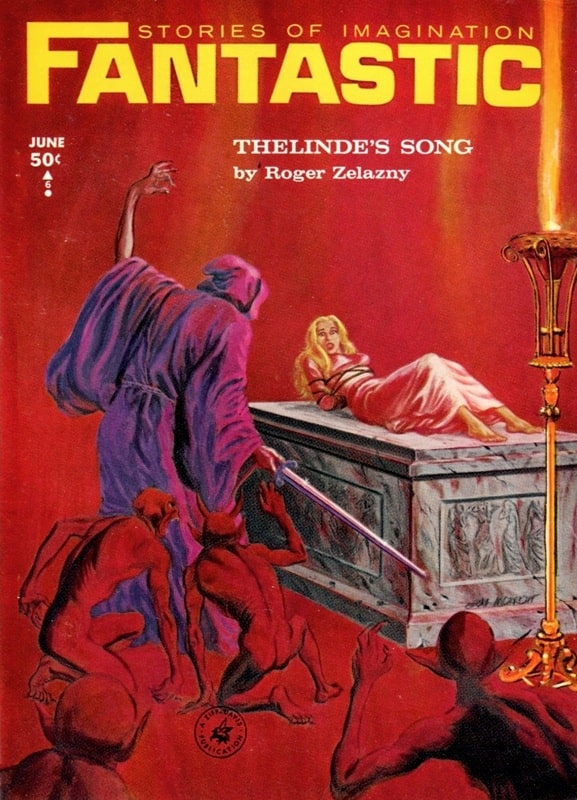 Fantastic Stories of Imagination, June 1965. Cover by Gray Morrow, illustrating “Thelinde’s Song.”
2. “Thelinde’s Song” (1965; approx 2,800 words)
Fantastic Stories of Imagination, June 1965. Cover by Gray Morrow, illustrating “Thelinde’s Song.”
2. “Thelinde’s Song” (1965; approx 2,800 words)
If you’re expecting an epic account of the defense of Dilfar against the slavering hordes of the Colonel of the West, that’s not where Zelazny is headed. There was such a defense, and it’s mentioned in passing here, including Dilvish’s final encounter with the warrior he met and bested (sort of) in the previous story.
But Dilvish himself doesn’t even appear as a character in this story, which is a conversation between the titular Thelinde and her witch-mother Mildin. Mildin explains the half-elven background of Dilvish, his victory in defending Portaroy in the old time, his magic green elf-boots, and his enmity with the evil and powerful wizard Jelerak.
Jelerak was using evil magic to evilly draw the youth out of a maiden; Dilvish tried to disrupt the ceremony; Jelerak changed Dilvish’s body to a statue and sent his soul to Hell. There Dilvish suffered for centuries, but now he’s escaped with a demonic horse named Black and Jelerak, with all his power, now has something to worry about.
This story isn’t much longer than “Passage to Dilfar.” Where “Passage” was all action, this is all exposition, and at times it seems like Zelazny has a list of things he wants his mouthpiece to talk about (e.g. Dilvish’s green elf-boots, magical equipment which you would think would affect the stories a lot, but usually do not). Still, this quasi-story is vivid and impactful and sketches in details about Dilvish and his world that make them loom even larger in the imagination.
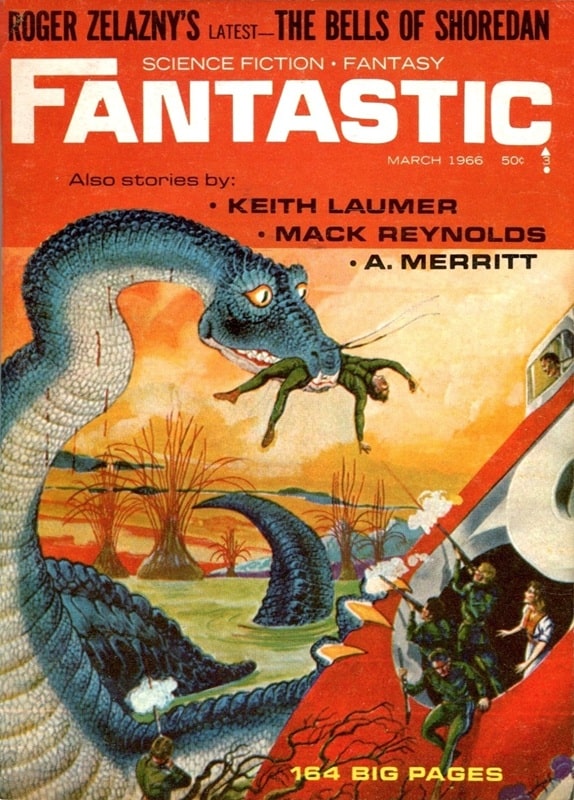 Fantastic, March 1966, containing “The Bells of Shoredan.” Cover by Frank R. Paul
3. “The Bells of Shoredan” (1966; approx 6,200 words)
Fantastic, March 1966, containing “The Bells of Shoredan.” Cover by Frank R. Paul
3. “The Bells of Shoredan” (1966; approx 6,200 words)
In this much longer story, Dilvish goes to the ruined city of Shoredan to ring its bells and summon its legions of the dead to fight against the Colonel of the West. On the way he must confront the ghost of his Elvish forebear Selar and the demon who tortured Dilvish in Hell, Cal-den. On the way he acquires the invisible blade of Selar.
If you like this kind of thing, you will like this story a lot. A sword-and-sorcery classic. If you read only one Dilvish story, it should be this one.
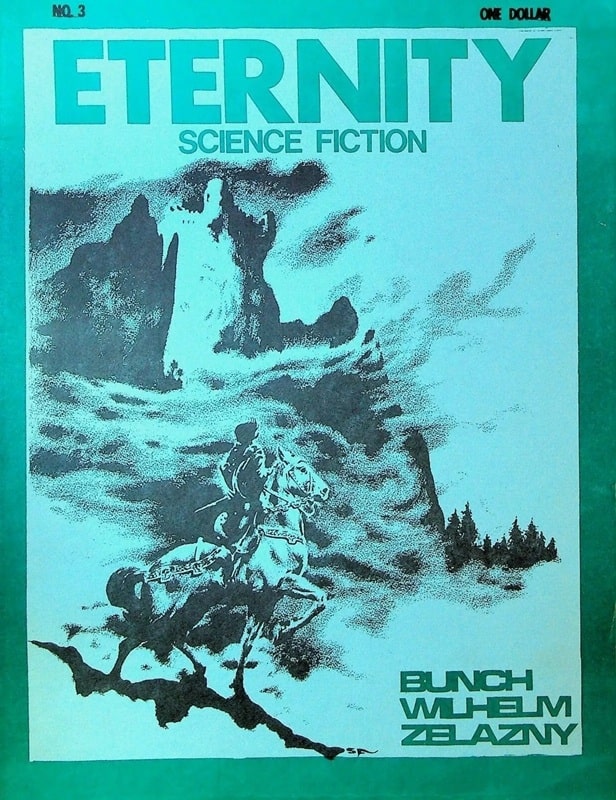 Eternity Science Fiction #3, 1974, containing “A Knight for Merytha.” Cover by Stephen Fabian
4. “A Knight for Merytha” (1967; approx 3,000 words)
Eternity Science Fiction #3, 1974, containing “A Knight for Merytha.” Cover by Stephen Fabian
4. “A Knight for Merytha” (1967; approx 3,000 words)
Again, where an epic fantasist would zig (i.e. follow up the previous story by describing the battle of the dead against Lylish), Zelazny zags. We catch up with Dilvish for a solo adventure as he travels alone with his steel horse and demonic sidekick Black.
And, if you were expecting more progress on the Jelerak plotline, that doesn’t happen either. Zelazny later described Dilvish as a man obsessed with revenge, but that isn’t clear in the actual stories. Jelerak isn’t mentioned at all in the first Dilvish story, or in this one, where he is scouting ahead of the “doomed army” he summoned to defeat Lylish.
Like a knight sans peur et sans reproche, Dilvish responds to the cry of a woman in distress (even though his wily steed warns him against it). If you think you know where this story is going, you probably do, but it’s a solid fantasy adventure involving a vampire. Sword-and-sorcery meets Hammer Horror. Cast Ingrid Pitt as Merytha and you’ve got it.
One particular detail that struck me about this story — more a worldmaking question than an issue with the story itself — is the use of the invisible sword of Selar (which Zelazny acquired in “Shoredan”). It’s hard to see (wokka-wokka-wokka) how such a sword would actually be useful. No doubt there’s a surprise factor when you approach your foe armed, but apparently empty handed. But how do you fight with it? You, as much as your opponent, need to know where your point is so you can stab him with it. There’s a great series of movies about a blind swordsman Zatoichi, but on film that stuff works because your eye sees it and the mind accepts it.
It wasn’t clear to me what skills Dilvish had or developed to make use of the invisible blade. Zelazny was a fencer and pursued a number of different martial arts and he may have had ideas about it, but the invisible blade disappears after this story, along with Lylish and the defense of Dilfar.
“A Knight for Merytha” originally appeared in a fanzine and was the last of the Dilvish stories for a while. Zelazny wasn’t sending his work to Fantastic or Amazing anymore, due to his quarrel with their new publisher, and when he got the sword-and-sorcery itch he would write about other characters — Sam the Buddha and his pseudo-divine frenemies, or Corwin of Amber and his quasi-divine familenemies.
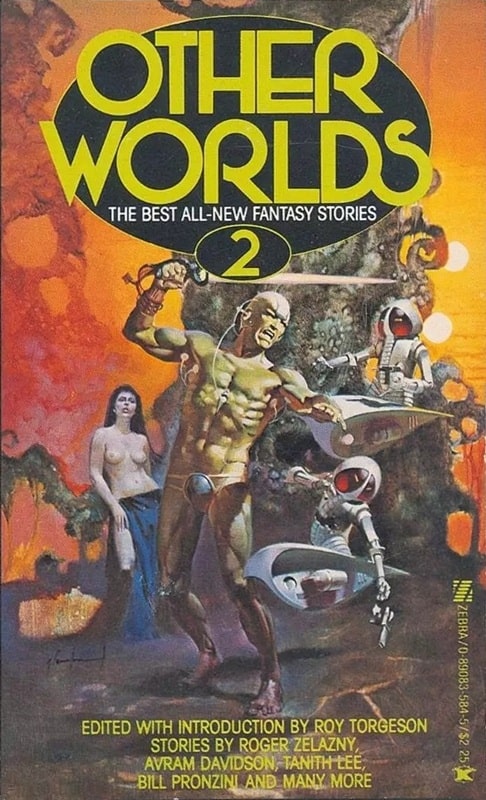
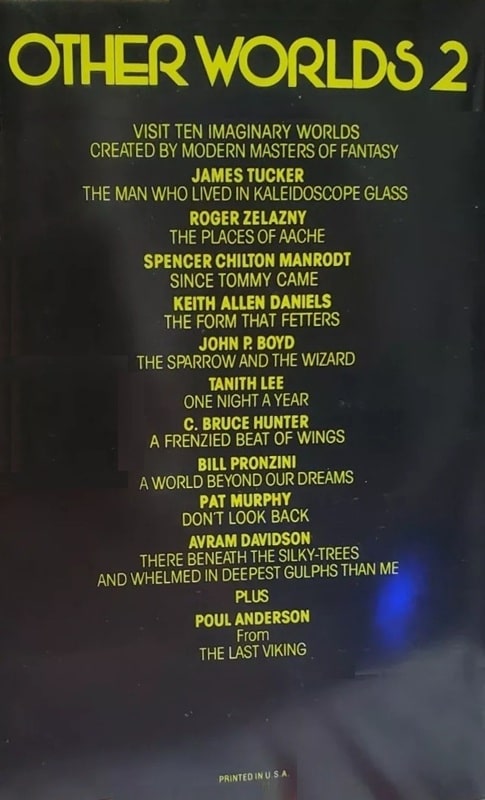
Other Worlds 2, edited by Roy Torgeson, containing
“The Places of Aache” (Zebra, January 1980). Cover by Jordi Penalva
We again find Dilvish wandering through strange lands alone (except for his faithful Black). He runs into a would-be robber who’s disconcerted by Dilvish’s militant response. The robber thinks he has protection from a local goddess, who authorizes his career of crime, but that doesn’t save him from Dilvish’s (non-invisible) sword.
Dilvish goes on to confront the sinister priest of the goddess, and the goddess herself. She’s a monstrous, many-limbed creature, and at this point you might expect an epic battle. What actually happens is that Aache (the monster-goddess) and Dilvish talk, and he figures out a solution for her particular set of problems. But there’s a menace lurking that neither of them expect, and the story ends on a tragic note.
This is a solid sword-and-sorcery adventure where the hero displays intelligence and compassion as well as ruthlessness and fighting skill. (The conversation between Dilvish and Rogis the robber is classic, Hammett-level tough-guy dialogue.)
There’s no mention of Jelerak here; there’s no mention of Lylish and the military conflict over Portaroy, Dilfar, etc.
6. “A City Divided” (1982)Originally published in Dilvish, the Damned.
We again find Dilvish wandering through strange lands alone (except for his faithful Black). (Yes I did just cut-and-paste that from the section above.) While travelling in the North Country, Dilvish falls into a city-sized trap, where a magical game is being played between two sorcerers. Dilvish’s fighting ability and Black’s infernal strength can’t get them out of this one, so Dilvish turns to magic — one of the twelve Awful Sayings that he learned in Hell.
There’s some good stuff here: conversations between Dilvish and Black, the depth of infernal lore suggested by a few strategic details, the conversation between Dilvish and the sorcerer Strodd at the end of the story.
But there’s also a lot of narrative busywork as Dilvish and Black try to negotiate the maze inside the city. Mazes are weird and perplexing when you’re in them, and that kind of experience films well (I’m thinking of a couple of very different scenes in The Stand and in Sleuth), but I don’t think it works well in fiction. Anyway, it didn’t work for me in this fiction.
The conflict with Lylish is mentioned (as completed in the past), and Jelerak is discussed at the end, including the place Dilvish expects to find him, the Tower of Ice. So there’s at least some attempt to fit this story into the over-arching plotline of the series.
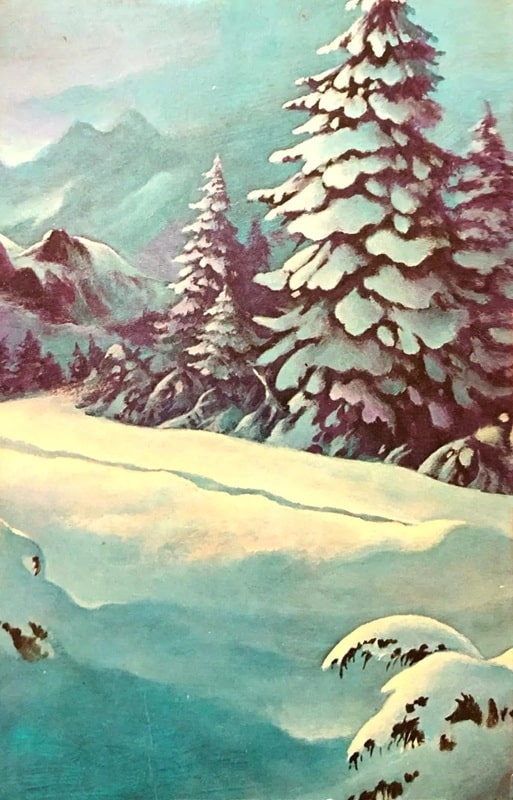
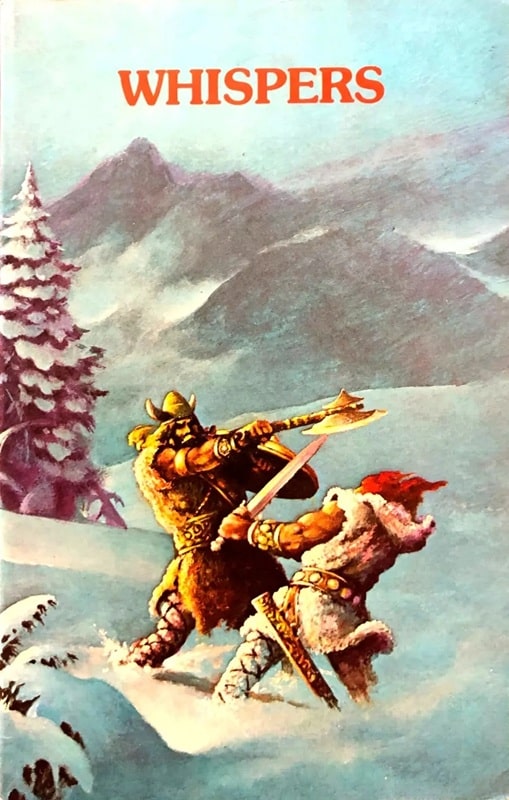
Whispers 2, October 1979, edited by Stuart David Schiff, containing “The White Beast.” Cover by Steve Fabian
We again find Dilvish wandering through strange lands alone (except for his faithful Black). My cut-and-paste notwithstanding, I don’t object to this generic type of beginning. Zelazny varies the descriptions to keep the thing interesting, and a sword-and-sorcery hero is usually a loner or at least an outsider. In this story, for instance, Dilvish’s name doesn’t appear until three-quarters of the way through this very short (approx, 1,200 words) story. He’s just described externally.
Now Dilvish is deep in the north, in a landscape of snow and ice, and he is being pursued through the icy wasteland by a white werebeast. Dilvish is not the guy to back away from a fight, but instead of killing the monster he offers to split his food with it. They engage in conversation and discover they have a common enemy.
This is only an episode, leading to the longest Dilvish story (except for the novel, The Changing Land), but it’s vivid and haunting.
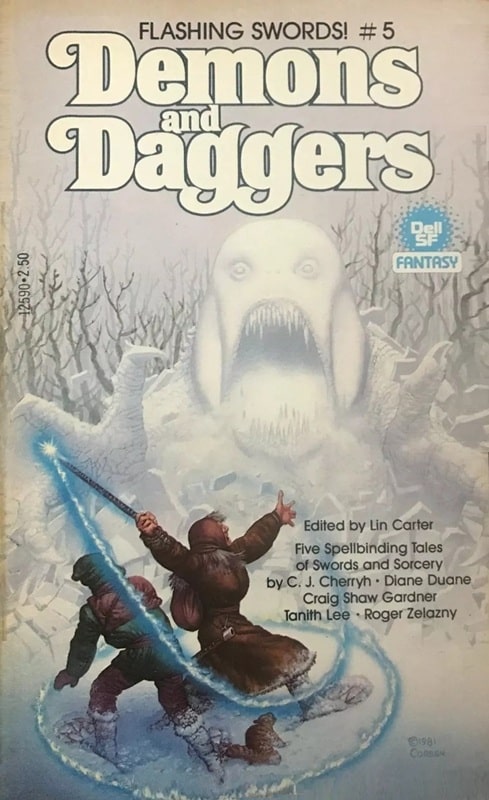

Flashing Swords! #5: Demons and Dagger, edited by Lin Carter,
containing “Tower of Ice” (Dell, December 1981). Cover by Richard Corben
We again find Dilvish wandering through strange lands alone (except for his faithful Black). But this is no mere random episode: Dilvish has finally reached one of Jelerak’s strongholds and hopes that he can have his long-sought-for confrontation with this Evil Wizard Who Is Evil… if he can just get into the damned place.
This is the longest of the Dilvish stories (except for the novel, The Changing Land). It was one that Zelazny had long planned on writing. And it is, in my view, the worst of the Dilvish stories (except for the novel, The Changing Land).
What went wrong? (If you love this story, you may be screaming “NOTHING!” so hard at your device that the screen cracks. But don’t do that. De gustibus non disputandum. And you can always write your own review.)
For one thing, this story was a rush job, and it shows.
The stage was finally set [for the novella ‘Tower of Ice’]. But I had no intention of carrying things further at that point. I was busy writing the novel Roadmarks and wanted to get on with it. A week after I’d sent off ‘The White Beast,’ though, I received a request from Lin Carter for a 20,000 word Dilvish story for Flashing Swords #5. It seemed like the Finger of Fate. I allowed myself a week and wrote ‘Tower of Ice.’
— Zelazny in Alternities 6 (Summer 1981), quoted in the NESFA collection Last Exit to Babylon (Grubbs, Kovacs, and Crimmins ed.)
There’s a lot of stuff in here: a brother and sister with a sorcerous connection, a wizard with multiple personalities struggling to control his power and himself, a sorcerer’s apprentice readying himself to confront his evil master in a magical duel to the death, a magic mirror prophesying a doom that grows ever closer, a captive demon, a demented monster in love with a demented witch who commands an army of demented rats. Etc! I say yay to all this. More is more!
Some of these people are the same person, but (significantly) none of them is Dilvish. This is not really his story, although we spend a lot of it following him around. There’s a lot of narrative busywork getting him into the Tower of Ice, and then a lot more to get him out, without fighting Jelerak, even though that nemesis shows up (in non-physical form). Dilvish departs with Reena, the sister of Ridley, Jelerak’s rebellious apprentice, and it’s Ridley who fights Jelerak. Jelerak seems to kill him and escape at the end of the story.
The upshot is that Dilvish is back on the road again, now with a female companion. The whole novella is just a narrative cul-de-sac, where Dilvish goes one way only to come back the way he came. No progress on Dilvish’s quest is made at all, and it’s not a satisfying episode (unlike many that preceded it and some that follow) because Dilvish doesn’t take any significant action that affects the story.
You never know what might have happened, but if Zelazny had taken more time writing this story, he might have made its diverse elements cohere into something more worth reading.
9. “Devil and the Dancer” (1982, approx 15,000 words)Originally published in Dilvish, the Damned.
We again find Dilvish… Wait a second. No we don’t.
This novelette opens with a witch-priestess named Oele dancing a fiery ritual before the “empty stone-faced altar” of a dying god. This god (whose name she doesn’t know, so she calls him “Devil”) repays her with magical and material benefits. She is his last worshipper, and without her he’ll die (or undergo a transition that is like death to a god). She gained her power from the god by sacrificing her lover to him; now he needs a new sacrifice to maintain his strength. She goes in search for one and will find… Dilvish, the only man who still remembers the name of the dying god.
This is one of the best Dilvish stories. Everything that goes wrong in “Tower of Ice” goes right here. The novelette is stuffed with interesting, distinctive characters: Oele the witch-priestess, her devil-god who needs and hates her, an old man who shall be nameless at this time, an adventurous and temptable ship-captain named Reynar, witchy Reena (who travels with Dilvish but who knows he isn’t for her), and Dilvish himself, who takes crucial action to resolve the Gordian knot of conflicting quests that cross the empty altar of the dying god.
“Devil and the Dancer” is 15,000 words long, with not one wasted. The final brief paragraph is a dagger that stabs deep; the weight of the whole story is behind it.
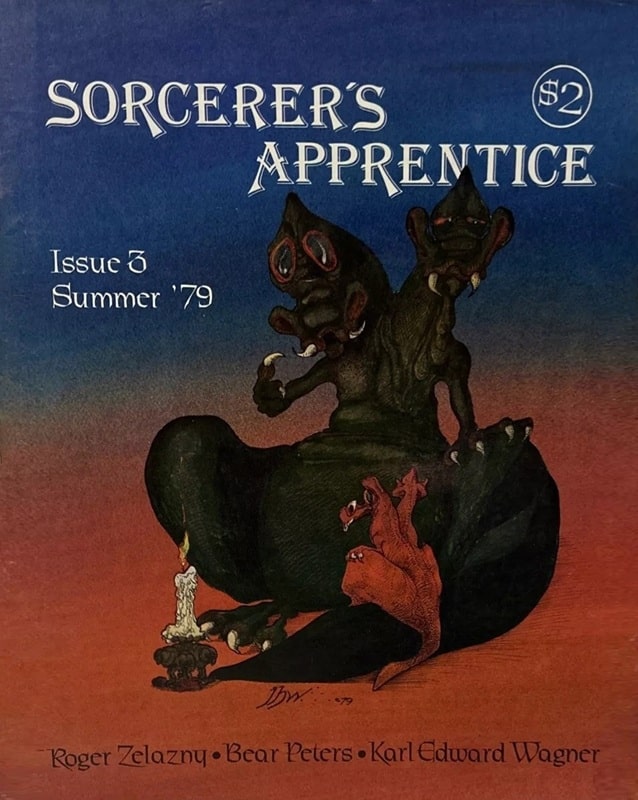 Sorcerer’s Apprentice, Summer 1979, edited by Ken St. Andre, containing “Garden of Blood.” Cover by Joan Hanke-Woods
10. “Garden of Blood” (1979)
Sorcerer’s Apprentice, Summer 1979, edited by Ken St. Andre, containing “Garden of Blood.” Cover by Joan Hanke-Woods
10. “Garden of Blood” (1979)
We again find Dilvish wandering through strange lands alone (except for his faithful Black). (According to the first paragraph, he’s working as a scout for a caravan, but we never see the caravan and it doesn’t affect the course of the story much, if at all.)
The lands are strange to us, but not to him. He’s been over this ground before, before he was trapped for 200 years in hell. He finds himself in the ruins of a town he once knew, named Trelgi. He and Black pass onward to a fair field full of bright flowers, where the town’s ancient stone altar still stands.
Through some combination of magic and narcotics from the flowers (flashback to the poppy scene in The Wizard of Oz), Black is paralyzed and Dilvish finds himself trapped in a dream or vision where he and Black (in human form) fight against the robbers who sacked Trelgi and slew its inhabitants.
A solid adventure-fantasy, well worth reading.
11. “Dilvish the Damned” (1982)Originally published in Dilvish, the Damned.
The last two Dilvish stories (apart from the novel) have something in common that distinguishes them from the others. We find Dilvish working for a living. He may be a somewhat sorcerous person who rides a demonic metal steed, but he apparently can’t pull gold coins out of Black’s ears, or other orifices. I like this, as supplying the grit that s&s needs (Joe McCullough’s great definition of sword-and-sorcery is “Fantasy with dirt.”) But it does put the end of this series on a different, more mundane level than its dreamlike, allusive beginnings.
After getting paid and buying supplies, he sets off for a castle called Timeless:
The blind poet and seer, Olgric, had told him that he would find there the thing that he sought.
But before Dilvish gets there, a guy on the road tries to rob him. The robber is pretty inept, and Dilvish in the end is inclined to let him go, but he tries to impale himself on Dilvish’s sword. It turns out that he’s been trying to get Dilvish to kill him. Dilvish is intrigued and, in spite of Black’s warnings, he stops to get the thief’s story.
The thief is named Fly and he is the walking definition of the phrase “mealy mouthed.” (He keeps saying things like “Well, yes and no.”) Dilvish eventually gets his story: he stole a magic belt from a god’s temple; now the adherents of the god are after him, as well as the adherents of a rival god who want the belt for their own purposes.
There’s some wiliness and chasing and fighting and a curse or two but, in the end, Dilvish returns the belt to the god from whom it was stolen, and he and his demonic steed get the hell out of there.
After the story proper, there’s a short coda. The next day, Dilvish is confronted by a young woman who begs for his help. Black warns him not to be taken in, and we’ve actually seen Dilvish tricked this way before (“A Knight for Merytha”).
But Dilvish can’t bring himself to deny a plea for help. ” ‘Damned if you do, damned if you don’t,’ he said, dismounting.” Which is at least kind of an amusing punchline to the series, if not laugh-out-loud funny.
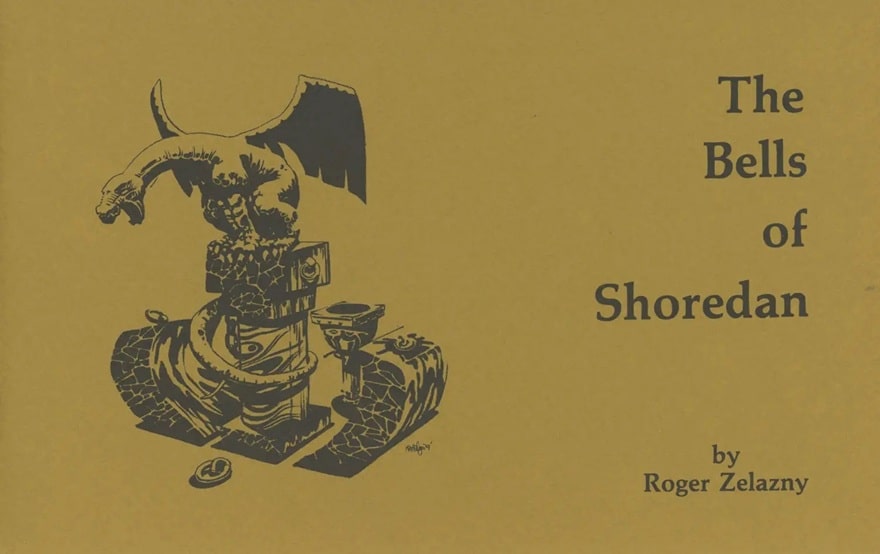 The Bells of Shoredan (Underwood Miller, May 1979). Cover by Matt Gouig
Overview
The Bells of Shoredan (Underwood Miller, May 1979). Cover by Matt Gouig
Overview
The parts of the Dilvish series are greater than the whole. Some stories, I would argue, are essential reading for the heroic fantasy enthusiast (e.g. “Passage to Dilfar”, “The Bells of Shoredan”, “Devil and the Dancer”). Most of the rest are well worth reading (e.g. “The Places of Aache”, or “Garden of Blood”). The weakest and longest story in this series (setting apart The Changing Land for another time) is “Tower of Ice”, and even it has some interesting stuff in it.
But it has nothing that connects it all together. It’s a set of fragments. Zelazny would have it that Dilvish is a man obsessed. He calls him “a humorless monomaniac.” (This from a letter to Carl Yoke, quoted in the afterword to the last Dilvish short story in the NESFA collection Nine Black Doves.) But Dilvish has at least two sets of concerns in the stories: defending Dilfar and other cities of “the East” from Lylish, the Colonel of the West, and also getting revenge on Jelerak, neither of which seem to me to be crazy. And most of the stories don’t involve either one of these goals, or mention them only in passing, undermining any picture of Dilvish as obsessive.
Zelazny knows his character better than anyone else does, obviously, but my point is that he doesn’t create the portrait of a monomaniac in the Dilvish stories that he actually wrote and published. There isn’t that much coherence in them. When Dilvish raises a ghost legion to fight for him in Shoredan, the actual fight he raises them for occurs offstage and is mentioned only in passing. Lylish and Jelerak are supposed to be these big menaces, but Lylish never appears onstage, and Jelerak only occasionally and somewhat unimpressively. Zelazny is careful to introduce us to a sorcerer named Strodd in “A City Divided” and make him indebted to Dilvish… but he’s only mentioned once in passing, later on, and he never appears in a Dilvish story again.
The good stuff in the stories is mostly the incidental stuff along the way. There is no overarching plotline that connects them, any more than there is for Leiber’s stories of Fafhrd and the Gray Mouser or REH’s Conan stories.
And that’s a virtue, not a vice. Zelazny’s great gift as a writer was for brilliant improvisation. These stories would be better if they were presented as a series of fragments from a heroic life, without any pretense of telling a continuous story.
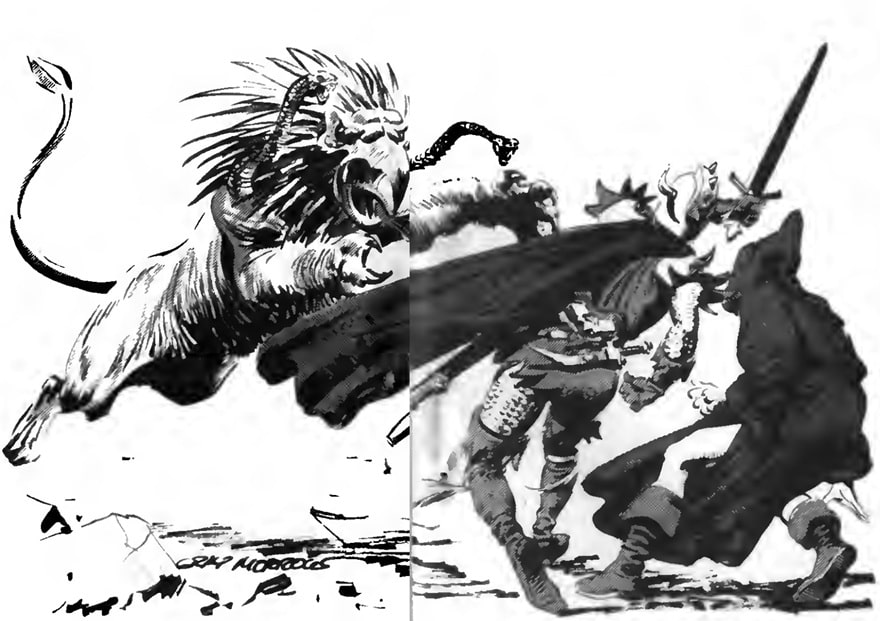 Interior art for “The Bells of Shoredan” by Gray Morrow. From Fantastic Stories, March 1966
Interior art for “The Bells of Shoredan” by Gray Morrow. From Fantastic Stories, March 1966
That was Howard’s idea for the Conan series:
“The average adventurer, telling tales of a wild life at random, seldom follows any ordered plan, but narrates episodes widely separated by space and years as they occur to him.” (From a letter REH wrote in 1936 to P.S. Miller, included in the Lancer/Ace Conan, p.17.)
I’m not saying every s&s writer has to imitate REH forever, but this approach would work better with the Dilvish stories than the pseudo-biography that Zelazny tries to force them into.
The reader who has read this far without dying of boredom deserves some kind of ringing peroration to send them rushing out into the street in search of trouble and fantastic adventure. Unfortunately I don’t have one.
I do have kind of a technical writing observation that, if nothing else, will help you to drift off to sleep in the friendly light from whatever device you’re reading this on.
In most of the Dilvish stories, we get almost nothing of Dilvish’s inner life. We have to deduce what he’s thinking and feeling from his words and actions — the same way we do with the people around us. This is unlike a lot of modern fiction, where we typically get the inner monologue of the viewpoint character. In lots of ways, Dilvish is not our viewpoint character; he is a character we are viewing.
That appeals to me because it’s more like ancient and medieval literature, and it gives him a degree of mystery. The later stories in the series where we get more of Dilvish’s feelings are part of that descent into mundanity, like the mentions of him working for a living. I don’t think that’s bad; it’s just interesting how Zelazny’s approach to the character changed over the nearly-two-decades that he wrote about him.
Now go ye forth into the mysterious vale of night and smite those who must be smitten, even as your heart doth compel ye. (Unless that seems inadvisable for ethical, legal, or practical reasons. Offer void where prohibited.)
Our previous coverage of Dilvish at Black Gate includes:
Dilvish, the Damned by Fletcher Vredenburgh (September 12, 2017)
This article originally appeared at James Enge’s excellent Engeblog on January 23, 2025.
There, Wolves: Part III
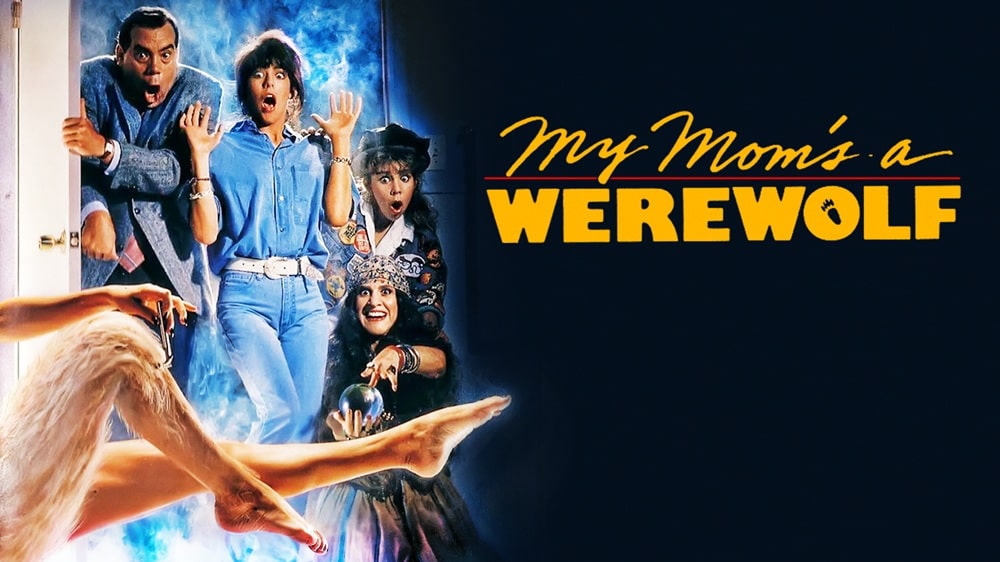 My Mom’s a Werewolf (Crown International Pictures, May 12, 1989)
My Mom’s a Werewolf (Crown International Pictures, May 12, 1989)
A 20 film marathon of werewolf movies I’ve never seen before.
As usual, the films must be free to stream.
I’ve got a bad feeling about this.
My Mom’s a Werewolf (1989) YouTubeMan or beast? Gradual, hairy transformation into rubbish suits.
Howlin’ good time? The 80s are arguably the greatest decade for horror and, perhaps, the much maligned sub-genre of horror comedy, but this one squeaks in at the end hoping to ride some Teen-Wolf coat tails, and it doesn’t quite succeed. The intention is there, everyone gives it their all to a cartoonish level, and John Saxon is awesome, but for me the jokes didn’t always land, and it felt horribly dated.
The film has a similar premise to the OG Fright Night (teen recruits monster nerd friend to combat monster and save family), but it was all a bit too cutesy for my tastes and, despite the promise of a great werewolf at the end, the actual makeups were a bit of a let down. Fun to see Ruth Buzzi again though, looking younger than she did in the 60s.
5/10
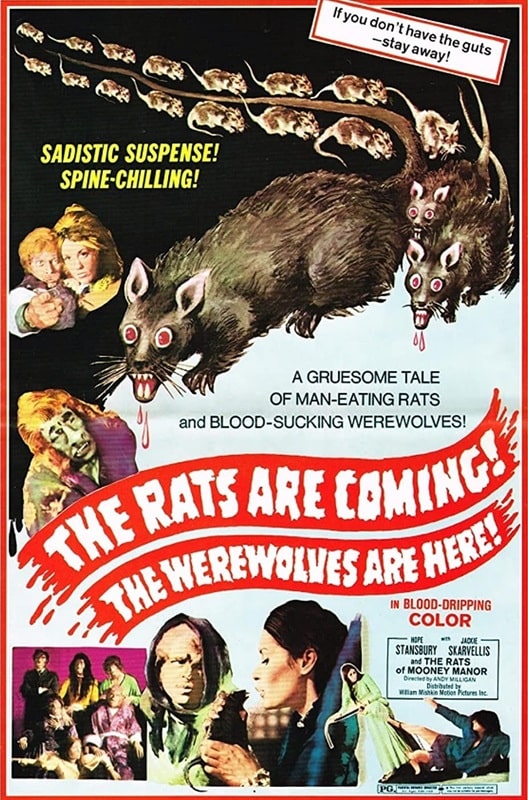
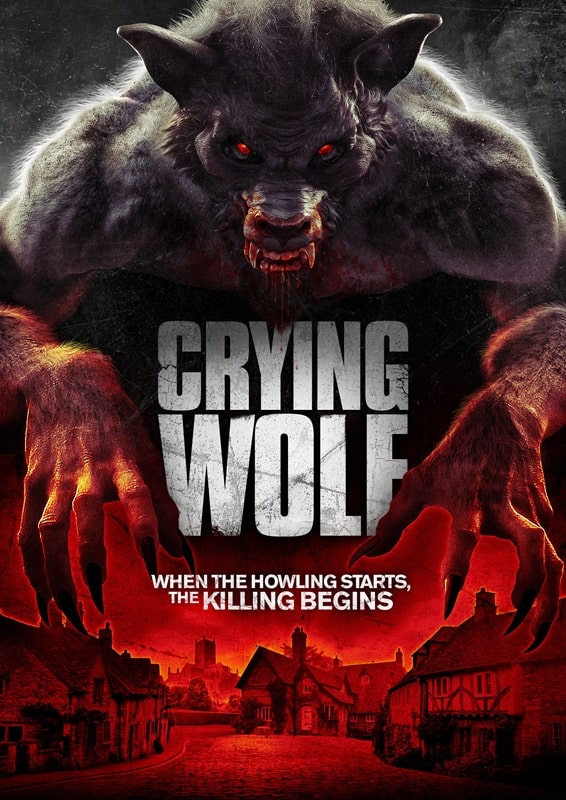
The Rats Are Coming! The Werewolves Are Here! (William Mishkin Motion
Pictures, May 1972) and Crying Wolf (Uncork’d Entertainment, 2015)
Man or beast? Brownface + hairy eyebrow makeups.
Howlin’ good time? This is a film from the notably sleazy mind of Andy Milligan, who once enjoyed stuffing his grindhouse efforts full of sadism and salaciousness. This film, however, is his tamest by far, with nary a whiff of sex or violence (although he does include a ghastly bit of sadistic treatment towards a live mouse, which is unpleasant).
The best thing about this movie is the title, but even the rats are merely a ten-minute distraction, presumably an after-thought, during this dull exercise in miserable family members sitting around moaning about being werewolves. The actual beasts appear at the end, when everyone seemingly turns into one and set upon each other for no good reason. Pretty awful.
3/10
Crying Wolf (2015) TubiMan or beast? CG/gorilla suit hybrids.
Howlin’ good time? Full transparency, I put this one on because Caroline Munro headlines it, but when she disappears after 5 mins, I should have done the same.
This is such an odd film, but not in the charmingly odd sense. Allegedly a comedy, it’s as cutting edge as a Benny Hill sketch but with none of the subtlety, complete with head turn ‘whooshes’ and slide whistles. The thin-as-tissue plot is padded out with flashbacks, and flashbacks within flashbacks, none of which bring anything to the story.
There a couple of fun gore effects, but it’s hampered by some lousy CG and awful werewolf costumes, and the whole affair has been re-dubbed using some lacklustre ADR and one awful American accent. The whole hot mess is narrated by a detective in a pub, and it comes off as a prolonged episode of Garth Merenghi’s Dark Place, but with worse production quality. Terrible.
3/10
 Strippers vs Werewolves (Well Go, April 27, 2012)
Strippers vs Werewolves (2012) Prime
Strippers vs Werewolves (Well Go, April 27, 2012)
Strippers vs Werewolves (2012) Prime
Man or beast? Hairy, humanoid, beast-faced bad boys.
Howlin’ good time? I went into this one expecting the usual crap (having seen Zombies vs Strippers in a moment of weakness a couple of years ago), but was a little surprised by how much I liked it. Don’t get me wrong, it’s still rubbish, released the same year as the superior (but still rubbish) Cockneys vs Zombies, but clearly everyone was having a splendid time, and there were a couple of gags that managed to get a laugh out of me.
It’s a UK production through and through, taking place in Basildon (and finishing in Dagenham!) and full of your stereotypical Essex-types, but I wasn’t ready for the cameos from folks in need of new patios, including Steven Berkoff, Robert England, Martin Kemp, Lysette Anthony and Sarah Douglas (who was the best part of the film). It’s rude, slightly violent and full of knockers, which is to be expected, daft as a brush, but still more fun than many of the films I’ve watched during this project and I didn’t hate the werewolf designs.
Recommended for people who like Alan ‘Brick Top’ Ford and bosoms.
6/10
 The Beast of Bray Road (The Asylum, September 1, 2005)
The Beast of Bray Road (2005) YouTube
The Beast of Bray Road (The Asylum, September 1, 2005)
The Beast of Bray Road (2005) YouTube
Man or beast? Hairy, humanoid, naughty thing.
Howlin’ good time? It’s an Asylum flick, but don’t let that put you off. Granted, it’s the usual fare; two-dimensional charac… sorry… cannon fodder going through the motions, hitting their marks and spouting uninspiring dialogue. However, a great portion of the budget went on practical effects, including more loops of guts than a back-alley sausage shop. The gore was over the top and fun, the beast however was a bit of a laugh. In fact, this poster doesn’t do the film any favours, and I can’t believe they didn’t hire an artist to paint a kick-ass werewolf for it.
As it is, this one just reminded me of Zeb from Star Wars: Rebels (if you know, you know), and I couldn’t take it seriously. Ultimately though, it’s a better-than-most Asylum effort, and I was entertained, so… congrats?
6/10
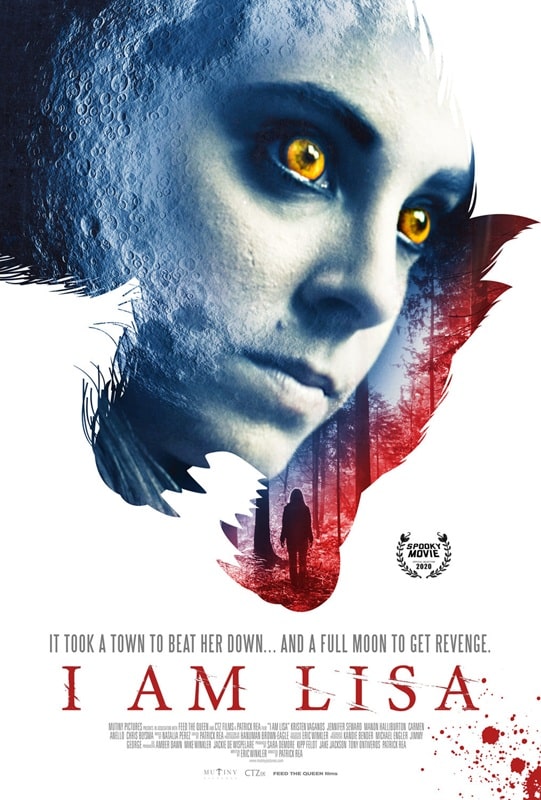
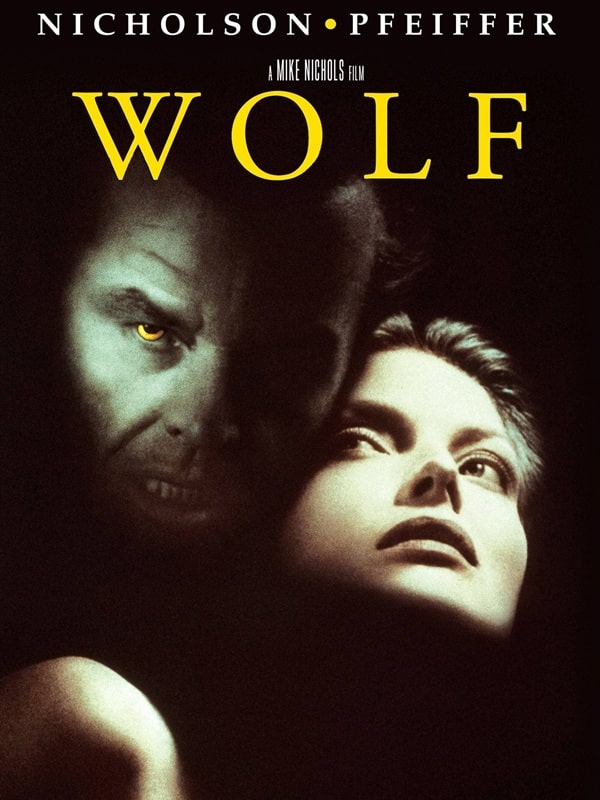
I Am Lisa (Mutiny Pictures, July 2, 2020)
and Wolf (Columbia Pictures, June 17, 1994)
Man or beast? Subtle lady beast.
Howlin’ good time? I’m glad I saved this one until close to the end of my werewolf watch-a-thon, because I was quite impressed with this indie film, shot on a low budget but spending the money wisely. It’s a tale of abuse and revenge, with strong female leads, well-written queer undertones and some lovely cinematography. I thought the director Patrick Rea handled the story really well and the score had a nice throwback vibe to it. In fact, the whole shebang put me in mind of I Spit on your Grave, with more teeth.
My only gripes lay with the sound design and the fight choreography, neither of which packed enough punch and let down the climax, but overall it’s a solid watch and I’m going to go ahead and recommend it.
8/10
Wolf (1994) PrimeMan or beast? Nicholson and Spader being hairy.
Howlin’ good time? Saved a ‘proper’ film for last, because it would be nice to go out with a bit of quality, and I hadn’t seen this before. However, I was wholly unprepared for how ludicrous and dull it actually is.
At the risk of invoking the wrath of those of you who fondly* remember this as being great, let me just express my surprise over so much before and behind the camera talent coming up with this wereturkey. It features amazing actors, Mike (The Graduate) Nichols directing, FX from Rick (American Werewolf in London) Baker and a score by Ennio (Ennio freakin’ Morricone) Morricone, and yet it is still as dumb as a bag of wolf nards. The lycanthropic plot is reduced to a subplot as the main focus is about a guy getting his job back, and its direction is a bit aimless (unlike Jack’s pee).
Is it a satire? Not funny enough. Is it horror? It’s got less teeth than grandma shark. Gah — maybe at this point, now finished with the werewolf movies, I’m jaded, cynical and ready to move on — but I really was expecting better.
6/10
*incorrectly
Previous Murkey Movie surveys from Neil Baker include:
There, Wolves: Part I
There, Wolves: Part II
What a Croc
Prehistrionics
Jumping the Shark
Alien Overlords
Biggus Footus
I Like Big Bugs and I Cannot Lie
The Weird, Weird West
Warrior Women Watch-a-thon
Neil Baker’s last article for us was There, Wolves: Part II. Neil spends his days watching dodgy movies, most of them terrible, in the hope that you might be inspired to watch them too. He is often asked why he doesn’t watch ‘proper’ films, and he honestly doesn’t have a good answer. He is an author, illustrator, outdoor educator and owner of April Moon Books (AprilMoonBooks.com).
Two Howards Fathering Sword and Sorcery – Swords Together!
Left: The memorial booklet for Howard Andrew Jones given to attendees at the February
22nd Celebration of Life. Right: Sean CW Korsgaard gives his eulogy for Howard.
Foreground: Christopher Rowe, Cinda Hocking, John C. Hocking. Photo by John O’Neill
A Celebration of Life for Howard Andrew Jones (HAJ) was just held in Evansville, IN, Feb 22, 2025. The event gathered friends, family, and over a dozen author colleagues. Numerous online memorials and tributes had been posted leading up to this. Links to many are listed at the bottom of the post; reading these reveals wonderful insights. This article aims to honor HAJ slightly differently by echoing excerpts from his blogs intermixed with remembrances and emphasizing the importance of community.
It struck me that when discussing HAJ, there are always references to REH (Robert E. Howard, indisputable “Father of Sword & Sorcery Genre”). Whereas REH kicked off the genre with his heroes in the 1920-30s (Conan, Bran Mak Morn, Kull, etc.), a hundred years later, the other Howard, our dear HAJ, championed S&S, wrote S&S, and built a community of S&S readers & writers.
You may already know that HAJ edited the online Flashing Swords ezine (links to internet archives below), grew Black Gate in print and online, edited the Harold Lamb series, led the Tales from the Magician’s Skull Magazine, and wrote copious amounts of pulp and fantasy fiction (Asim & Dabir, Ringsworn, Pathfinder, Hanuvar). He did all that while immersing himself with authors and readers.
A lifetime of activity is impossible to capture, but several montages of his writer-focused activities were captured and shared at the celebration (PDF link); and Sean CW Korsgaard created a spectacular video playlist of HAJ interviews, panels, and more.
We’ve been conditioned to believe that there aren’t any real heroes and that everyone’s in it for themselves; we’ve been trained to be skeptical and ironic and detached and sarcastic and hip. Yet even as we sneer and laugh with our friends, we know it’s a lie. — HAJ 2008Herein, you’ll learn his thoughts behind the “New Edge” S&S term he coined, how he inspired the Goodreads S&S group, how he conjured up the Day of Might, and more! HAJ was a mentor and coach to many dozens and a father figure to some (as Hanuvar champion and Bean editor Sean CW Korsgaard attested in his remembrance, image above).
I suspect HAJ would balk at being called “The only father of all S&S communities.” Heck, being called a simple role model made him uncomfortable (sorry, Howard). But his community building and influence are undeniable. They deserve to be called out and remembered. Funny enough, Howard called “Harold Lamb the grandfather of S&S” (evidence herein). With REH being the father, maybe that makes HAJ the grandson?!
Whatever. Read on, mortal dogs, and imbibe the contagious sorcery of a hero recently passed. Hear now his closing line for his editorials, which resonates with comradery:
Swords Together!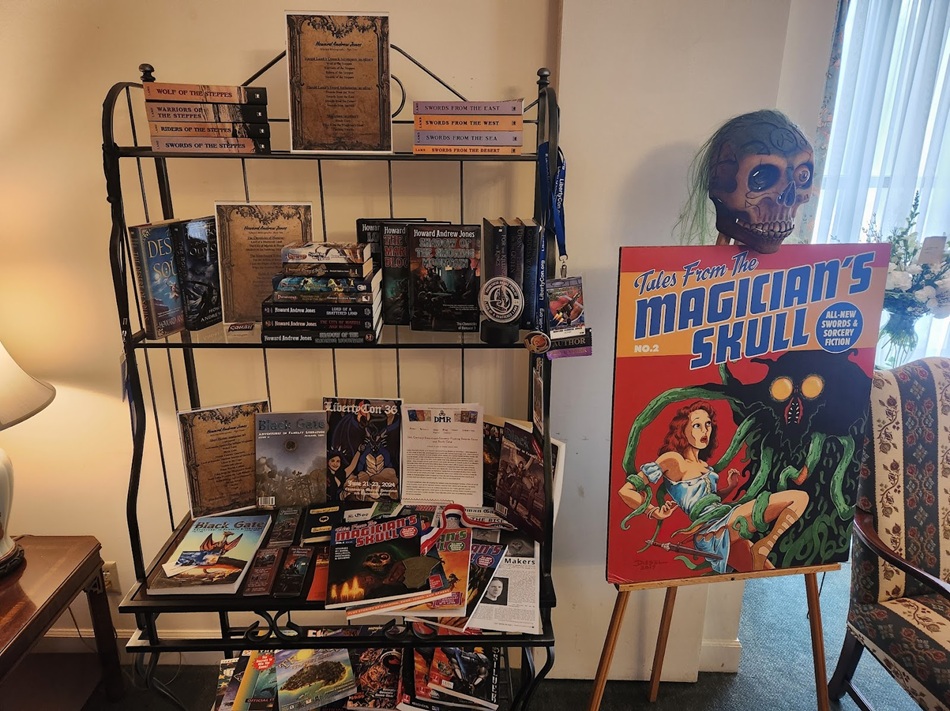 The Writing Display of Howard Andrew Jones at his Celebration of Life, February 22, 2025
Goodreads Sword & Sorcery Group
The Writing Display of Howard Andrew Jones at his Celebration of Life, February 22, 2025
Goodreads Sword & Sorcery Group
The Goodreads S&S Group began in 2012, initiated by Periklis Begzos. We struck a friendship, and I became a lead moderator for 10 years before getting pulled into organizing the Gen Con Writers Symposium over the Covid era (not ironically, a role that followed after HAJ encouraged me to volunteer for the convention). Anyway, S&S GR group still exists, but activity has waned. Regardless, I share a moving anecdote from Periklis that captures how Howard helped others and they helped him:
“Regarding Howard’s touch, I remember discovering his book “The Desert of Souls” in early 2012. I loved it. I was following Black Gate magazine and what struck me the most was the love for the culture (of both S&S and adventure/pulp fiction) that Howard spread. At the same time he announced a competition for naming the Dabir & Asim series. I submitted the name “The Chronicles of Sword and Sand” and was awestruck when it won. Along came a gift pack of all of Howard’s published works, with a printed map and a lovely letter from him. It really pulled me from a dark place I was going around that time and allowed me to start the public Goodreads group about sword and sorcery. So I would think that Howard’s generosity of character and his altruistic involvement with all things Sword & Sorcery are keeping inspired to this day.” Periklis Begzos
Harold Lamb is the ‘Grandfather of S&S’?Perusing HAJ’s comments in the Goodreads Sword and Sorcery Group, I came across this gem that showcases his love for Lamb and S&S.
I stumbled across one of his Cossack collections when I was in high school and was immediately reminded of one of the Leiber collections of Fafhrd and Mouser stories. Not because Khlit the Cossack is a thief and bravo, because he isn’t, but because both Lamb and Leiber wrote serial stories with continuing characters — almost like a TV series — stuffed full of action and adventure and sense of wonder.
I’ve argued at length, in many places, that Lamb is the unsung grandfather of sword-and-sorcery, because he’s got nearly EVERYTHING except the imaginary world and real sorcery. He occasionally (very occasionally) suggests the fantastic. And he is one of the very first to write adventure fiction with a mostly modern feel. He’s still compulsively readable today. Combine that with his laconic style and pacing and sense of adventure — not to mention surprise — and you have something phenomenal.
I was astonished when I discovered how many of his stories that had not been collected were excellent. His work isn’t like, say an obscure rock band that’s only good when you listen to their greatest hits. Even many of his deep album tracks are strong. I dreamed that one day I could find them all and read them. Slowly I did. And because the only job I could find in the economic downturn of the ’90s was as a third shift proofreader, I ended up becoming an editor, which made it possible for me to cold call Bison Books and pitch the collections. I knew how to talk “book” in the language of “editor” and I’d amassed a sizable collection of obscure Lamb texts by that point. Because I loved his stories I’d accidentally become an expert, and because of my accidental training I was perfectly positioned to make it happen. Serendipity. — HAJ 2016, Goodreads Threads
Magazine Editing and Honing A New EdgeIn 2005-2007, Howard edited the first six 6 e-zones of Flashing Swords (this link goes to the archived internet that offers the PDFs! Go get them!). How influential can an e-zine be? Read the introduction of Return of the Sword where esteemed heroic fiction champion Jason M Waltz lists Flashing Swords as one of his inspirations (and provided Jason an opportunity to become an assistant editor; Rogue Blades Entertainment and Foundation evolved from Jason’s own passion to build an S&S community).
In 2006, Howard moved along to take a position as Associate Editor at Black Gate. As John O’Neill mentions in his tribute and oral remembrance, Howard quickly rose from exuberant writer and associate editor to Black Gate’s first Managing Editor. HAJ grew the website driven by a passion to get fresh content posted daily and enlisted over thirty staff. In 2016 Black Gate Magazine was awarded a World Fantasy Award, a recognition that John O’Neill has said reflects Howard’s devotion (keep in mind, John is also a superb, understated mentor/hero who deflects compliments).
In 2008, as Managing Editor at Black Gate, HAJ posted his “manifesto” regarding a resurgence brewing in Sword & Sorcery fiction: Honing A New Edge Part 1 & Part 2 (these originally appeared in the introductory editorials Issue 3 & 4 as “The New Edge”). Excerpts are below. This sentiment resonated with many authors and editors, and a decade after its posting, directly inspired the creation of New Edge Sword & Sorcery Magazine (though editor Oliver Brackenbury has a slightly different definition than that of HAJ, read Oliver’s interview on BG for more). Incidentally, New Edge S&S 2025 has another crowdfunding running now, check out the link for the new Jirel of Joiry.
Traditional S&S Heroes (from Honing A New Edge Part 1)The protagonists in sword-and-sorcery fiction are most often thieves, mercenaries, or barbarians struggling not for worlds or kingdoms, but for their own gain or mere survival. They are rebels against authority, skeptical of civilization and its rulers and adherents. While the strengths and skills of sword-and-sorcery heroes are romanticized, their exploits take place on a very different stage from one where lovely princesses, dashing nobles, and prophesied saviors are cast as the leads. Sword-and-sorcery heroes face more immediate problems than those of questing kings. They are cousins of the lone gunslingers of American westerns and the wandering samurai of Japanese folklore, traveling through the wilderness to right wrongs or simply to earn food, shelter, and coin. Unknown or hazardous lands are an essential ingredient of the genre, and if its protagonists should chance upon inhabited lands, they are often strangers to either the culture or civilization itself. — HAJ 2008
Being Heroic (from Honing A New Edge Part 2 )We’ve been conditioned to believe that there aren’t any real heroes and that everyone’s in it for themselves; we’ve been trained to be skeptical and ironic and detached and sarcastic and hip. Yet even as we sneer and laugh with our friends, we know it’s a lie. Heroes really are out there. They’ve lived and breathed and sacrificed right here on this very Earth, and some of them are still at it. Students of history know them. Sometimes we can even find them covered by our local news stations. Stories of heroes, not of dejected mopers, have inspired us since the dawn of humanity, and we should not be embarrassed if they continue to fire our imagination. — HAJ 2008
HAJ: So what are those New Edge guiding principles? Briefly:-
A hardboiled tone — as in terse and unsentimental
-
Exotic settings and/or settings that live — as in NOT faux Tolkien (if the settings echo Tolkien or other writers then they must be twisted or seen from some new perspective)
-
Evoking a sense of wonder — magic is never banal or easy, the fantastic should not be mundane
-
High energy storytelling — as in fast and without padding
From a 2012 editorial post, we learn HAJ’s gratitude for being part of a community.
We wouldn’t be working so hard to get published in this genre if we didn’t love the genre, and I can trace a lot of my success back to actually becoming involved in it (I already posted about the exact steps to my book deal a year or two ago). Corresponding with other writers, writing reviews for genre sites, reading slush, writing editorials, editing for ‘zines and magazines. Eventually, a whole lot of people had heard of me, so that I wasn’t a complete unknown when it got to be time to try to promote my books.
I didn’t know that was going to happen — I just couldn’t stay away from fantasy fiction, particularly heroic fiction. But it DID happen, and even though every author’s journey is a little different, surely there’s some lessons from this story some of you out there could find useful. — HAJ 2012
When you begin your writing career, you’re joining a community — HAJWriting is a lonely business and I wanted to meet some kindred spirits. What I didn’t realize was that I was also forming a network of friends and allies, AKA “networking.” I dislike that word, though, because it suggests that one is cold-bloodedly setting forth to make friends to climb the ladder, probably before callously putting them aside for new and better and more powerful contacts as one advances. I realize now that I was becoming part of a writing community.
Many writers grow up thinking of the writing profession as a noble romantic one, where we sit alone in a tower room with our raven on a bust of Poe and a cat in our lap. Well, okay, I never pictured that, exactly, but I expected that I would write stuff and I just had to send it out until some editor finally printed me, probably sooner rather than later. As I became a regular at various magazines, I realized just how rewarding it was to be exchanging letters with editors and fellow authors and even readers from the various magazines. After I jumped the editorial fence, I started to comprehend that part of what you’re doing with a magazine is helping to build a community of writers and readers. — HAJ 2012
The Evil Skull versus the Heroic HanuvarIn 2017 (Kickstarter Link), Howard teamed with Joseph Goodman (Goodman Games) to create Tales from the Magizian’s Skull (as Joseph describes in his tribute).
Howard shared my appreciation of how fiction can inspire great gaming. We were both fans of several of the same things: D&D and DCC RPG, Appendix N, and Weird Tales, the publication that first published many of the Appendix N authors. We decided to start a fiction magazine together. From there we created Tales From The Magician’s Skull. The issues of that magazine that I published are among the Goodman Games publications of which I am most proud. Tales From The Magician’s Skull stands out from every other periodical in its category for its titular hero (or perhaps villain?), who would not exist were it not for the weird melding of Howard’s and my brains. Somehow our mutual creativity synthesized this bizarre character who seemed completely real to both of us. The Magician’s Skull was so integral to our mutual imaginations that we tag-teamed to write the editorials, articles, and memorandums attributed to the Skull. — JG 2025
The magazine moved ownership from Goodman Games to Outland in 2024 (here is their KS page for issues 13+ and their current store). The magazine’s run was a creative fusion of Howard and Joseph, but Howard was the frontman under the mask and editor. I shared my thoughts within the Science Fiction Writers of America (SFWA) obituary, and echo them here since they capture how Howard and the Skull persona complemented each other:
Howard’s Skull’s persona resonated since it was the antithesis of him. Whereas the villainous champion of the titular magazine spitefully called his readers ‘mortal dogs’ and regularly ‘immolated’ his interns, the man behind the mask was known to be overly gracious, coaching aspiring, mature, and professional writers in myriad conventions, editing, blogs… for decades! He mentored tirelessly even as his body failed. A week before he was diagnosed with terminal cancer, he improvised a personalized ‘Hey Jude’ song at Gen Con Writers Symposium to inspire me on the piano beside the green room, and the lyrics motivate/haunt me continuously. How did he exude so much vitality?
His Hanuvar character embodies Howard more accurately, a veteran striving to save his shattered family and reunite his community (refreshing compared to the flood of immoral, vengeful protagonists available). Howard could strike a friendship up in minutes, and combined with his passion for storytelling, [this] makes him one to be remembered as much as for his heroes as for his own heroism. Howard was the quintessential role model. I imagine him inspiring us now in our time of mourning: ‘Behold, mortal readers, do your morning stretches, carry on, and realize the stories inside you. Swords together!’ — SEL
A Confluence of S&S Community Builders In 2022, I reported on the S&S Rogues in the House podcast for Black Gate. As the Rogues moved beyond podcasts to build the Sword & Sorcery community, they started publishing anthologies including the just-released A Book of Blades. With my Event Coordinator role for the Gen Con Writers Symposium, I did my best to gather the Rogues and other contributors to A Book of Blades on several panels. Collected were the Rogues in the House podcasters, HAJ of the Skull magazine, Jason Ray Carney of Whetstone Amateur Sword & Sorcery Magazine, and myself. We gathered in Marriott Ballroom #4 to record this special session. At 6:45 min:sec, the Skull crashes the party and awards his only named intern an award. Click here to listen: The Rogues on Hallowed Ground (link to Aug 8-2022 podcast episode)“Rogues, old and new, meet at the mecca called Gen Con. In this very special episode, Deane Geiken and Matt John are joined by Howard Andrew Jones, Seth Lindberg, Steve Diamond, Sean CW Korsgaard, Jason Ray Carney, and *shudders* The Magician’s Skull himself. Topics include sword and sorcery (of course) as well as our “top picks” from Gen Con.”
 2023 Gen Con, the Skull with Joseph Goodman, Matt John, Seth Lindberg
Day of Might
2023 Gen Con, the Skull with Joseph Goodman, Matt John, Seth Lindberg
Day of Might
The Skull is responsible for creating the first Sword & Sorcery holiday to be celebrated every October 23rd. A cartoon excerpt from Tales from the Magician’s Skull explains the inception (below) and Skull TV captures essential broadcasting of the initial days.
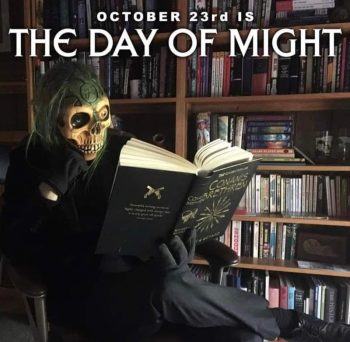

I have been grateful to HAJ for many years, from being a fan of his S&S blogs and appearances at World Con 2010, to meeting him at Gen Con and having him coach me into volunteering at the Writers Symposium ~2017 (which grew into me chairing it in 2023), for bridging the connection to John O’Neill to edit for Black Gate online magazine (~2019 onward), and for being able to intern for his magazine Tales From the Magician’s Skull as acquisition editor and for being a social media intern for the Skull (~2022).
The outpouring of memorials speaks to HAJ’s character and influence. Each instance, even the shorter obituaries, amplifies his life and reveals nuances. Below I list several so I, and anyone visiting here, can learn more about the man we miss. There are many more tributes than those listed below. More may be added after the original posting date as I track those down.
Did you know Howard… was once a TV cameraman? Created an official Walk Through Guide for a Castlevania game? Coined New Edge Sword & Sorcery?- Locus: abbreviated verionHoward Andrew Jones (1968-2025); longer version by CSE Cooney, John O’Neill, John Hocking, Matthew John, Scott Oden) available in Issue 769 also inside the celebration display p16.
- SFWA: In Memoriam: Howard Andrew Jones [John O’Neill, SE Lindberg, Martha Wells, Sean CW Korsgaard]
- Joseph Goodman (Skull publisher) A Tribute to Howard Andrew Jones
- John ONeill (Black Gate): Howard Andrew Jones, July 19, 1968 – January 16, 2025
- Jason Ray Carney: Howard Andrew Jones, a Mentee’s Perspective
- Bob Byrne An Important Life – Howard Andrew Jones (1968 – 2025)
- Brian Murphy: Rest in peace, Howard Andrew Jones
- Sean CW Korsgaard This is one of the hardest things I’ve had to write in my career. Howard Andrew Jones is dead
- Mark Rigney (Celebration of Life farewell)
- Greg Mele: “Swords Together, buddy” Private Facebook Post
- Matt John — Devastated to learn my friend, Howard Andrew Jones, has passed.
- Deuce Richardson (DMR) Howard Andrew Jones Has Fought His Last Battle
- Vanessa Armstrong Author Howard Andrew Jones Passes Away at Age 56
- Michael Grossberg Acclaimed fantasy writer and Prometheus finalist Howard Andrew Jones, R.I.P.
- Paizo (Pathfinder) Paizo Remembers Howard Andrew Jones
- Morgan Holmes Remembering Howard A. Jones
- Keith West RIP, Howard Andrew Jones
 Howard Andrew Jones’ Office in Evansville
Heroes really are out there. They’ve lived and breathed and sacrificed right here on this very Earth, and some of them are still at it. Students of history know them. Sometimes we can even find them covered by our local news stations. Stories of heroes, not of dejected mopers, have inspired us since the dawn of humanity, and we should not be embarrassed if they continue to fire our imagination. — HAJ 2008
Howard Andrew Jones’ Office in Evansville
Heroes really are out there. They’ve lived and breathed and sacrificed right here on this very Earth, and some of them are still at it. Students of history know them. Sometimes we can even find them covered by our local news stations. Stories of heroes, not of dejected mopers, have inspired us since the dawn of humanity, and we should not be embarrassed if they continue to fire our imagination. — HAJ 2008
S.E. Lindberg is a Managing Editor at Black Gate, regularly reviewing books and interviewing authors on the topic of “Beauty & Art in Weird-Fantasy Fiction.” He has taken lead roles organizing the Gen Con Writers’ Symposium (chairing it in 2023), is the lead moderator of the Goodreads Sword & Sorcery Group and was an intern for Tales from the Magician’s Skull magazine. As for crafting stories, he has contributed eight entries across Perseid Press’s Heroes in Hell and Heroika series, and has an entry in Weirdbook Annual #3: Zombies. He independently publishes novels under the banner Dyscrasia Fiction; short stories of Dyscrasia Fiction have appeared in Whetstone, Swords & Sorcery online magazine, Rogues In the House Podcast’s A Book of Blades Vol I and Vol II, DMR’s Terra Incognita, and the 9th issue of Tales From the Magician’s Skull.
Goth Chick News: Corpses, Monsters and a Giraffe Onesy – Hitting the Road to TransWorld 2025
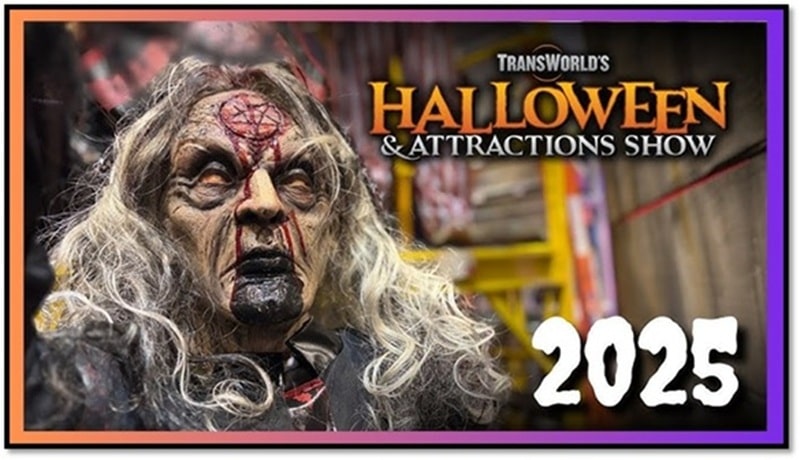 TransWorld’s Halloween & Attractions Show 2025
TransWorld’s Halloween & Attractions Show 2025
Around this time every year, Black Gate photog Chris Z and I pack up the car for the 10-hour-round-trip from Chicago to St. Louis to attend the TransWorld Haunted Attractions Show. This event not only kicks off the spooky season for the new year but never fails to produce at least one memorable adventure. From Fireball shots to epic snowstorms, to celebrity encounters, I can always count on our annual road trip to produce stories that will easily carry me through a year’s worth of cocktail-party small talk.
This year was no exception.
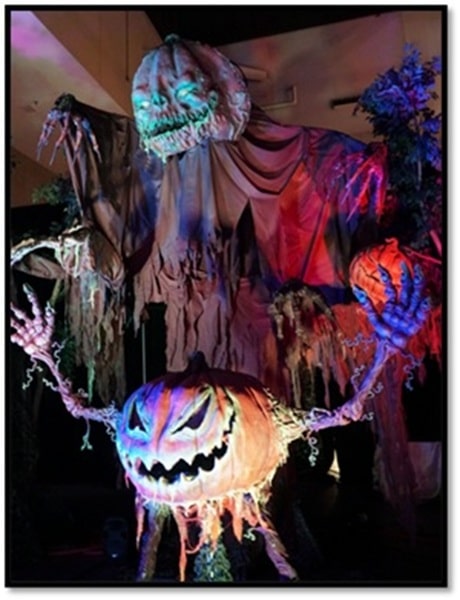
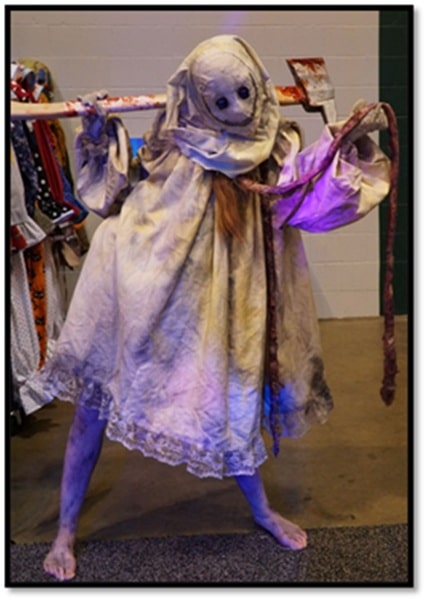
Seen at the TransWorld Halloween & Attractions Show 2025. Photos by Chris Z
For a start, our odyssey begins with me picking up Chris Z at 5am to ensure we are in St. Louis when the show doors open at 10. This has been the standard operating procedure for the eighteen years we have been covering this show, except for the couple of years TransWorld was held here in Chicago. Every year, Chris Z complains about the early pickup time, threatening to show up in his pajamas and sleep the entire five hours; and every year I tell him to nut-up and promise to stock the car with Mountain Dew.
So, last weekend at 5am I roll up into his driveway, noticing there is some kind of cord laying in front of his garage door, and remind myself to tell him when he comes to the car. At that moment, the darkness of the suburban neighborhood is shattered by a disco light display worthy of Saturday Night Fever. My stunned brain seized up, my mouth dropped open, and before I could figure out what the heck was happening, the garage door lifted to reveal Chris Z in a giraffe onesy.
As I have no further words to describe this, so here…


Chris Z in a onesy
Yes, apparently Amazon really does have everything.
Chris Z loads his camera gear in the back seat, gets in, and curls up – all in silence. An hour later when we stop to recaffeinate, he strolls into the Starbucks in said onesy and blithely orders like this is something he does every day. To the credit of the baristas, they just looked at each other and kept right on working. Back at the car, Chris Z shed the onesy saying only that it was making him too hot.
…sigh.
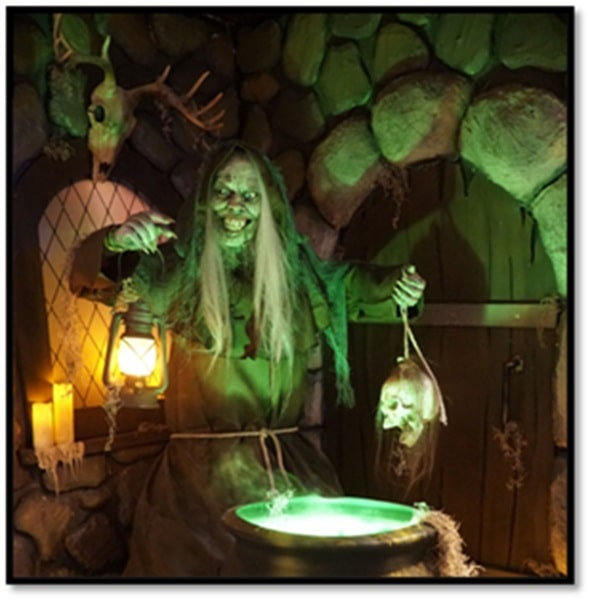

Photos by Chris Z
Now, about the TransWorld show and why thousands of Halloween tradespeople fly from all over North America to get their spooky on in February.
TransWorld is an “industry only” event not open to the public. It brings together professional haunt operators and the suppliers of everything from costumes and makeup, to $20K special effects.
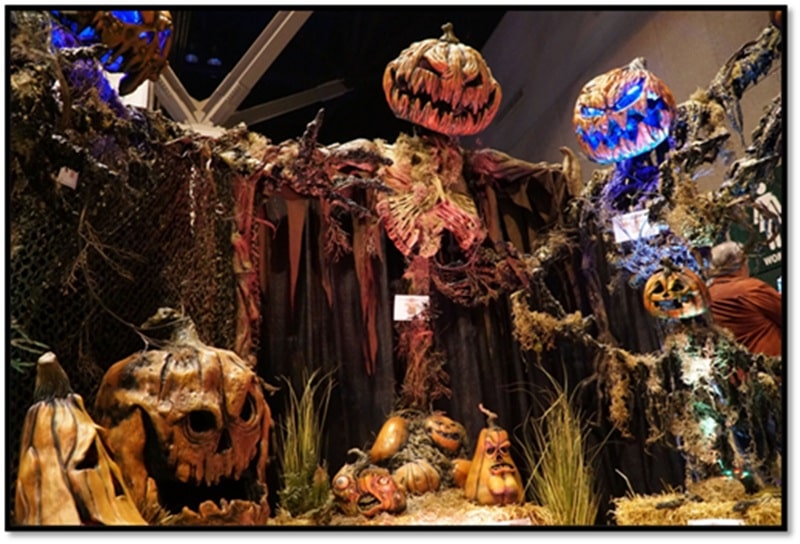 Scenes from TransWorld’s Halloween & Attractions Show 2025
Scenes from TransWorld’s Halloween & Attractions Show 2025
Ever wonder where amusement parks like Cedar Point and Great America, or big-name haunted attractions get their gear? TransWorld is the place, and with the haunt industry estimated at $30 billion annually, the vendors who have booths at TransWorld are the absolute real deal. Also, since creating and shipping all these scares takes time, the flurry of activity happens in February to ensure everything is in place by fall.
 Frightprops Pneumatics
Frightprops Pneumatics
Walking into TransWorld, held at the Americas Center is stepping into 500,000 square feet of creativity and horror. Imagine rows upon rows of booths showcasing hyper-realistic props, cutting-edge animatronics, custom soundscapes, and theatrical-grade special effects. One of the highlights of each year is getting an early look at the new technology that keeps the haunted attraction industry fresh and terrifying. Innovations like AI-driven scares, augmented reality overlays, and hyper-detailed silicone masks demonstrate the evolution of horror craftsmanship.
TransWorld is more than just a trade show; it’s a masterclass in the haunt industry. The event features an array of seminars, workshops, and panels led by industry veterans. Topics range from the art of creating compelling narratives for haunted houses to practical advice on marketing, ticketing, and safety protocols.
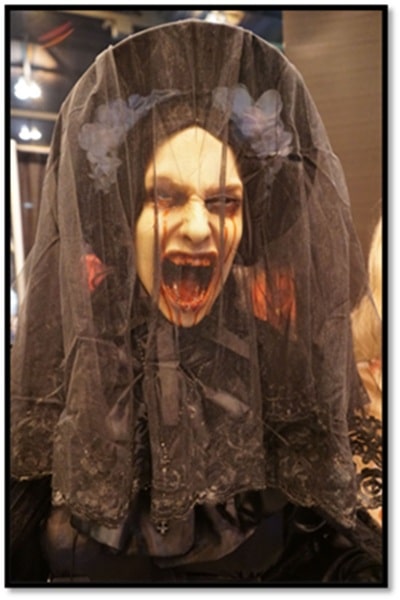
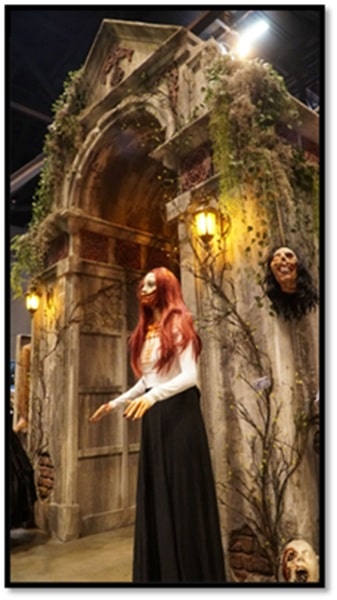
Seen at TransWorld. Photos by Chris Z
For haunters who want to experience the thrills firsthand, the event hosts live demonstrations and walkthrough attractions. These mini-haunts showcase the latest in set design, scare techniques, and interactive storytelling. Walking through these exhibits is like getting a sneak peek at the nightmares that will soon populate attractions nationwide.
Perhaps the most compelling aspect of TransWorld is the community it fosters. Chris Z and I consider it our annual “family reunion” where we connect with artists we’ve covered for nearly two decades and get the scoop on their newest ventures.
We couldn’t kick off spooky season without checking in with my long-time goth boy-band crushes, Ed and Gavin of Midnight Syndicate. Best known for their dark, atmospheric soundtracks they have become staples in the haunted attraction industry.
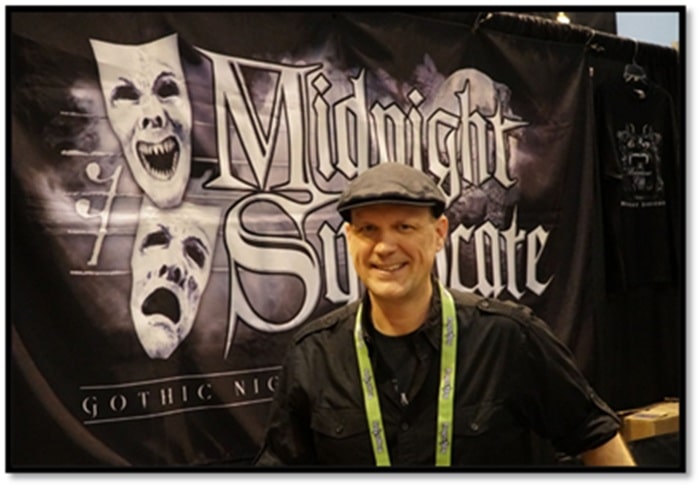 Goth Boy-Band Crush: Midnight Syndicate
Goth Boy-Band Crush: Midnight Syndicate
Since their formation in 1997, Midnight Syndicate has created the soundtrack for haunt season, providing music for Universal Studios Halloween Horror Nights and hosting their own stage show at Cedar Point’s Halloweekends.. We absolutely love Ed and Gavin’s music and were excited to learn they have a new album coming out later this year. We are always honored to get an early listen, so stand by for more.
 Demski Creations
Demski Creations
We also checked in with Brian Demski of Demski Creations. Brian is a seasoned artist with over two decades of specializing in creature special effects, custom prop fabrication, and scenic design. He has contributed to feature films, television, music videos, and haunted attractions, and his work is characterized by a macabre aesthetic, often incorporating steampunk elements. Having first interviewed Brian for Black Gate back in 2011, when I acquired my first Demski original, it has been incredible seeing the evolution of his talent first hand.
Last but never least we had a chance to catch up with John Weisgerber, owner of the Gemini Company. John didn’t have a booth this year, but we loved hearing about his latest creations. The Gemini Company specializes in museum-quality replicas sculpted and/or molded from actual specimens and cast in high quality materials and resins. Gemini pieces can be seen in shows such as American Horror Story and Mysteries at the Museum and I am the proud owner of a very realistic shrunken head which attends all my Teams meetings. Gemini also has a great Etsy page and I’m eyeballing that evil little doll from Trilogy of Terror.
 That creepy little doll from Trilogy of Terror (replica by The Gemini Company)
That creepy little doll from Trilogy of Terror (replica by The Gemini Company)
So spooky season 2025 has officially kicked off and I couldn’t be more excited. By the way, I never considered a giraffe to be an element of horror – until now.
And Now For Something Completely Different: The Borrowers, by Mary Norton
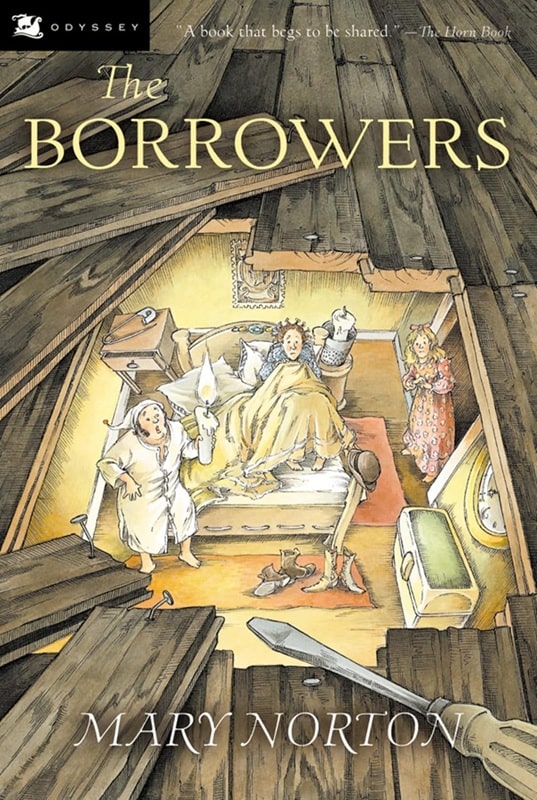

The Borrowers and The Borrowers Afield, by Mary Norton
(Odyssey/Harcourt, January 1998). Covers by Marla Frazee
I’ve done four posts in a row on Edgar Rice Burroughs, with more to come. But right now it’s time for a change of pace.
It’s going to be a big change for this particular post. It’s about The Borrowers. In my late teens, after I learned Andre Norton was a woman, someone told me she’d written books under her own name of Mary Norton, and that one was called The Borrowers. Turns out this wasn’t true; her original name was Alice Mary Norton, although she changed it legally to Andre Alice Norton in 1934. This was in the late 1970s, pre-internet, and I believed Andre Norton wrote The Borrowers for several years. It added to her charm for a while because I’d read The Borrowers when I was 11 or 12 and adored it.
The Borrowers may seem pretty far afield from Sword & Planet fiction, but the story of little people living in human houses and borrowing things from them, which would explain why things got “lost,” inspired my imagination and I invented many stories of myself shrunk down to that size and adventuring. After I wrote Swords of Talera, my first S&P novel, I toyed with the idea of writing an S&P story with borrower size characters but never did. Many many years later I discovered a graphic novel from DC called Sword of the Atom, which somewhat scratched that itch for me. (More on that later.)
[Click the images for non-Borrower-sized versions.]
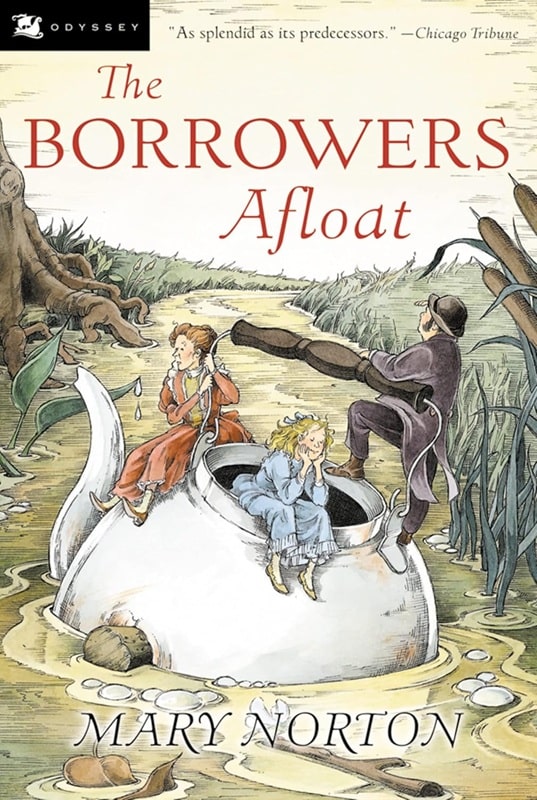
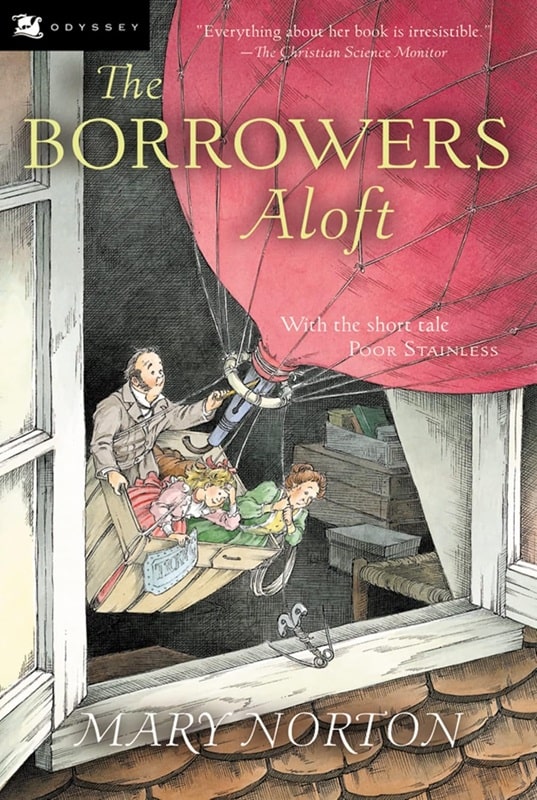
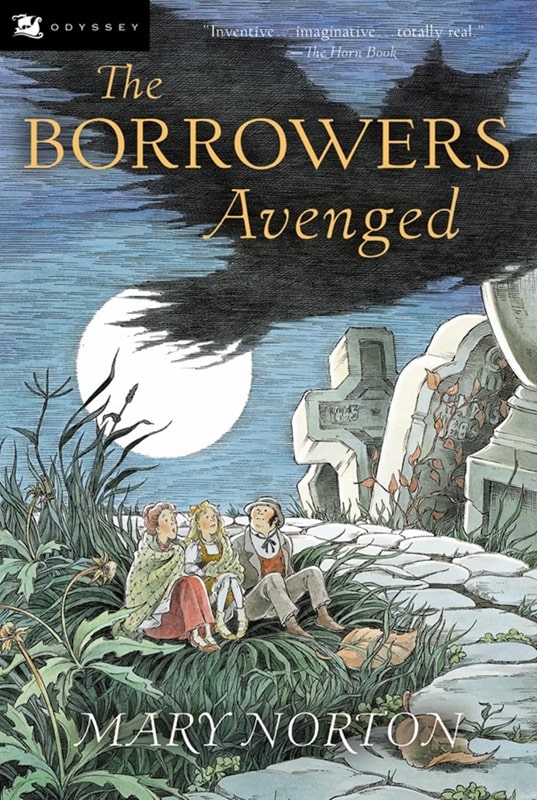
The Borrowers Afloat, The Borrowers Aloft, and The Borrowers Avenged
(Odyssey/Harcourt, January 1998). Covers by Marla Frazee
I got The Borrowers from our local library and only found out as an adult in my thirties that there were three later books in the series. These are: The Borrowers Afield, Afloat, and Aloft. I still remember being irritated at our library for not having those too. I would have devoured them.
This happened to me with other series I would have read more of at the time, including The Three Investigators (I thought there were just 2), The Hardy Boys (I only saw 3), and Doc Savage (I thought there was only a couple).
I picked up my own copy of The Borrowers many years ago, and later got The Borrowers Afloat, but after thinking about this post I went and ordered Afield and Aloft, and then discovered that Mary Norton wrote a fifth sequel 20 years after Aloft called The Borrowers Avenged. I ordered that one too. I just finished reading Afield and Aloft and they had all the charm and fun of the original.
I’m reading Avenged now. The first two I have are ex-library copies but I bought the other three are new. The older ex-library editions have wonderful covers and interior illustrations by Beth and Joe Krush. I particularly love The Borrowers Afield cover, by Marla Frazee. Totally ignites my imagination.
Charles Gramlich administers The Swords & Planet League group on Facebook, where this post first appeared. His last article for Black Gate was The Fiction of Edgar Rice Burroughs, Part IV: The Hollow Earth and Pellucidar.
“Worms of the Earth” and Robert E. Howard’s Ultimate Triumph
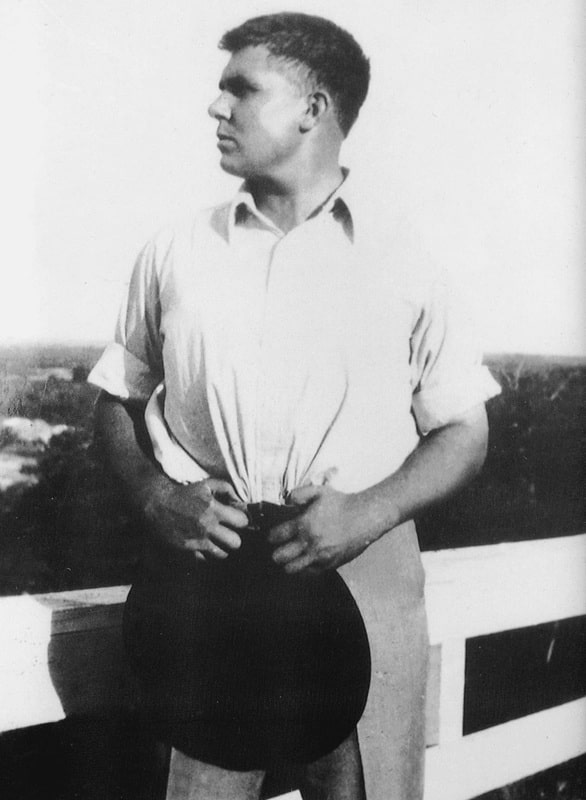
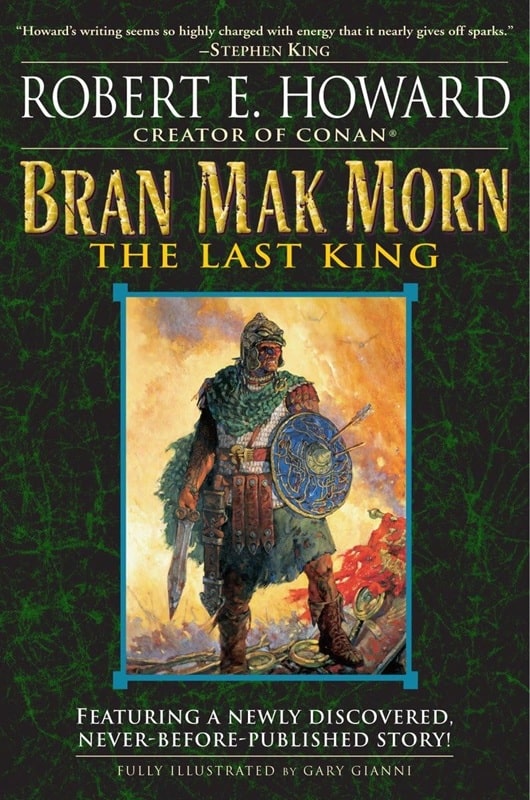
Robert E. Howard in a photo sent to H.P. Lovecraft in 1931,
and Bran Mak Morn: The Last King (Del Rey, May 31, 2005)
January 22, 2025 was the 119th birthday of Robert E. Howard, my favorite author. The works of this great author resonate with countless fans to this day.
“Worms of the Earth” is my favorite story by Robert E. Howard. It features Bran Mak Morn, the last king of the Picts.
Howard was fascinated with Picts, his conception of whom was largely mythological, with splashes of real world history. The Picts in his stories span Kull, Conan, Bran, James Allison, and more.
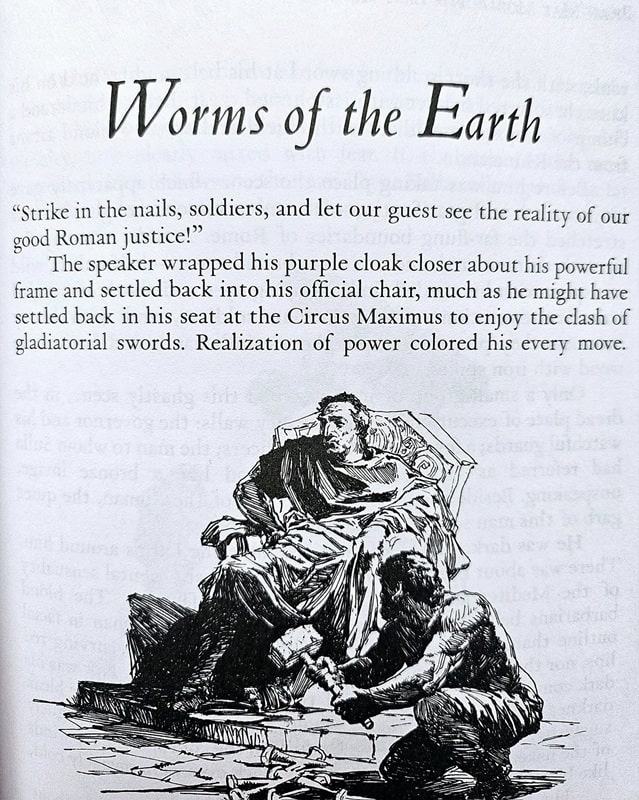
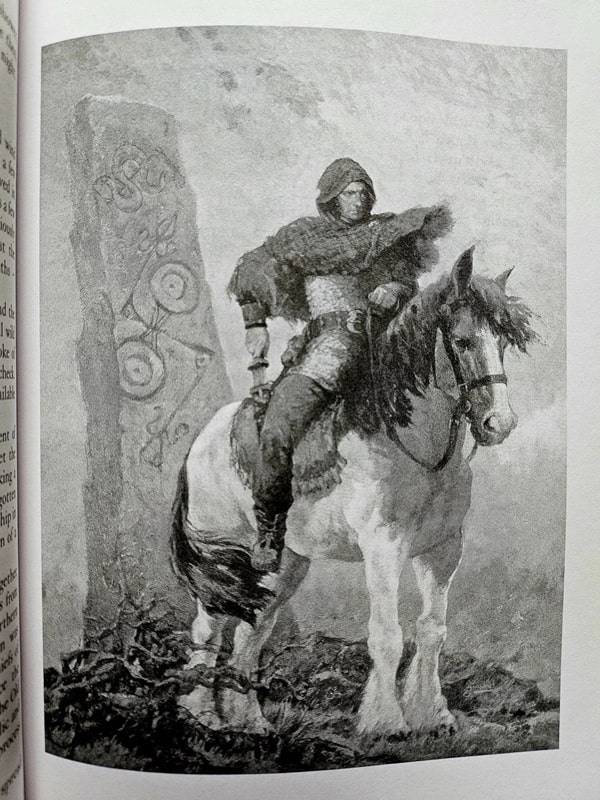
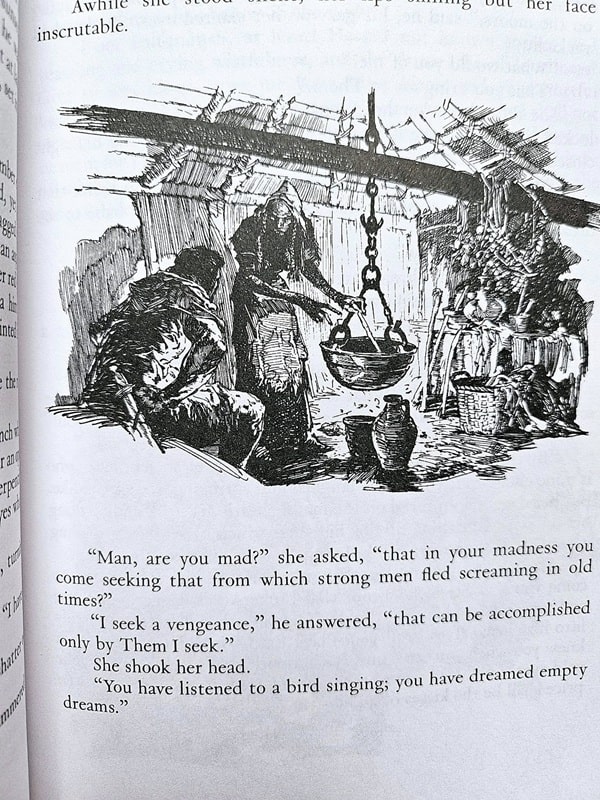
Art and layout from “The Worms in Earth,” published in
Bran Mak Morn: The Last King. Art by Gary Gianni
Of this story, REH said, “Only in my last Bran story, The Worms of the Earth… did I look through Pictish eyes, and speak with a Pictish tongue!”
The attached pictures feature art by Gary Gianni, from the Del Rey paperback, Bran Mak Morn, The Last King. His illustrations of the witch-woman, Atla, are particularly good.
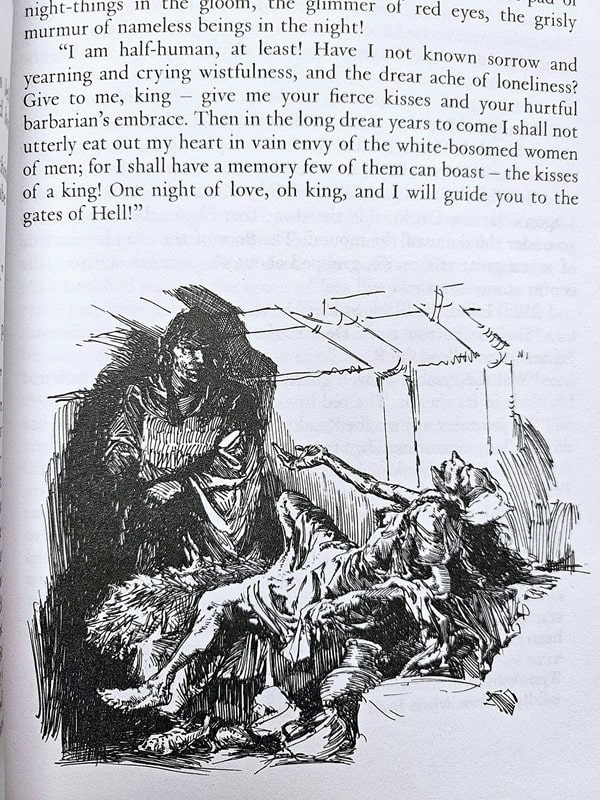
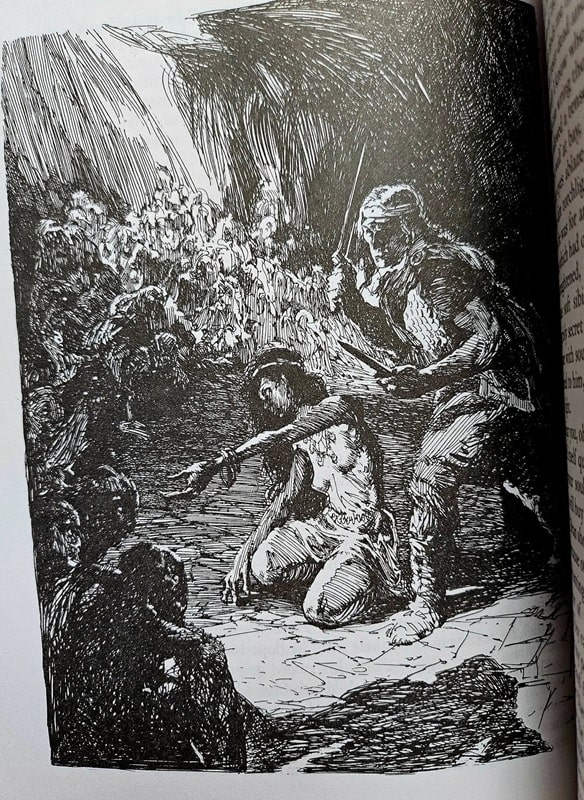
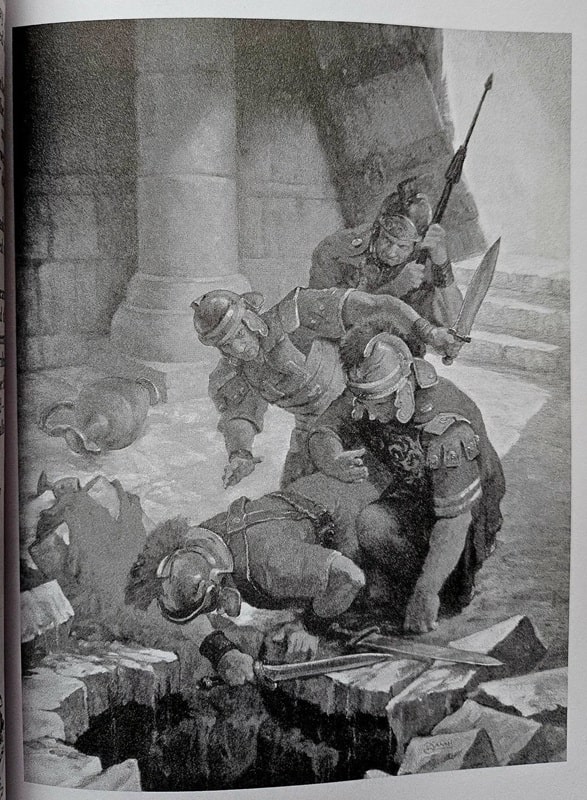
From “The Worms in Earth,” in Bran Mak Morn: The Last King
She was truly remarkable in the story, especially when she named her price for help to Bran:
What of my blasted and bitter life, I, whom mortal men loathe and fear? I have not known the love of men, the clasp of a strong arm, the sting of human kisses, I, Atla, the were-woman of the moors! What have I known but the lone winds of the fens, the dreary fire of cold sunsets, the whispering of the marsh grasses? – the faces that blink up at me in the waters of the meres, the foot-pad of night-things in the gloom, the glimmer of red eyes, the grisly murmur of nameless beings in the night!
I am half-human, at least! Have I not known sorrow and yearning and crying wistfulness, and the drear ache of loneliness? Give to me, king – give me your fierce kisses and your hurtful barbarian’s embrace. Then in the long drear years to come I shall not utterly eat out my heart in vain envy of the white-bosomed women of men; for I shall have a memory few of them can boast – the kisses of a king! One night of love, oh king, and I will guide you to the gates of Hell!
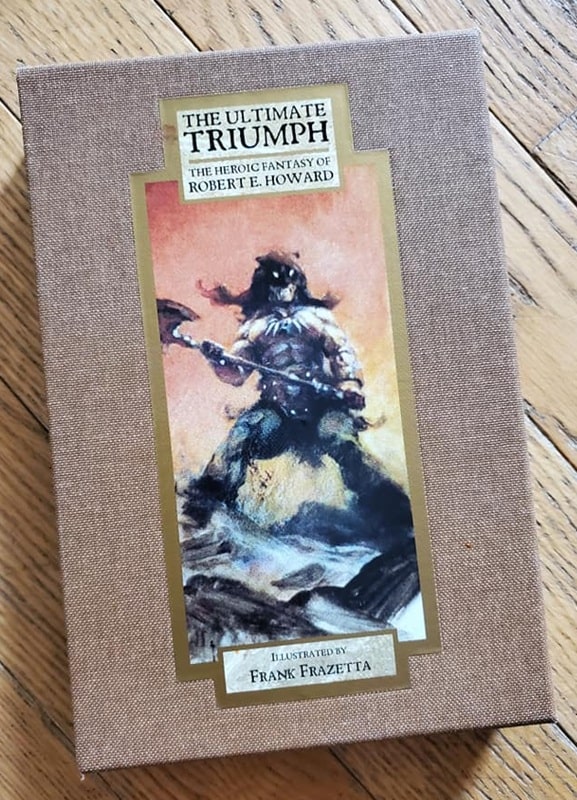
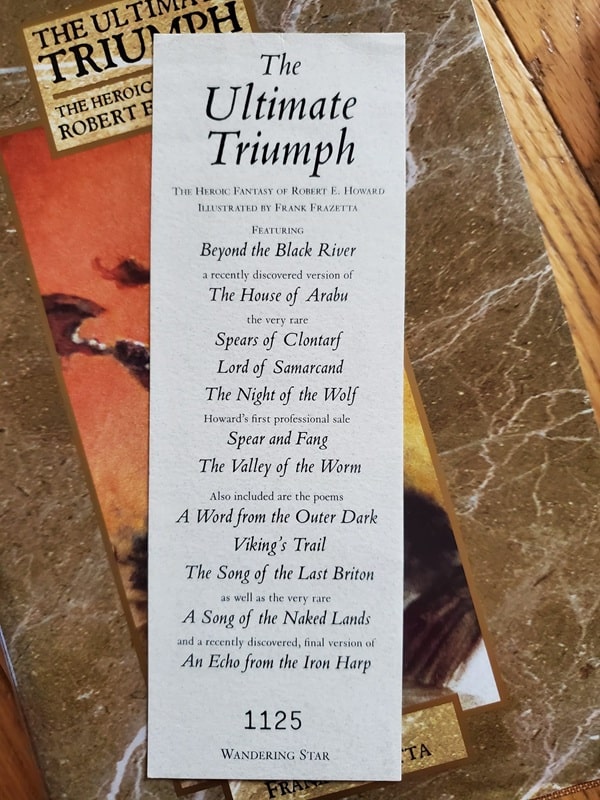
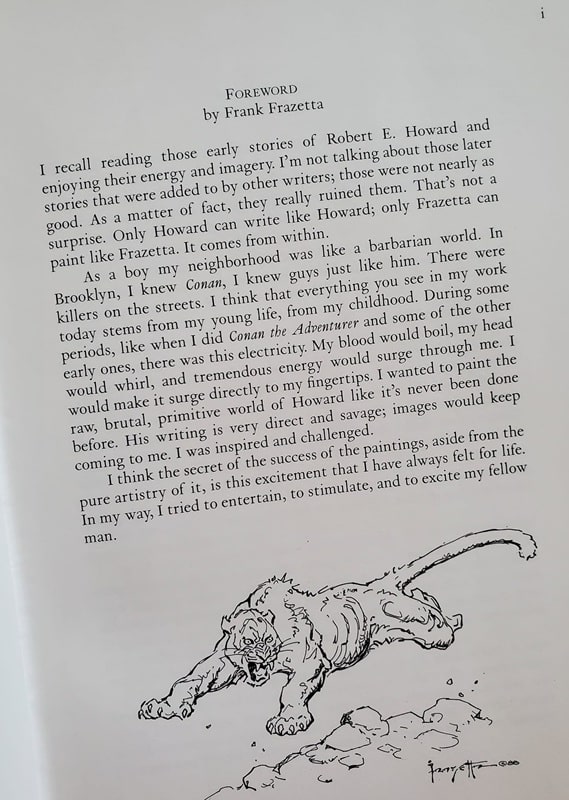
The Ultimate Triumph: The Heroic Fiction of Robert E. Howard
(Wandering Star, January 1, 1999). Art by Frank Frazetta.
The Ultimate Triumph ~ The Heroic Fiction of Robert E. Howard, illustrated by Frank Frazetta, is a prized treasure of mine, a gift that I received from my dear friend, Jim Goodwin.
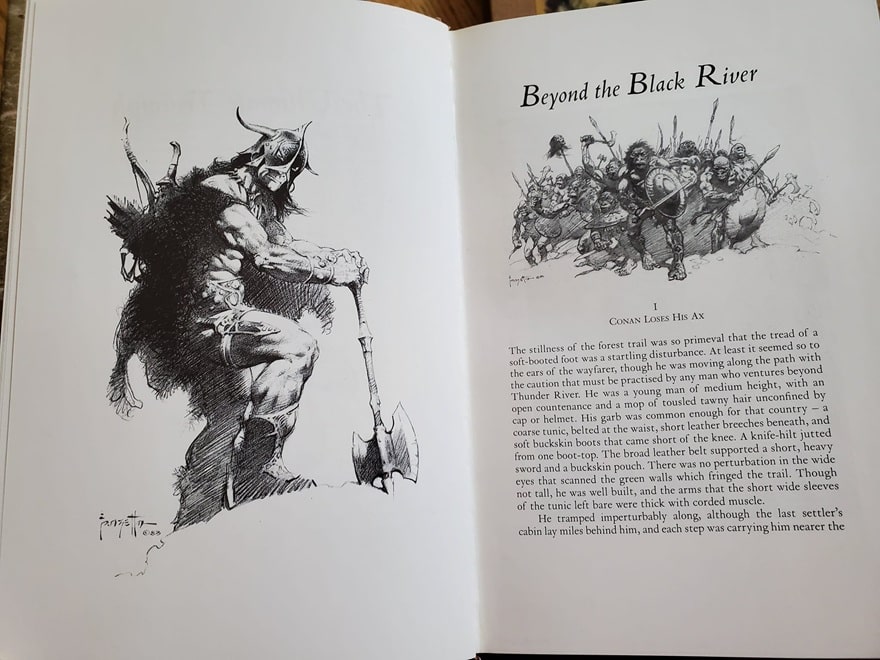 “Beyond the Black River,” in The Ultimate Triumph: The Heroic Fiction of Robert E. Howard. Art by Frazetta
“Beyond the Black River,” in The Ultimate Triumph: The Heroic Fiction of Robert E. Howard. Art by Frazetta
It features my favorite Conan story, “Beyond the Black River,” a recently discovered version of “The House of Arabu,” and several other rarities, poems, and one of my favorite letters that REH wrote to HPL regarding his stance on Civilization vs. Barbarism.
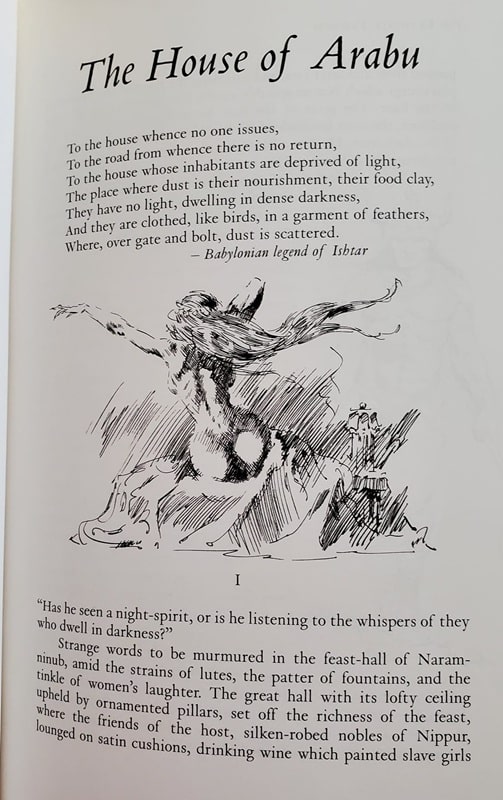
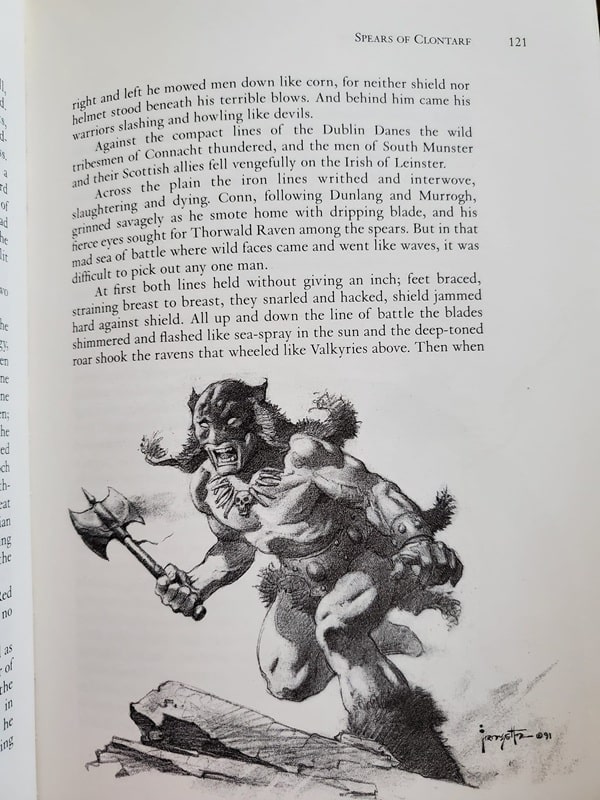
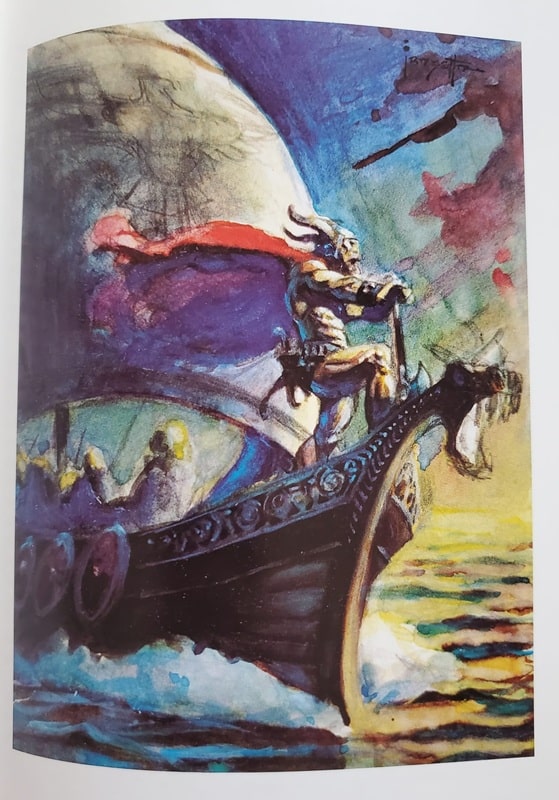
From The Ultimate Triumph: The Heroic Fiction of Robert E. Howard. Art by Frazetta
Sprinkled throughout this slipcased volume are incredible illustrations and paintings by the great Frank Frazetta. In fact, a foreword by Mr. Frazetta is also included, as well as an introduction by preeminent Howard scholar, Rusty Burke.
The title of this book is no misnomer, my friends — it truly is the ultimate triumph.
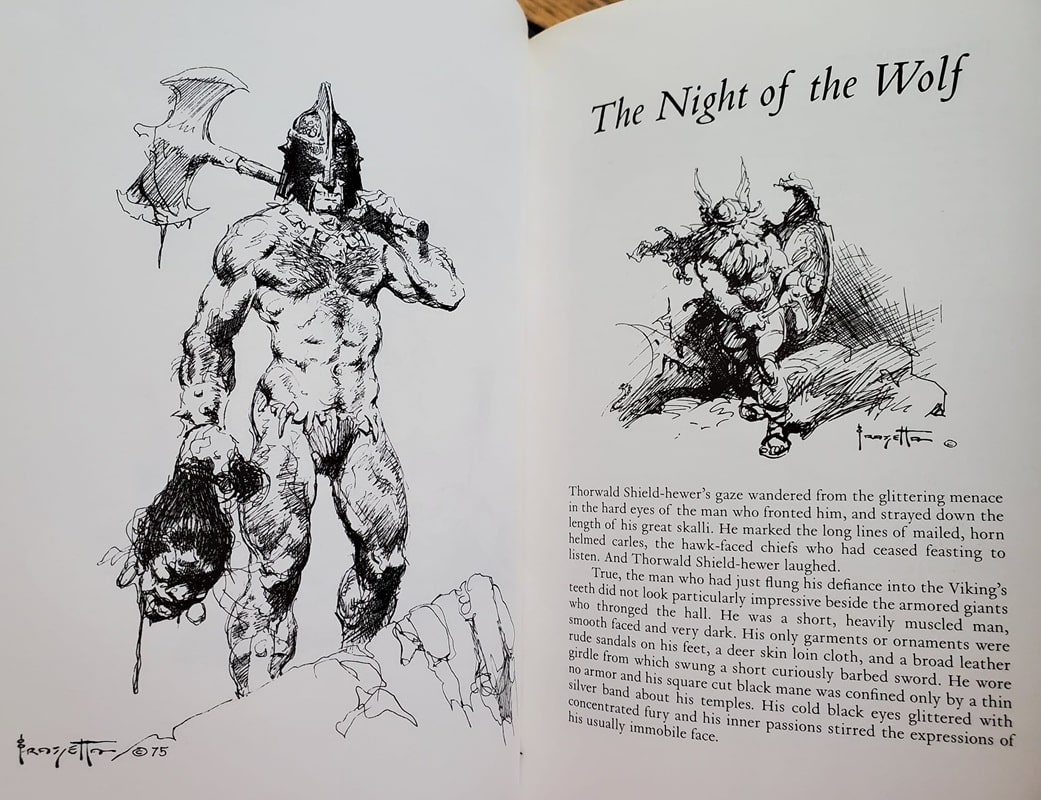
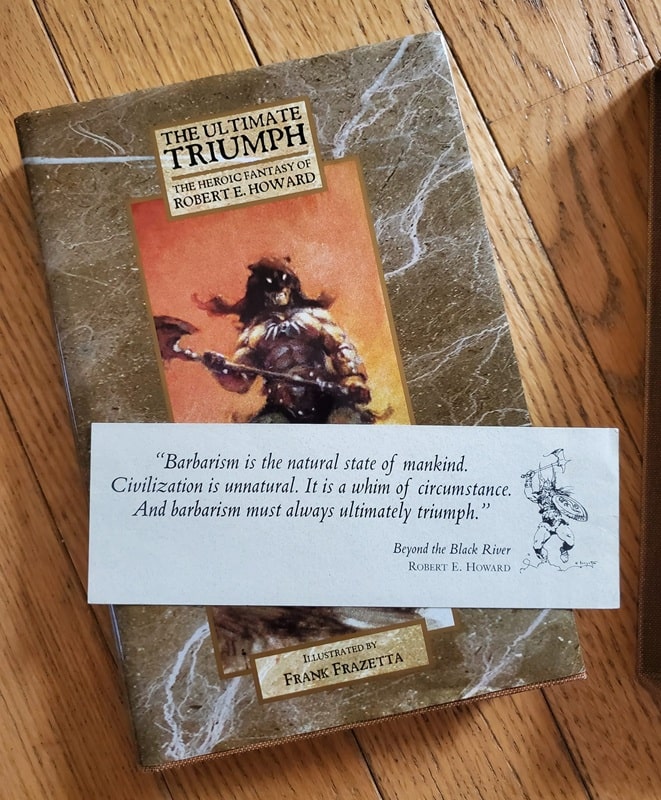
From The Ultimate Triumph: The Heroic Fiction of Robert E. Howard. Art by Frazetta
Robert E. Howard’s boxing stories may be his least read, because he’s so well known for Conan, Kull, Solomon Kane, Bran Mak Morn, El Borak, and several “Weird West” tales (a sub-genre that he is sometimes credited as the originator of).
But the boxing stories are excellent, too! They also include more humor than many of his other works (excepting the stories from A Gent from Bear Creek). Several of the “Sailor” Dennis Dorgan tales were not published during Robert’s lifetime, and those that were published were done so under his pseudonym, Patrick Ervin.
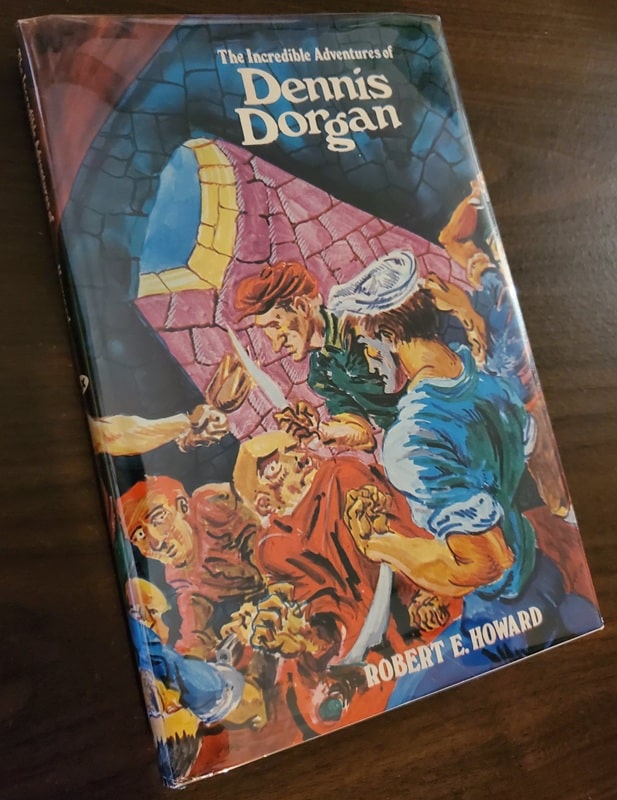 The Incredible Adventures of Dennis Dorgan (Fax Collector’s Editions, January 1, 1974))
The Incredible Adventures of Dennis Dorgan (Fax Collector’s Editions, January 1, 1974))
In December 2022 I received the download files for “The Black Stone,” by Robert E. Howard. This dramatic presentation, recorded by the inimitable H.P. Lovecraft Historical Society, may be (and please correct me if I’m wrong) the first time they have recorded an REH story. I couldn’t wait to listen to it! This is one of my favorite short stories.
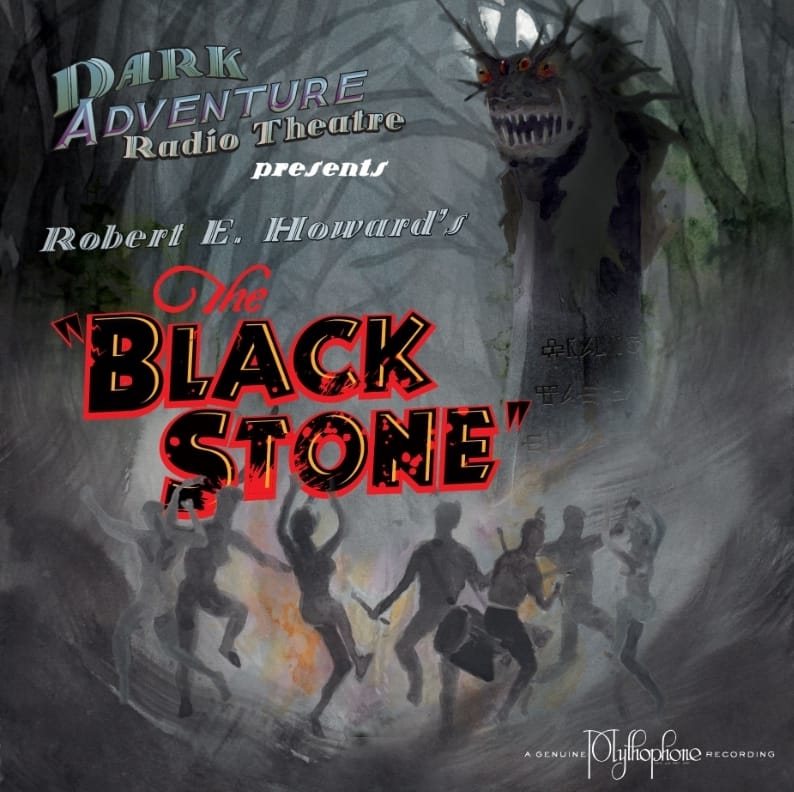 Robert E. Howard’s The Black Stone (H.P. Lovecraft Historical Society, December 2022)
Robert E. Howard’s The Black Stone (H.P. Lovecraft Historical Society, December 2022)
Robert E. Howard was an incredible innovator of sword-and-sorcery, weird fiction, horror, boxing, action/adventure, western, weird west stories, and more, as well as an equally impressive collection poems and verse. And he did almost all of it in a ten-year period from about age 20 to his passing at age 30, pounding away on an Underwood typewriter in a cramped, screened-in porch. I marvel at what he accomplished, and I wonder at what might have been.
If you are interested in the man and his life, I highly recommend Blood and Thunder, by Mark Finn.
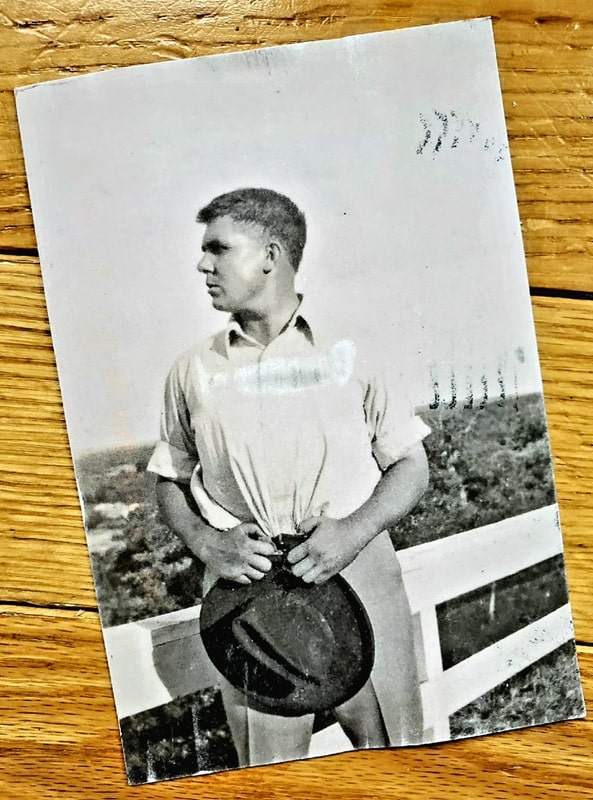
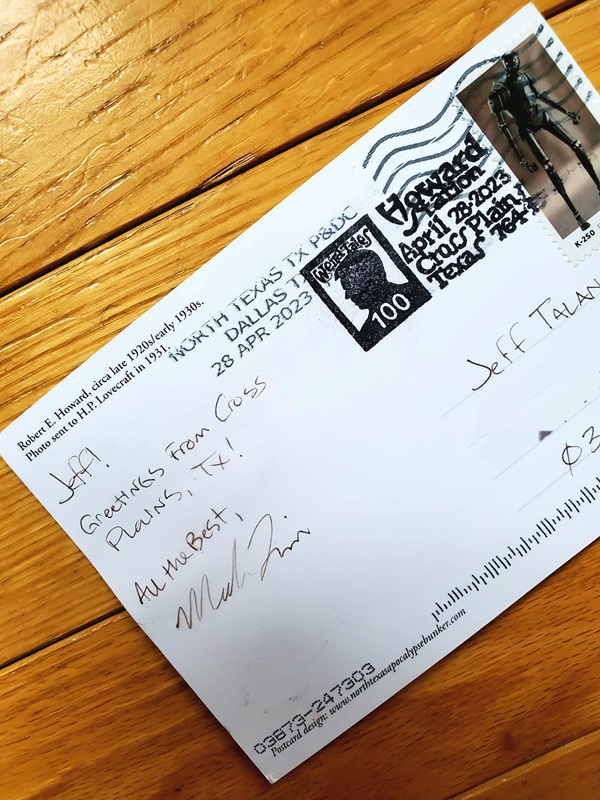
Robert E. Howard postcard
I never imagined that a postcard would be sent to me from Robert E. Howard’s home town of Cross Plains, TX. And during the 100-year anniversary of Weird Tales magazine, no less! I am ever grateful to my dog brother, Mark Finn, for making this possible.
I first met Mark after I’d read his stellar biography Blood & Thunder. I wanted to express my gratitude and appreciation for his incredible work, and I soon learned (surprise, surprise; or, “surprize,” as REH spelled it) that he was a fellow tabletop RPG enthusiast and comic book fan. So, thank you, Mark! By this postcard you rule!
Jeffrey P. Talanian’s last article for Black Gate was a review of The Eye of Sounnu by Schuyler Hernstrom. He is the creator and publisher of the Hyperborea sword-and-sorcery and weird science-fantasy RPG from North Wind Adventures. He was the co-author, with E. Gary Gygax, of the Castle Zagyg releases, including several Yggsburgh city supplements, Castle Zagyg: The East Mark Gazetteer, and Castle Zagyg: The Upper Works. Read Gabe Gybing’s interview with Jeffrey here, and follow his latest projects on Facebook and at www.hyperborea.tv.
Was Don Newcombe a Hall of Famer? – Spring means Baseball
 I have occasionally strayed off topic here at Black Gate, KISS, the Beach Boys, Humphrey Bogart…stuff like that. I played tee-ball as a tyke and have loved baseball my whole life. With a new season dawning (one in which my beloved Dodgers are the reigning World Series champs for the fourth time since I was born), I wanted to talk baseball. And I think that sharing about Don Newcombe is the way to do it.
I have occasionally strayed off topic here at Black Gate, KISS, the Beach Boys, Humphrey Bogart…stuff like that. I played tee-ball as a tyke and have loved baseball my whole life. With a new season dawning (one in which my beloved Dodgers are the reigning World Series champs for the fourth time since I was born), I wanted to talk baseball. And I think that sharing about Don Newcombe is the way to do it.
In 1949’s (sappy) It Happens Every Spring, Ray Milland’s chemistry professor suffers through his life half of the year, to get to baseball season.
Lord Tenneyson said ‘In the Spring a young man’s fancy lightly turns to thoughts of love.’ For a long time, it was baseball, not love, that young men thought of in American Spring.
When Spring Training would roll around in Florida (and then later, also in Arizona), I used to say “If they’re playing baseball somewhere, there’s till some hope for the world.” I’m not sure I believe that in these messed-up days. But the Dodgers (the epitome of a small-market, hard-working franchise, competing against big city, big money teams – HA HA HA) are working out and playing games in Arizona. It’s baseball season, which helps me ignore that my Ohio wind chill is 15 degrees right now.
The Dodgers and Yankees met in the World Series in 1947, 1949, 1952, 1953, 1955 and 1956. It was a glorious era for NYC baseball (and the Giants were a powerhouse as well), though Brooklyn managed to win only the 1955 matchup.
The greatest advantage that the Yankees had was their starting pitching. Whether it was Eddie Lopat, Allie Reynolds, Whitey Ford, Bob Kuzava or Don Larsen, the Bronx Bombers always seemed to come up with somebody in big moments (if not for Cookie Lavagetto, Bill Bevens would be included on that list).
 Rick Monday, Newcombe, Sandy Koufax, and Steve Garvey
Rick Monday, Newcombe, Sandy Koufax, and Steve Garvey
During this era, Don Newcombe rose above other Dodger would-be aces such as Carl Erskine, Ralph Branca and Johnny Podres (though the latter certainly carried the flag in the 1955 Series). Big Newk missed the 1952 and 1953 seasons, as he was serving his country, fighting in Korea. And his 1954 season was a poor one: it took him a year to get back to form after being released from service.
But from 1949-1951 and 1955-1956, Newcombe went a combined 103-40, with 92 complete games. Those are some impressive numbers for the 1949 Rookie of the Year.
However, he got a reputation as a choker in big games. He went all ten innings against the Phillies on the final day of the 1950 season, with the Dodgers needing a win to force a playoff. But he gave up a three run homer to Dick Sisler in the top of the tenth in the season-ending 4-1 loss (which would have been a win if third base coach Milt Stock had simply held Cal Abrams at third in the bottom of the ninth).
He carried a 4-1 lead into the ninth inning of that famous game three playoff against the Giants in 1951. But he couldn’t hold on and he had been relieved by Ralph Branca when Bobby Thomson hit the home run heard round the world.
And in three World Series’, he just couldn’t get the job done for the Dodgers. He started 5 games, going 0-4 with an ERA of 8.59 and lasting about 4 innings a start. Dominating regular season, poor post-season: Shades of a great lefty named Clayton Kershaw, several decades and thousands of miles West, later (Kershaw is my second-favorite Dodger, after Jackie Robinson).
In 1956, he won the (very first) Cy Young Award and the NL MVP, going 27-7. But in the World Series he couldn’t make it out of the second inning of game two or the fourth in game seven. His drinking more directly impacting his performance, as well as his shoulder wearing out from the overuse, his career was effectively done, and he went a combined 37-42 in the four years after that Cy Young season.
He spent 1961 in the minors and he finished in Japan in 1962, as a first baseman. Newcombe was a career.268 batter, with 7 homers in 1955. He could have been a major league hitter.
A Trailblazer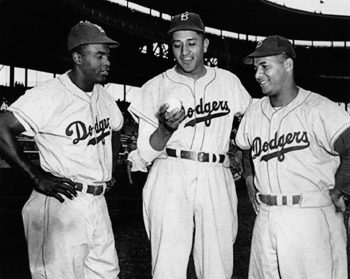 Newcombe was one of the first black players signed by the Dodgers. He and Roy Campanella played with Nashua of the New England League (B) in 1946. Newcombe returned there in 1947 (striking out 186), while Campanella played at AAA Montreal, and Jackie Robinson changed the world in Brooklyn.
Newcombe was one of the first black players signed by the Dodgers. He and Roy Campanella played with Nashua of the New England League (B) in 1946. Newcombe returned there in 1947 (striking out 186), while Campanella played at AAA Montreal, and Jackie Robinson changed the world in Brooklyn.
Newcombe was dominant in his two years at Nashua, going 33-10 with an ERA well under 3. He probably would have played in AA ball in 1947 but the Dodgers’ two AA teams were in the South and not yet ready to be integrated. Apparently AAA wasn’t the best option, as it had been for Robinson and Campanella.
In 1948 he went 17-6 at AAA Montreal (while Campy began his Hall of Fame career in Brooklyn). He threw his only no hitter, won three games in the first round of the International League Playoffs (losing another game 0-1), and then won a game in the Governor’s Cup series. He then went 1-1 as the Royals defeated the Dodgers’ other AAA team (St. Paul) for the Junior World Series. Newcombe dominated AAA.
He got called up to the Dodgers early in 1949. He was only the second black pitcher in the major leagues and the first good one (Dan Bankhead pitched in four games for the Dodgers in 1947).
Jackie Robinson deserves every praise and accolade. But Don Newcombe was the first man to prove an African-American could pitch in the major leagues. He hit 3 batters as a rookie, and 6 his third year. But there were no racial issues about a black pitcher hitting a white batter. It didn’t hurt that he was 6’-4”, 220. But his success, and his acceptance on the field, made him a pioneer, though he never received the credit he deserved for that.
Close to Cooperstown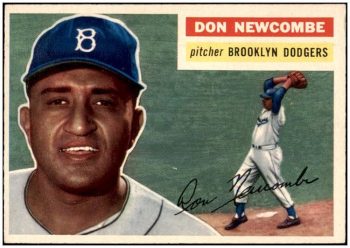 His raw numbers are lacking in HoF dazzle: 153-96, with a 3.57 ERA.
His raw numbers are lacking in HoF dazzle: 153-96, with a 3.57 ERA.
He does have one Rookie of the Year, one MVP, and one Cy Young award, along with one World Series ring, and he was a four-time All Star. That’s what is. But we can also look at a few ‘What ifs.’
There are four distinct elements of his career that might have changed his possible Hall of Fame path:
1) Newcombe’s first two seasons were spent with the Newark Eagles in the Negro Leagues. It’s fair to say that he might have developed more quickly with two years in the Dodgers’ system. But he was only 18 that first year. Maybe the hard experience of playing in the Negro Leagues had some benefits for him.
2) He lost a season, maybe two, to baseball’s color barrier. It’s a foregone conclusion that he would have done better than Dan Bankhead did. He was 17-8 with 19 complete games and a league-leading 5 shutouts as a 23 year-old rookie. That’s a pretty good start.
3) And he lost nearly two peak seasons to the Korean War. Plus his first year back was basically a lost one as well. He easily could have had three more 20 win/single-digit loss seasons.
Give him 60 more wins for the Korean War years, and there would be a dozen pitchers with fewer wins who are in the Hall of Fame, including two Dodgers (Don Drysdale, Dazzy Vance).
4) Finally, had Newcombe pitched better in the World Series (especially in 1956), he might well have continued on as one of the NL’s top pitchers, instead of spiraling deep into alcoholism.
With two more outs, it’s Newcombe, not Bobby Thomson, who is the hero of the 1951 NL playoff series (playoffs only occurred if two teams were tied at the end of the season. MLB did not adopt divisions and regular playoffs until 1969).
And with post-season success, the media might have lightened up (racism was certainly involved, but everyone loves a winner – somewhat). And he might have been more at ease if he wasn’t so clenched up inside from the criticism (Conversely, Newcombe was not appropriately praised for when he excelled, which he often did.).
That fourth factor (the postseason) was certainly within his control. But if the first three things had gone a bit differently, Don Newcombe might well be in the Hall of Fame today.
He and Justin Verlander are the only players to win the Rookie of the Year, Cy Young and MVP awards. That speaks volumes.
He Was Criticized Unjustly in the Press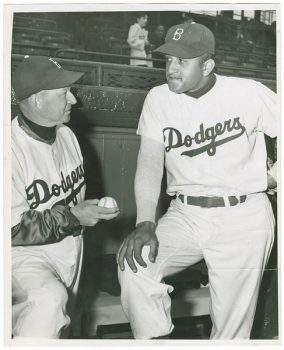 If you’ve read books about Jackie Robinson, you know the abuse that racist sportswriters (and fans, and players, and…) heaped upon him. Other early trailblazers like Newcombe were also the subject of vitriol. On September 14, 1951, Tommy Holmes of the Brooklyn Eagle – under the headline Is Newcombe Ailment a Case of Imaginatis? – wrote a scathing, rumor and innuendo-filled attack on Newcombe, which never would have been written about a white pitcher. Excerpts can be found in Jon Weisman’s book on Dodgers pitching, Brother in Arms. It’s a pathetic piece of non-objective ‘journalism’.
If you’ve read books about Jackie Robinson, you know the abuse that racist sportswriters (and fans, and players, and…) heaped upon him. Other early trailblazers like Newcombe were also the subject of vitriol. On September 14, 1951, Tommy Holmes of the Brooklyn Eagle – under the headline Is Newcombe Ailment a Case of Imaginatis? – wrote a scathing, rumor and innuendo-filled attack on Newcombe, which never would have been written about a white pitcher. Excerpts can be found in Jon Weisman’s book on Dodgers pitching, Brother in Arms. It’s a pathetic piece of non-objective ‘journalism’.
For example, Holmes asserts that ‘experts’ expected Newcombe to win 30 games that season, and instead of doing so, he was complaining about a sore arm. Dizzy Dean won 30 games in 1934. Exactly one pitcher has done so (that’s a good trivia question – go look it up) in the 90 seasons since. Holmes wrote an ‘uppity negro’ piece on Newcombe, and it was wrong in EVERY way.
As Chuck Dressen desperately tried to stop the Dodgers’ epic collapse (they led by 13 games in August), he kept throwing a tired (Newk led the team in innings pitched and had 18 complete games) and sore-armed Newcombe out there.
Newcombe started on September 17th, lasting only 6 and two-thirds. On the 22nd, he only made it 5 innings. On the 26h, he threw a complete game in a 15-5 win (you think Dressen couldn’t have given him a few innings off in a ten run win?). Only three days later on the 29th, it was a complete game shutout. And the very next day in the must-win season-finale, Dressen had him pitch 5 and two-thirds innings of relief. Big Newk gave up one hit and no runs as the Dodgers won 9-8, forcing the three-game playoff that made Bobby Thomson a baseball legend.
On only two days rest, after that heavy workload, Newcombe pitched 8 and one-third innings in that third-game loss. He had performed an even more impressive feat of carrying the team to the final day of the season the year before.
Holmes and other writers (and NYC baseball writers were celebrities in their day) wrote about Newcombe from their racist beliefs, not as objective observers. He was a workhorse who carried Dodgers teams to the brink of championships.
Alcoholism and RebirthNewcombe succumbed to life-long alcoholism. While he made the choice to drink, the unrelenting (and unreasonable) pressure he was subjected to, along with racist abuse, surely contributed to its severity. He declared bankruptcy in 1965 (he sold his World Series ring, which future Dodgers owner Peter O’Malley later bought and returned to him), and later divorced.
But he stopped drinking, straightened out his life, and was the Dodgers’ Director of Community Relations for over forty-five years, passing away in 2019. He became a leader in several organizations inside and outside of baseball, related to beating alcoholism.
Newcombe reflected on his career being cut short:
“I was only 34, but the alcohol had taken its toll. I think it shortened my major-league career by about six or seven years. I regret that I didn’t take better care of myself in the latter part of my career because I would like to have made the Hall of Fame, where I think I belong.”
Don Newcombe was haunted by his own demons, but found his own personal redemption. And with better handling on the Dodgers’ part; a few more seasons in the majors; and some more self-control, he could well be in Cooperstown today.
Newcombe recounted a conversation he had with Martin Luther King Jr.:
“Do you want to know what Jackie’s impact was? Well, let Martin Luther King tell you. In 1968, Martin had dinner in my house with my family. This was 28 days before he was assassinated. He said to me, ‘Don, I don’t know what I would have done without you guys setting up the minds for people for change. You, Jackie (Robinson) and Roy (Campanella) will never know how easy you made it for me to do my job.’ Can you imagine that? How easy we made it for Martin Luther King?”
He was an under-appreciated trailblazer, who rewrote his own personal story and played a major part in Dodgers’ history, on and off the field. And he wasn’t as far from a Hall of Fame career as one might think. It’s a shame no one worked with him to write a biography. It would have been a terrific book. He passed in 2019.

Bob Byrne’s ‘A (Black) Gat in the Hand’ made its Black Gate debut in 2018 and has returned every summer since.
His ‘The Public Life of Sherlock Holmes’ column ran every Monday morning at Black Gate from March, 2014 through March, 2017. And he irregularly posts on Rex Stout’s gargantuan detective in ‘Nero Wolfe’s Brownstone.’ He is a member of the Praed Street Irregulars, founded www.SolarPons.com (the only website dedicated to the ‘Sherlock Holmes of Praed Street’).
He organized Black Gate’s award-nominated ‘Discovering Robert E. Howard’ series, as well as the award-winning ‘Hither Came Conan’ series. Which is now part of THE Definitive guide to Conan. He also organized 2023’s ‘Talking Tolkien.’
He has contributed stories to The MX Book of New Sherlock Holmes Stories — Parts III, IV, V, VI, XXI, and XXXIII.
He has written introductions for Steeger Books, and appeared in several magazines, including Black Mask, Sherlock Holmes Mystery Magazine, The Strand Magazine, and Sherlock Magazine.
Half a Century of Reading Tolkien: Part Three – The Two Towers by JRR Tolkien
 Gollum sat up again and looked at him under his eyelids. ‘He’s over there,’ he cackled. ‘Always there. Orcs will take you all the way. Easy to find Orcs east of the River. Don’t ask Sméagol. Poor, poor Sméagol, he went away long ago. They took his Precious, and he’s lost now.’
Gollum sat up again and looked at him under his eyelids. ‘He’s over there,’ he cackled. ‘Always there. Orcs will take you all the way. Easy to find Orcs east of the River. Don’t ask Sméagol. Poor, poor Sméagol, he went away long ago. They took his Precious, and he’s lost now.’
‘Perhaps we’ll find him again, if you come with us,’ said Frodo.
‘No, no, never! He’s lost his Precious,’ said Gollum.
Sméagol from The Taming of Sméagol of The Two Towers
When I was younger, The Two Towers (1954) seemed to suffer from middle-book syndrome: the bits after the start of series that had to be trudged through in order to reach the exciting end. Not all of it — it does feature a big battle complete with magic and explosives — but Frodo, Sam, and Smeagol’s trek to Mordor sometimes felt as arduous for me to read as it was for them to cross the swamp and slag heaps. Now, I believe The Two Towers, and the second half, The Ring Goes East, is the heart of the whole series. Nowhere does Prof. Tolkien speak more clearly on the weight of war, the burden and necessity of standing against evil, and the eroding effects of that duty.
The Two Towers has some of the most powerful writing in all the trilogy. There are several passages that have never failed to move me. That one of the most powerful of these lines was taken away from Sam carelessly given to Bad Faramir (more on that atrocity later), is one of the greatest crimes among the many I hold against Peter Jackson.
It’s the book of the trilogy that contains the most obvious references to Tolkien’s own service at the Somme in 1916. In the comments on my first article in this series, Half a Century of Reading Tolkien: Part One, K. Jespersen wrote that the books tasted of ashes, a flavor he linked directly to the First World War. I don’t tastes ashes in the books myself, but there are chapters redolent of them.
 Battle of the Hornburg by Alan Lee
Battle of the Hornburg by Alan Lee
Again, for the uninitiated, a brief summary is in order. Following the disastrous events at the end of The Fellowship of the Ring, the Nine Walkers are split into three groups. Merry and Pippin, captured by a band of orcs, are dragged westward toward Isengard and Saruman. Frodo, with Sam insisting on accompanying, after Boromir’s attempt to seize the Ring, heads eastward toward Mordor and Mount Doom. Aragorn decides that Frodo and Sam might succeed on their own, but unless he, Legolas, and Gimli follow the other two hobbits, they will suffer torment and death.
The book’s first half, The Treason of Isengard, switches back and forth between Merry and Pippin’s travails, and Aragorn and his companions’ assorted adventures across Rohan. The two parties are reunited a week later after the return of Gandalf, the introduction of the Ents, great tree-like beings, and the Battle of the Hornburg (aka, the Battle of Helm’s Deep). The last is huge and murky in Peter Jackson’s film version, but on the page is tighter and far more tactically coherent.
The Ring Goes East, as I said, is the real heart of the trilogy. Frodo takes leave of his companions because he knows he must take the Ring to Mount Doom and that no one else can resist its malignant gravity. It also introduces Gollum/Sméagol. Gollum had been tracking the Nine Walkers from at least Moria, but he remained off stage. Now, he is captured and bound to Frodo after being made to swear on the Ring. Gollum, who calls the Ring his Precious, bore it for centuries. It twisted and hollowed him out, eating away at his mind and his soul. Now, he would do anything for its owner and, simultaneously, anything to repossess it.
Together, the trio cross the Dead Marshes, site of a great battle. Fought thousands of years before, images of the fallen, man, elf, and orc alike, linger on just below the surface of the marsh’s waters. Ghost lights flit over them, luring the unwary to their doom. Tolkien supposed that the battlefields of the Somme lived on in the Dead Marshes. He described how shell holes would be filled with water and the dead of both sides floated in them.
Clearing the swamps and finding Mordor’s main gate too formidable an obstacle, they head south to a secret way through the mountains Gollum claims can take them safely into Mordor. They meet their first men of Gondor, see an oliphaunt, witness the sallying forth of one of Sauron’s armies out of citadel so evil the ground around it is cursed, before starting on Gollum’s secret way. Things do not go well for any of them from there.
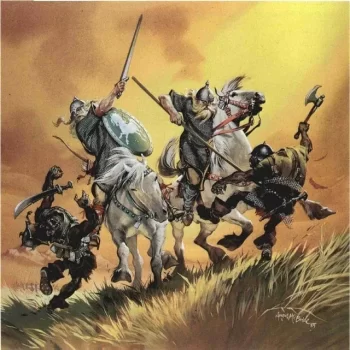 Riders of Rohan by Angus McBride
Riders of Rohan by Angus McBride
The Two Towers expands the reader’s vision of Middle-earth way beyond anything Tolkien displayed previously. The only human civilizations shown were the towns of Bree and Esgaroth. Now, we get to cross the expanse of the land of Rohan and meet its people, the Rohirrim. They been described as “Anglo-Saxon’s on horses,” which is reinforced with their Saxon-derived names such as Théoden, Éomer, and Éowyn.
Their horses were of great stature, strong and clean-limbed; their grey coats glistened, their long tails flowed in the wind, their manes were braided on their proud necks. The Men that rode them matched them well: tall and long-limbed; their hair, flaxen-pale, flowed under their light helms, and streamed in long braids behind them; their faces were stern and keen. In their hands were tall spears of ash, painted shields were slung at their backs, long swords were at their belts, their burnished shirts of mail hung down upon their knees.
It falls to the resurrected Gandalf to restore the king’s spirit so he can rouse his people and his forces against those of Saruman. Saruman once led the White Council against the resurgence of Sauron, but he came to betray them. Now he plans to conquer Rohan, Gondor’s only ally, and seize the Ring for himself.
And rouse the king, Gandalf does, which means we get one of Tolkien’s great epic moments. He doesn’t always show you the action in the books. We get the death of Boromir, Gandalf’s battle against the balrog, and the destruction of Isengard all second hand. Not this time. Instead, we get s brutal night battle against terrible odds and in harrowing detail, alleviated only a little by Gimli and Legolas’s banter over who’s killed more enemies.
It was now past midnight. The sky was utterly dark, and the stillness of the heavy air foreboded storm. Suddenly the clouds were seared by a blinding flash. Branched lightning smote down upon the eastward hills. For a staring moment the watchers on the walls saw all the space between them and the Dike lit with white light: it was boiling and crawling with black shapes, some squat and broad, some tall and grim, with high helms and sable shields. Hundreds and hundreds more were pouring over the Dike and through the breach. The dark tide flowed up to the walls from cliff to cliff. Thunder rolled in the valley. Rain came lashing down.
 The Battle of Helm’s Deep by Darrell K Sweet
The Battle of Helm’s Deep by Darrell K Sweet
Arrows thick as the rain came whistling over the battlements, and fell clinking and glancing on the stones. Some found a mark. The assault on Helm’s Deep had begun, but no sound or challenge was heard within; no answering arrows came.
The assailing hosts halted, foiled by the silent menace of rock and wall. Ever and again the lightning tore aside the darkness. Then the Orcs screamed, waving spear and sword, and shooting a cloud of arrows at any that stood revealed upon the battlements; and the men of the Mark amazed looked out, as it seemed to them, upon a great field of dark corn, tossed by a tempest of war, and every ear glinted with barbed light.
Brazen trumpets sounded. The enemy surged forward, some against the Deeping Wall, others towards the causeway and the ramp that led up to the Hornburg-gates. There the hugest Orcs were mustered, and the wild men of the Dunland fells. A moment they hesitated and then on they came. The lightning flashed, and blazoned upon every helm and shield the ghastly hand of Isengard was seen. They reached the summit of the rock; they drove towards the gates.
Then at last an answer came: a storm of arrows met them, and a hail of stones. They wavered, broke, and fled back; and then charged again, broke and charged again; and each time, like the incoming sea, they halted at a higher point. Again trumpets rang, and a press of roaring men leaped forth. They held their great shields above them like a roof, while in their midst they bore two trunks of mighty trees. Behind them orc-archers crowded, sending a hail of darts against the bowmen on the walls. They gained the gates. The trees, swung by strong arms, smote the timbers with a rending boom. If any man fell, crushed by a stone hurtling from above, two others sprang to take his place. Again and again the great rams swung and crashed.
The Treason of Isengard was probably my favorite part of The Lord of the Rings when I was young. It’s got action and adventure and lots and lots of cool things. I remember me and my dad debating exactly what Orthanc and Meduseld looked like. Gandalf reappears and we learn about the palantír. The reunion of Merry and Pippin with Gandalf and company in Isengard is one of the funniest moments in the books. It all terrific, but it’s in The Ring Goes East, though, where the deepest themes of The Lord of Rings are developed.
Frodo and Sam march off toward Mordor knowing they probably won’t return, but they know it must be done. Defending what is right comes with a cost that leaves no one unchanged. It is too easy to fall in love with bloody deeds for themselves and forsake the things that might be lost.
In the middle of an attack by a band of Gondorian rangers on a force of enemy soldier, Sam meets the enemy up close for the first time.
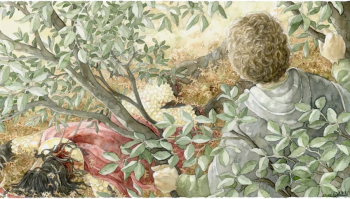 The Fallen Southron by Anke Eißmann
The Fallen Southron by Anke Eißmann
Sam, eager to see more, went now and joined the guards. He scrambled a little way up into one of the larger of the bay-trees. For a moment he caught a glimpse of swarthy men in red running down the slope some way off with green-clad warriors leaping after them, hewing them down as they fled. Arrows were thick in the air. Then suddenly straight over the rim of their sheltering bank, a man fell, crashing through the slender trees, nearly on top of them. He came to rest in the fern a few feet away, face downward, green arrow-feathers sticking from his neck below a golden collar. His scarlet robes were tattered, his corslet of overlapping brazen plates was rent and hewn, his black plaits of hair braided with gold were drenched with blood. His brown hand still clutched the hilt of a broken sword.
It was Sam’s first view of a battle of Men against Men, and he did not like it much. He was glad that he could not see the dead face. He wondered what the man’s name was and where he came from; and if he was really evil of heart, or what lies or threats had led him on the long march from his home; and if he would not really rather have stayed there in peace –
To take these words and give them to anyone other than an innocent gardener from the Shire is practically sacrilegious. I imagine this is how Tolkien must have felt on seeing his first dead Germans in the mud of the front. These words are at the core of the humanist heart of the books. War is a engine that sucks men in and grinds out corpses. It might be necessary, but it is horrible and not something to be cherished as many in Gondor have come to. Instead, the value of what is being defended must never be forgotten.
‘For myself,’ said Faramir, ‘I would see the White Tree in flower again in the courts of the kings, and the Silver Crown return, and Minas Tirith in peace: Minas Anor again as of old, full of light, high and fair, beautiful as a queen among other queens: not a mistress of many slaves, nay, not even a kind mistress of willing slaves. War must be, while we defend our lives against a destroyer who would devour all; but I do not love the bright sword for its sharpness, nor the arrow for its swiftness, nor the warrior for his glory. I love only that which they defend: the city of the Men of Númenor; and I would have her loved for her memory, her ancientry, her beauty, and her present wisdom. Not feared, save as men may fear the dignity of a man, old and wise.
In The Hobbit, Gollum was simply a twisted little monster below Goblin Town who riddled with Bilbo. Here, he’s become Sméagol again, a pathetic creature torn apart by possessing the Ring for so many years and the hold it still holds over him. Not much of Sméagol remains after five hundred years of possessing the Ring, and as he describes it, that part of himself went away a long time ago. When Sméagol is first captured, Frodo recalls the words of Gandalf about how Bilbo’s was stayed by pity and mercy from slaying Gollum and finds the same pity in his own heart. Come the third book, The Return of the King, even after Sméagol has betrayed them and tried to kill them, Sam can’t bring himself to kill him. He’s enough of a tragic creature that Tolkien is able to convince Frodo, and more importantly, the reader, that he might still be something worth saving.
Frodo and Sam are the most developed characters in the trilogy. Tolkien doesn’t go in for all that much interiority with any of the other characters in his books. From their conversations and from their thoughts, Frodo and Sam take on much more life than anyone else. Together, they get to express one of the most profound things in The Lord of the Rings.
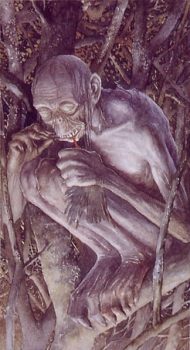 Gollum by Alan Lee
Gollum by Alan Lee
‘And we shouldn’t be here at all, if we’d known more about it before we started. But I suppose it’s often that way. The brave things in the old tales and songs, Mr. Frodo: adventures, as I used to call them. I used to think that they were things the wonderful folk of the stories went out and looked for, because they wanted them, because they were exciting and life was a bit dull, a kind of a sport, as you might say. But that’s not the way of it with the tales that really mattered, or the ones that stay in the mind. Folk seem to have been just landed in them, usually – their paths were laid that way, as you put it. But I expect they had lots of chances, like us, of turning back, only they didn’t. And if they had, we shouldn’t know, because they’d have been forgotten. We hear about those as just went on – and not all to a good end, mind you; at least not to what folk inside a story and not outside it call a good end. You know, coming home, and finding things all right, though not quite the same – like old Mr. Bilbo. But those aren’t always the best tales to hear, though they may be the best tales to get landed in! I wonder what sort of a tale we’ve fallen into?’
‘I wonder,’ said Frodo. ‘But I don’t know. And that’s the way of a real tale. Take any one that you’re fond of. You may know, or guess, what kind of a tale it is, happy-ending or sad-ending, but the people in it don’t know. And you don’t want them to.’
‘No, sir, of course not. Beren now, he never thought he was going to get that Silmaril from the Iron Crown in Thangorodrim, and yet he did, and that was a worse place and a blacker danger than ours. But that’s a long tale, of course, and goes on past the happiness and into grief and beyond it – and the Silmaril went on and came to Eärendil. And why, sir, I never thought of that before! We’ve got – you’ve got some of the light of it in that star-glass that the Lady gave you! Why, to think of it, we’re in the same tale still! It’s going on. Don’t the great tales never end?’
‘No, they never end as tales,’ said Frodo. ‘But the people in them come, and go when their part’s ended. Our part will end later – or sooner.’
 At the Cross Roads by Ted Nasmith
At the Cross Roads by Ted Nasmith
I love Sam’s realization that he personally is an appendix to a tale going back thousands of years. He’s reached this wonderful understanding that he’s in the middle of a story and then it suddenly occurs to him that he’s not even in his own story, but just one more leg on someone else’s. Of course all this gets mangled and bastardized in the movie.
Which brings me to Peter Jackson’s movie, which feels very much like someone other than Tolkien’s story. I’ll only bring up a few of the things that leave me enraged watching his The Two Towers. The easiest one is which two towers the title refers to. The book’s title refers to Orthanc and Minas Morgul. Instead, Jackson has Saruman deliver a line about a new power made of the union of two towers, by which he means Orthanc and Barad Dur. I don’t know if I can say it’s an important thing, but I can say it’s an annoying thing.
Aside from Aragorn falling off a cliff, more bad jokes — dwarf tossing (again!), bad soup, and others — and buffoonishness from Merry and Pippin, there’s the case of Bad Faramir. In the book, Faramir is a throwback to the noblest Men of the West. Unlike his brother Boromir, he fights for the good things, not for the accolades or the desire to perform heroic deeds. He is not tempted by the Ring and helps the hobbits on their way.
Jackson’s Faramir, like Aragorn before him, can’t simply be a hero. He must be flawed and learn something or other before he can achieve his heroic status. That neither he, nor Boromir, are fair skinned with dark hair only makes matters worse.
I’m not that thrilled with how the Battle of Helm’s Deep is handled in the film. In the book, Théoden brings his forces to the fortress for clearly laid out strategic reasons. Here, it’s made out to be some sort of foolish, poorly thought out action. Aragorn argues with him about sending out messengers for aid, something no one in the book would imagine saying for a moment.
The battle never seems as desperate or grim as Tolkien makes it out to be (Haldir, the elf with the five o’clock shadow, getting killed doesn’t count because he’s barely a character). I struggle to image Orlando Bloom’s Legolas acting like this:
He climbed up and found Legolas beside Aragorn and Éomer. The elf was whetting his long knife. There was for a while a lull in the assault, since the attempt to break in through the culvert had been foiled.
‘Twenty-one!’ said Gimli.
‘Good!’ said Legolas. ‘But my count is now two dozen. It has been knife-work up here.’
I can’t bring myself to say anything else about the movie. Yes, we do get to see the Ents destroy Isengard, but even that’s not as cool looking as it’s described in the book. I’m so sick and tired of whining Frodo and the scene with the Ring Wraith and then him threatening Sam makes me nuts. I just tried to watch the animated War of the Rohirrim and I think something broke in my head.
I guess the only thing to do now that I’ve finished The Lord of the Rings is to go to The Silmarillion, The Hobbit, or….Bored of the Rings. Whichever I choose, it’s guaranteed to wash away some of the pain of Jackson’s movie.
Half a Century of Reading Tolkien: Part One
Half a Century of Reading Tolkien: Part Two – The Fellowship of the Ring by JRR Tolkien
Fletcher Vredenburgh writes a column each first Sunday of the month at Black Gate, mostly about older books he hasn’t read before. He also posts at his own site, Stuff I Like when his muse hits him.
There, Wolves: Part II
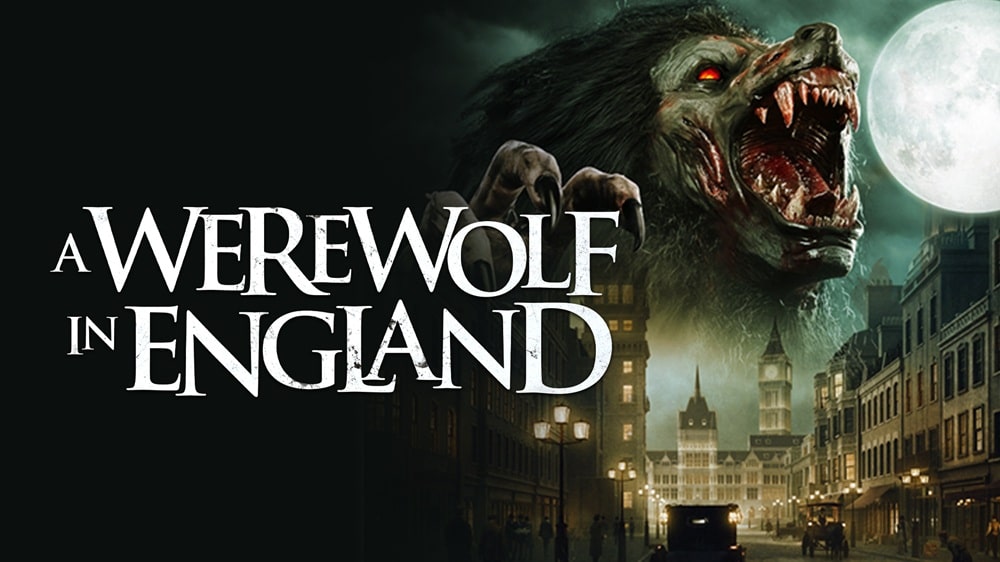 A Werewolf in England (Dark Temple Motion Pictures, 2020)
A Werewolf in England (Dark Temple Motion Pictures, 2020)
A 20 film marathon of werewolf movies I’ve never seen before.
As usual, the films must be free to stream.
I’ve got a bad feeling about this.
A Werewolf in England (2020) PrimeMan or beast? A bunch of hairy honkers.
Howlin’ good time? Hot on the heels of Werewolves Within comes another horror comedy, although this one doesn’t come close to succeeding. It starts well enough, with a title card font reminiscent of the best Bray Studios films, and some gravelly voiced dialects, but it soon regresses into a two-note gag reel of chamber pots and the contents of chamber pots.
Now, I like a good fart or poo joke as much as the next man, but the over-reliance on potty humor soon outstayed its welcome, despite a double dip into demonic diarrhea. There were moments that put me in mind of Motel Hell, but in the end the production was hampered by over saturation (seriously, filter that shit in post), poor sound design and strangely choreographed werewolves.
The beasts, more cuddly than terrifying, could have been really effective with lower lighting and more sparing framing. Oh well — it looked like everyone had fun, and it does feature the line, “I feel a tinglin’ in me nether giblets.”
6/10
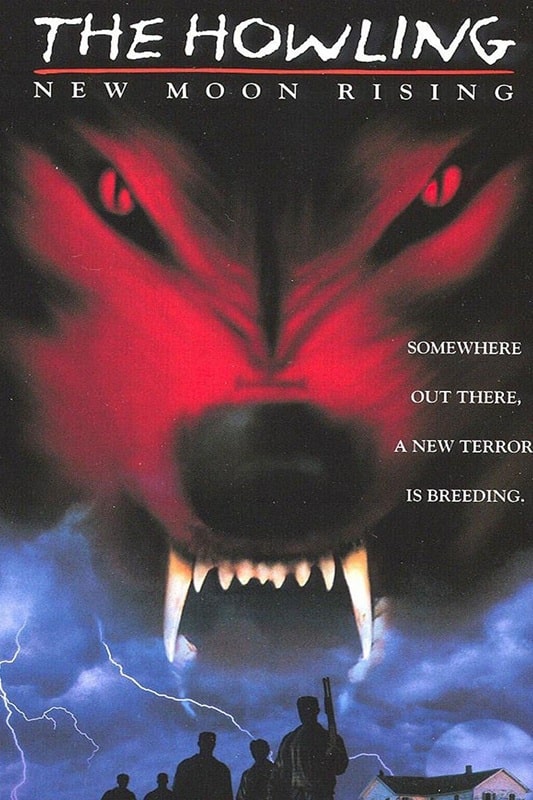
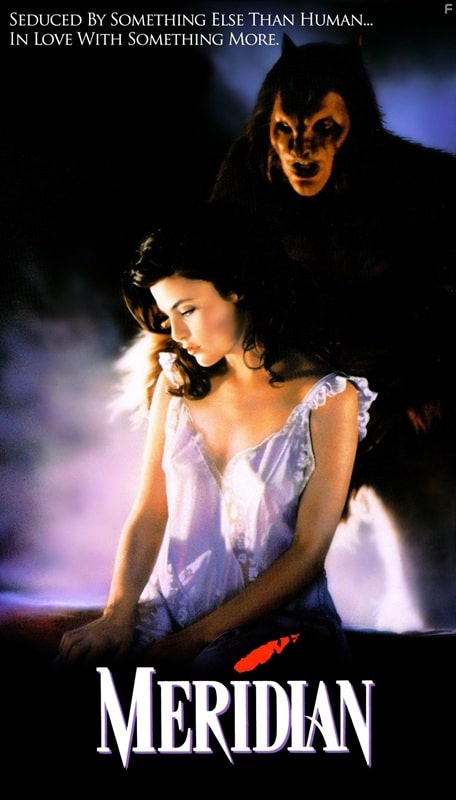
Howling VII: New Moon Rising (New Line Home Video, October 17, 1995)
and Meridian (Full Moon Features, April 13, 1990)
Man or beast? Rubbish practical/CG hybrid for all of 30 seconds at the end.
Howlin’ good time? Good people, if you’ve been reading these reviews, you’ll know I’ve watched some terrible films. You’ll also know that the worst thing a movie can do, in my opinion, is be boring. Forget the fact that this is horribly made, awfully acted, and weaves in footage from the last two films in an attempt to make sense of the story. The first hour of this mess is just unfunny bar regulars line dancing to country music while some bullshit ADR is shoveled on top of the steaming pile of plot. I honestly lost the will to live during this one. Settled for chewing my eyes out.
0/10
Meridian (1990) TubiMan or beast? Nice, practical, beast… wolf… thing.
Howlin’ good time? It’s a Full Moon feature, directed by Charles Band himself and although I think he’s a better producer, this is a nice looking film, suitably gothic for the subject matter. Meridian stars Sherilyn Fenn (and yes, I was a fully carded member of the Cult of Fenn in 1990) in a twist on the Beauty and the Beast story. In fact, it would have been a traditional, romantic ghost/beast story, if not for the unsavoury date rape that kicks off the whole affair.
The beast itself is a curious design, beautifully created by Greg (Lost Boys, Dracula) Cannom, who was definitely enjoying his ‘high brow’ phase. The prosthetics are great, and the body suit is well done; the huge hairy mass on its back is just one of a pair of extraordinary werewolf humps in the film. An interesting watch for purveyors of circus acts, nefarious twins and early 90s bosoms.
7/10
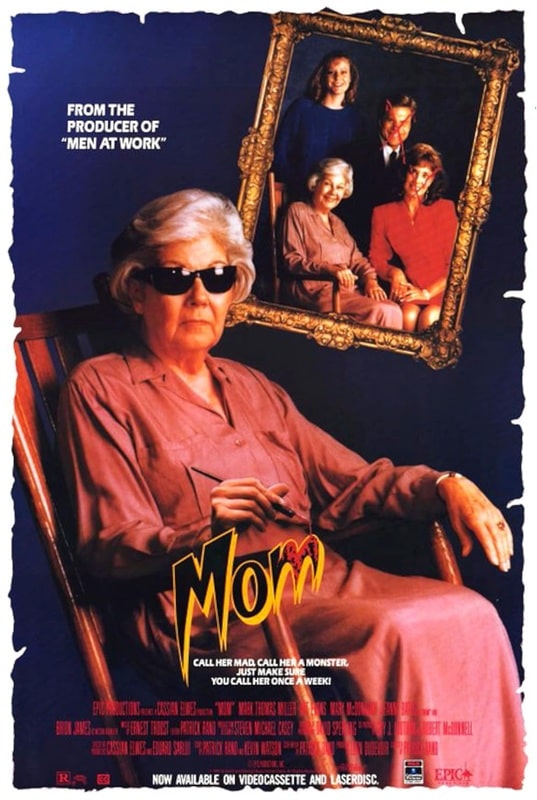
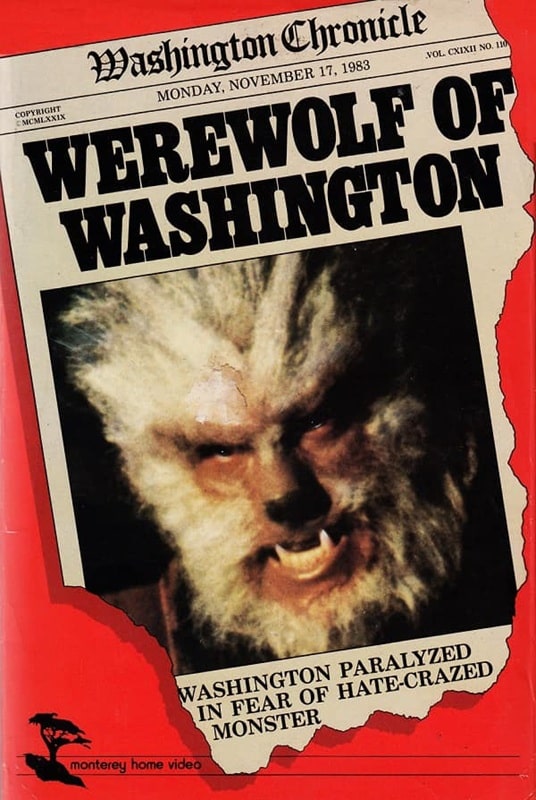
Mom (Epic Productions, June 13, 1991) and Werewolf of Washington (Diplomat Pictures, 1973)
Man or beast? Goofy were-thing.
Howlin’ good time? A 1990s horror film that is so 1990s it hurts. It starts well enough, with the wonderful Brion James as a shady, yellow-eyed drifter being aggressively creepy, and there’s a potentially excellent story to be had when our hero has to deal with his dear old mom turning into a werebeast and eating winos, but it’s not quite as exciting as I had hoped for. The creature itself is only seen in head and shoulder flashes and, although the mid-transformation make up is cool, the final creature looks goofy as all hell — we are talking Rawhead Rex goofy.
Fair to middling.
6/10
Werewolf of Washington (1973) TubiMan or beast? Hairy faced fella.
Howlin’ good time? It’s a scandal that I haven’t seen this before, but I’ve corrected that oversight. Not what I was expecting, this is a political satire wrapped up in a traditional lycanthrope yarn and it’s played for laughs. Skewering Nixon and Watergate, in this flick Dean Stockwell superbly grimaces and gurns as he changes each full moon and makes a meal of the president’s rivals. It’s basically All the President’s Wolfmen. Some genuinely funny moments (a witty script) and remarkable lapses into cinema verité elevate this hokey, bloodless romp into a film that I suspect I shouldn’t have enjoyed as much as I did.
7/10
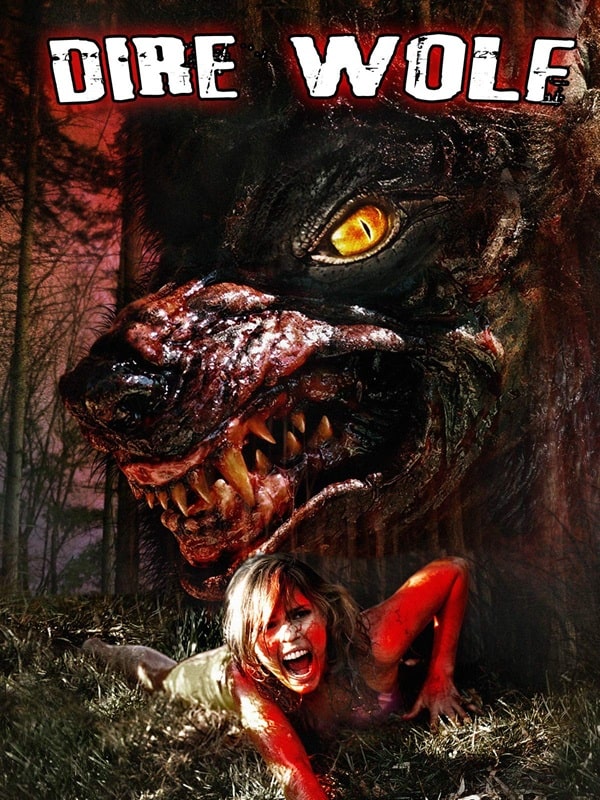 Dire Wolf (Baby Steps Entertainment, 2009)
Dire Wolf (2009) Tubi
Dire Wolf (Baby Steps Entertainment, 2009)
Dire Wolf (2009) Tubi
Man or beast? Wolf/human hybrid.
Howlin’ good time? Bit of a cheat for no. 13, as it’s not strictly a werewolf, but a lab experiment gone wrong. Nothing remarkable about it; it’s typical SyFy fare, a couple of has-beens surrounded by lacklustre actors in a daft plot, with a surprising amount of practical gore. It’s instantly forgettable. However, it did prompt an extraordinary dive into the career of Fred Olen Ray, whom I only really knew for Alienator and Hollywood Chainsaw Hookers. I’m linking the Wikipedia page for his filmography here, as it’s quite the rabbit hole.
Anyhoo – 5/10
Previous Murkey Movie surveys from Neil Baker include:
There, Wolves: Part I
What a Croc
Prehistrionics
Jumping the Shark
Alien Overlords
Biggus Footus
I Like Big Bugs and I Cannot Lie
The Weird, Weird West
Warrior Women Watch-a-thon
Neil Baker’s last article for us was There, Wolves: Part I. Neil spends his days watching dodgy movies, most of them terrible, in the hope that you might be inspired to watch them too. He is often asked why he doesn’t watch ‘proper’ films, and he honestly doesn’t have a good answer. He is an author, illustrator, outdoor educator and owner of April Moon Books (AprilMoonBooks.com).






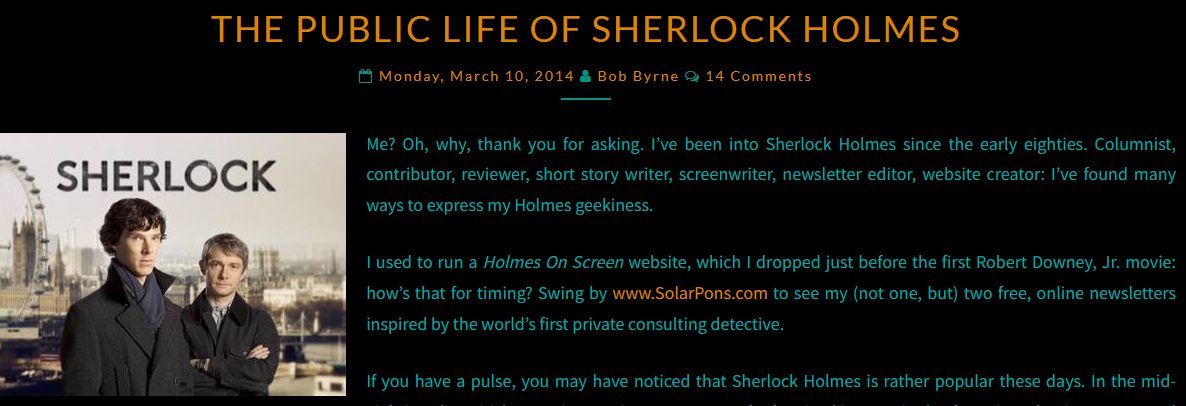
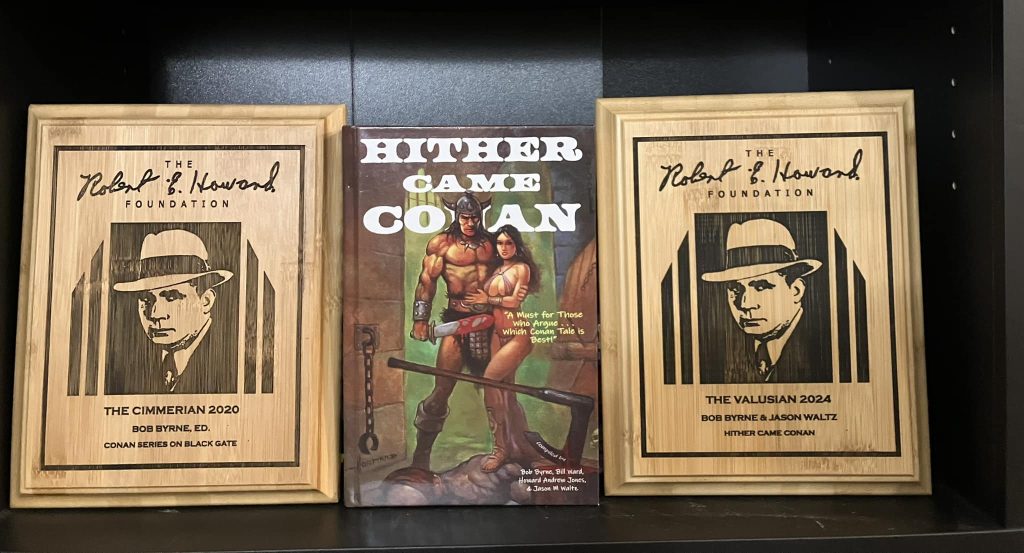

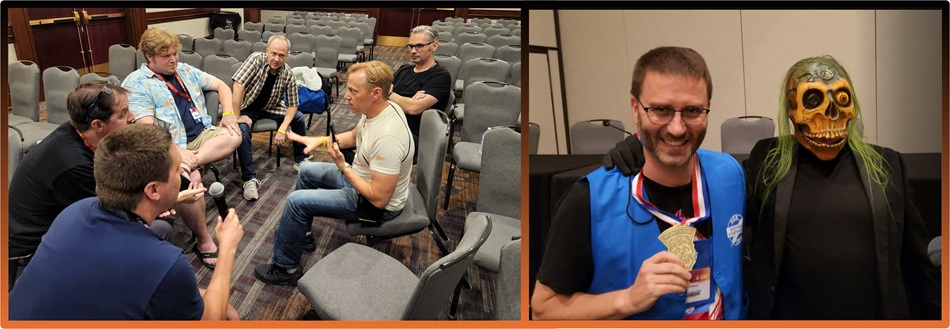
Recent comments